





FACILITIES MANAGEMENT JOURNAL VOLUME 31 | 01 DECEMBER/JANUARY 2023 HYGIENE Preparing for flu season SMART BUILDINGS Power of digital maintenance 38 30 ACCESS SOLUTIONS Case study on the Skyliner skyscraper 26 O cial magazine INTERVIEW: James Massey MD of Facilities Management at MRI Software A FINE BALANCE How FM has adapted to this year’s challenges while it prepares for the next

kpm media Unit 1 Mill Place, Platt Business Estate, Maidstone Road, Sevenoaks, Kent TN15 8TB Tel: 01322 662289
Editor Sara Bean sara.bean@kpmmedia.co.uk
Assistant Editor & Social Media Development

Sarah O’Beirne sarah.obeirne@kpmmedia.co.uk Tel: 01322 476815
Director & Designer Warren Knight warren.knight@kpmmedia.co.uk Mob: 0780 1947757
Sales Director Danny Grange danny.grange@kpmmedia.co.uk Mob: 07867 418994
Business Administrator Sami Smith sami@kpmmedia.co.uk
Accounts Trish Boakes accounts@kpmmedia.co.uk Group CEO Nigel Copp nigel.copp@kpmgroup.co.uk
Editorial steering committee
Alan Hutchinson, Facilities Director, Howard Kennedy LLP
Charles Siddons, Head of Operations, NHS Property Services
Darren Miller, NBCUniversal, VP for International Workplace, Facilities & Real Estate
Ian Wade, Head of UK Estates, British Medical Association
Lucy Hind, Senior FM Lecturer, Leeds Beckett University
Marie Johnson, Head of Workplace & Wellbeing, Nominet

Russell Wood, Facilities Manager at Dentsu Aegis Network
Russell Burnaby, Head of FM, Regeneration and Environment, Brent Council
Simon Francis, Director of Estates and Facilities, The Institute of Cancer Research
Simone Fenton-Jarvis, Workplace Consultancy Director at Relogix
Stephen Bursi, Facilities Lead, BAE Systems
Wayne Young, Facilities Manager
East Takeaway.com
kpm media adopts a sustainable policy of using paper from managed forests. Printed in the UK by The Gemini Print Group www.gemini-print.co.uk
Copyright 2022/23 kpm media
The publisher does not necessarily agree with the views and opinions expressed by contributors. No material may be reproduced in part or whole without written permission from the editor. Editorial contributions are accepted on an all-rights basis only. Letters to the editor may be published in their entirety or in edited form and remain the property of kpm media. While due care is taken to ensure the accuracy of information contained in this magazine, the publishers cannot be held responsible for any errors in editorial articles or advertisements. Subscriptions are available to non-qualifying and overseas readers at £120 p.a. (UK), £160 p.a. (EU countries) and £240 p.a. (overseas-other).
this month...
comment
This year, as we emerged from the pandemic, it was hoped that life would get easier, but it wasn’t to be. Instead we’ve been hit by a wave of political, environmental and economic upheaval, including a war in Ukraine, political turmoil, extreme climate events and a cost of living crisis which hasn’t been experienced in two generations.
All these factors are having a huge influence on all aspects of our lives and of course how we manage our workplaces. We’ve noted this year that the trend of hybrid working hasn’t abated, despite government e orts to persuade us that working from home is harmful. The jury is still out on that one, but according to our editorial steering panel members who we met up with recently to discuss trends going into next year, hybrid working patterns are now firmly embedded in the workforce.
In fact, they told us that working from home is now seen as a right, rather than a privilege. The result is that a lot of unused space may need to be freed up next year. From an FM perspective however, catering facilities remain a draw and our FMs agreed that they are a proven way of attracting primarily home-based workers back into the o ice.
Unsurprisingly, sustainability remains a huge part of the FM remit, and ties into how workspace is utilised and how lighting, heating and catering must be adjusted to allow for fluctuations in building occupancy. So rounding o the year and looking forward to the next, this issue focuses on smart buildings.
We cover the benefits of using smartphone-based solutions to help manage access and occupancy levels, how digital maintenance can improve building performance and where smart fire and security systems can help keep buildings safe. Encouragingly, all these innovations may help FMs not just cope with the current crisis but plan e ectively for the future.

As always, we’d welcome your feedback about any aspect of the magazine, together with your insight into what’s happening in the FM sector.
sara.bean@kpmmedia.co.uk
DECEMBER/JANUARY 2023 3 FMJ.CO.UK
©
Total Average Net Circulation 10,682 July 2021 to June 2022 SUPPORTED BY
Just
FACILITIES MANAGEMENT JOURNAL JOBS Find your next role with the FMJ Jobboard Visit jobs.fmj.co.uk for hundreds of roles in FM and associated industries jobs. fmj.co.uk EDITORIAL COMMENT
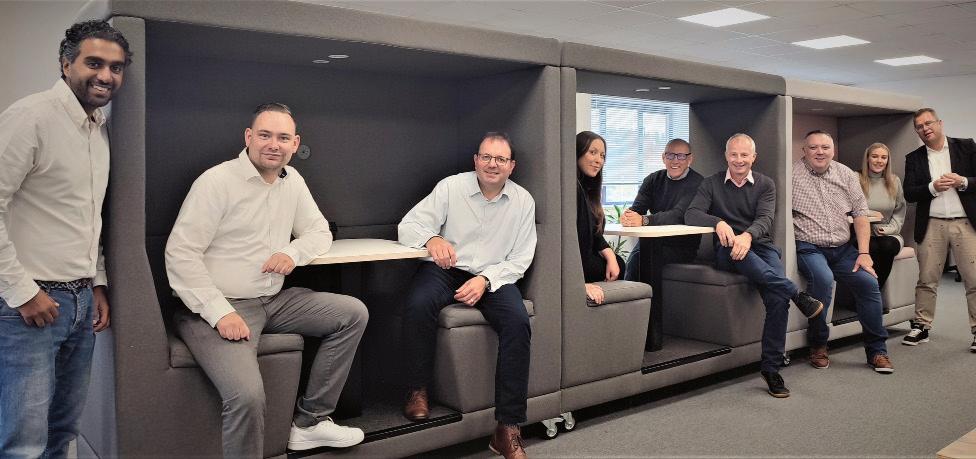


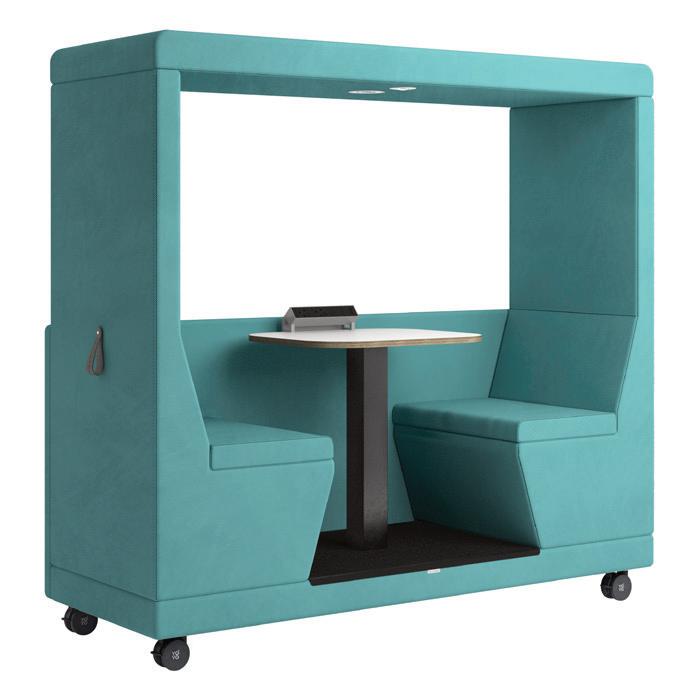
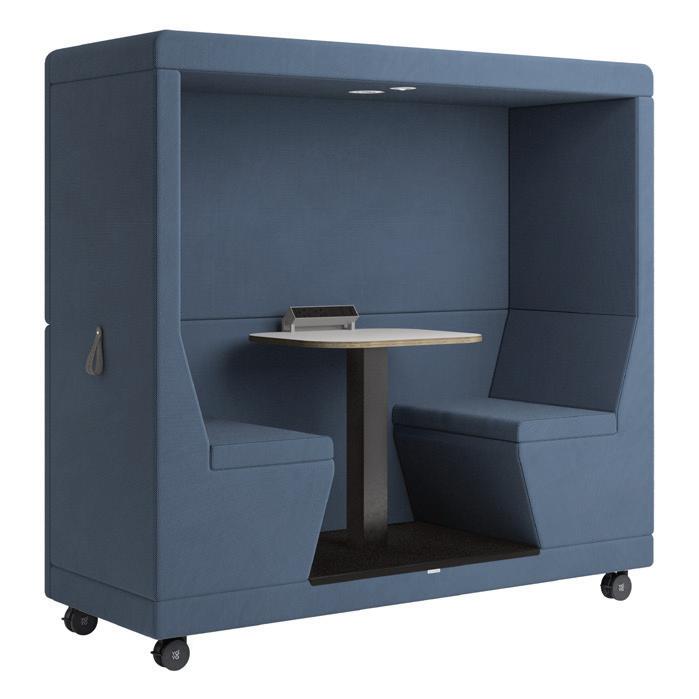







All Aboard the Yo-Yo POD® Mobile , Modular & Multifunctional acoustic booth Mobile meeting pod. Keep Moving it For meetings, focus work, zoom calls Configurable for 2, 4 or 6 people Fabrics made from 100% recycled materials Warren Fitzpatrick Sales Director +44 (0)1793 575 082 www.yo-yopod.com warren@yo-yodesk.co.uk OPEN HALFBACK FULLBACK From ex TAX £4,999 Mobile Move around with ease and safety Modular Flexible options, interchangeable Fast Delivery Available in 7–8 weeks Made in Britain ISO 9001, ISO 14001 & FISP Sustainability FSC Certified. 100% recycled materials All Aboard the Yo-Yo POD® Mobile , Modular & Multifunctional acoustic booth Mobile meeting pod. Keep Moving it For meetings, focus work, zoom calls Configurable for 2, 4 or 6 people Fabrics made from 100% recycled materials Warren Fitzpatrick Sales Director +44 (0)1793 575 082 www.yo-yopod.com warren@yo-yodesk.co.uk OPEN HALFBACK FULLBACK From ex TAX £4,999 Mobile Move around with ease and safety Modular Flexible options, interchangeable Fast Delivery Available in 7–8 weeks Made in Britain ISO 9001, ISO 14001 & FISP Sustainability FSC Certified. 100% recycled materials All Aboard the Yo-Yo POD® Mobile , Modular & Multifunctional acoustic booth Mobile meeting pod. Keep Moving it For meetings, focus work, zoom calls Configurable for 2, 4 or 6 people Fabrics made from 100% recycled materials Warren Fitzpatrick Sales Director +44 (0)1793 575 082 www.yo-yopod.com warren@yo-yodesk.co.uk OPEN HALFBACK FULLBACK From ex TAX £4,999 Mobile Move around with ease and safety Modular Flexible options, interchangeable Fast Delivery Available in 7–8 weeks Made in Britain ISO 9001, ISO 14001 & FISP Sustainability FSC Certified. 100% recycled materials
THIS MONTH...

FMJ NEWS
This month’s summary of everything that has hit the headlines in the FM sector.
ASSOCIATION NEWS
The latest news and views from IOSH and IWFM.





EVENT REPORT
The London Design Festival celebrated an impressive 20 years in 2022, with a mix of museum exhibits, installations, exhibitions and talks programmes.
CASE STUDY – ACCESS SOLUTIONS


explains how smart fire and security systems can help keep buildings safe and secure.


WORKPLACE TEMPERATURE

34 What is the ideal o ice temperature in the UK and how does it compare to other less temperate regions of the world? Marina Vassilopoulos reports on behalf of PSG Global.
HYGIENE
38 Peter Whyte of Integral on how o ice cleaning has adapted to changed workplace demands; and hygiene experts o er advice on dealing with flu season.
FLOORING

MAINTENANCE
digital maintenance combined with an actionable maintenance plan can drive better building performance, says Chris Coath, Director of Energy and Asset Management at NG Bailey.
Neil Coles, Senior Strategic Relationship Director at Chubb Fire and Security,

Creating exciting, welcoming and productive workspaces can help encourage the return of workers to the o ice, says Lewis Cooper of Forbo Flooring Systems.

INTERVIEW
42 James Massey MD of Facilities Management for MRI So ware brings us up-to-date on the FSI rebrand and the burgeoning FM so ware market.
SUSTAINABILITY
COMMENT
With more than one billion tons of food lost or wasted every year, workplaces must play their part to be more food e icient, says Hamish Cook, Head of Group Food Services, ISS.
COMPLIANCE
Changes in electrical safety laws in England, Scotland and Wales may come as a surprise to some commercial and private landlords, says Tracy Burtwell, MD of phs Compliance.



FAST FACTS
Connected data-driven management solutions can create sustainable, e icient, healthy and cost-e ective buildings, says Jamie Cameron of Johnson Controls.
BLOG & SOCIAL MEDIA


Neil Grundon, Chairman of Grundon Waste Management believes better management of Scope 3 emissions is essential for FMs. FM
CLINIC
2022 brought fresh challenges for FMs, including inflation, rising energy prices, hybrid working practices and skills shortages. How has the sector adapted to these challenges and what are the main issues to watch out for in 2023?

RECRUITMENT
Churchill’s Louisa Clarke on the positive contribution veterans can make to FM and how the Veterans Advisory Board is helping former service people transition to civilian life. TRAINING
Sarah Hale, Social Value Manager at Amey, explains why it’s important to put essential skills at the heart of young people’s training programmes.
CAREERS NEWS
For the UK to accelerate the adoption of Electric Vehicles, it needs a charging infrastructure to meet demand. FMs hold the key say David Harris of VINCI Facilities.
Next Edition
For our February wellbeing focus, we present some of the key findings from a report published by Claremont on the theme of balance: plus, we present ergonomic advice on o ice designs that promote healthier movement. We talk to the Chair of the Automatic Vending Association on the expansion of the automated food and beverages sector and ask catering suppliers and clients how they plan to tackle higher costs and hybrid working while staying sustainable. We look at how the 11 recommendations for Government, regulators and the cleaning industry in the APPG report: ‘Embedding E ective Hygiene for a Resilient UK’ have been received. And there is an interview with Sue Asprey Price who leads the Work Dynamics business for JLL in EMEA. To register for your free copy of FMJ visit fmj.co.uk

DECEMBER/JANUARY 2023 5 FMJ.CO.UK
40
46
55
PEOPLE
Find out who’s moving where in the facilities management profession.
57
56
58
A brief roundup of the latest careers news in the facilities management sector.
26
Jaroslav Barton of HID says the uptake of smartphone-based solutions o er tangible benefits, as seen in a case study on the Skyliner skyscraper in Warsaw, Poland.
30
SAFETY 32
FEATURES 26 FM CAREERS 56
Smart
sara.bean@kpmmedia.co.uk
47
MIFM
New product and service launches and company news from the FM industry.
12
14
16
18
20
14
ADVICE AND OPINION NEWS & ANALYSIS
06
08
10
CONTENTS Follow us on Facebook and Twitter @FMJtoday
LEGAL VIEW
DIRECTORS COULD FACE JAIL IF
PREVENT’ MONEY LAUNDERING
David Duffy,
The new Economic Crime and Transparency Bill means companies are criminally liable – not just for active foul play, but also for not actively preventing it, which is why board-level education and engagement is now even more important.
The Economic Crime and Transparency Bill (ECTB), at its third reading in the House of Commons at the time of writing, is the UK government’s attempt to tackle money laundering and financial crime. It comes in the wake of Russia’s invasion of Ukraine, and the common realisation of just how much dirty Russian money is in the UK.
In 2018, the French economist Thomas Piketty estimated that more than half of Russians’ total wealth is held offshore in UK tax havens to then be spent in the UK. This totals an estimated £597 billion, and is held by a tiny number of people, “perhaps just a few hundred”.
Transparency International UK now estimates that £6.7 billion in “questionable funds” has been invested in UK property since 2016. Of this total, £1.5 billion worth of property was bought by Russians accused of corruption or links to the Kremlin.
It is now no secret that the UK is the international laundering capital for dirty, particularly Russian, money – and often used as a gateway to the West. Although the ECTB aims to tackle this endemic issue, its impact will by no means be limited to oligarchs, warlords, and organised crime leaders.
How the ECTB impacts legitimate UK business
The Economic Crime and Corporate Transparency Bill, according to Gov.uk, will include:
· Reforms to Companies House.

· Reforms to prevent the abuse of limited partnerships.
· Additional powers to seize and recover suspected criminal cryptoassets.
· Reforms to give businesses more confidence to share information in order to tackle money laundering and other economic crime.
· New intelligence gathering powers for law enforcement and the removal of nugatory burdens on business.
This bill is a massive reform to how the UK business community will have to operate. One of its main impacts, in terms of governance, will be that directors will have both a positive and negative responsibility to tackle financial fraud of any shade. This means they will not only face criminal punishment for active criminality, but also for a lack of due diligence in order to prevent their company from committing fraud.
For directors, this means:
· Their level of personal legal responsibility in financial crime cases will increase.
· They could be liable if authorities can prove that their company facilitated financial crime.
· They could go to jail in such a situation.
· It also means that their career as a non-executive director would be over if they were found to be culpable. A director only has one reputation, so it needs to be protected.
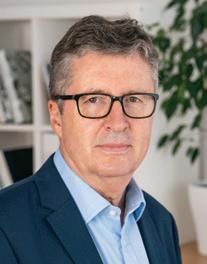
Engagement and education are key
If this bill passes into the Economic Crime and Transparency Act, everyone on a company board will be mutually responsible for stopping money laundering, fraud of any shade, or even limited partnerships with a bad actor’s company. Unless everyone pays attention, everyone is at risk.
A rigid, transparent and holistically sound company from top to bottom is, of course, preferable. However, that is no immediate fix. In the meantime, boards need to be educated on the topics that matter to a modern business; digital transformation, cybersecurity, Environmental Social Governance, and now fraud and the impacts of ECTA. Here, providers of further education for business leaders can offer university-accredited diplomas.
Secondly, board members and directors need to be fully engaged in their boardroom responsibilities. Only then can potential bad actors or economic crime (intentional or otherwise) be spotted and stopped.
APPG REPORT ON COVID-19 PANDEMIC CALLS FOR CLEANING STANDARDS
new report by MPs into the role of cleaning and hygiene during the COVID-19 pandemic has called for the introduction of minimum standards for hand and other hygiene infrastructure and cleaning of venues to help make sure the nation is better prepared for any future public health emergency.
All-Party Parliamentary Group (APPG) for the Cleaning and Hygiene Industry has published its report ‘Embedding E ective Hygiene for a Resilient UK’ which includes 11 recommendations for Government, regulators and the industry itself.
A joint Government-industry preparedness team should be established to draw up a plan for cleaning and hygiene requirements in time of emergency
Based upon the plan, minimum levels of the cleaning materials and equipment most commonly called upon in emergencies should be defined and their availability ensured
Government and the cleaning product supply industry should investigate how to increase production capacity in any pandemic
It should be agreed that in any future pandemic, Key Frontline Worker status must be bestowed upon commercial cleaning and hygiene operatives working in defined key venues and also personnel in the cleaning products production and supply sectors
Urgent consideration must be given to making cleaning sta eligible for the Skilled Worker Visa scheme
A defined set of high-level minimum standards for hand and other hygiene infrastructure and of the depth and frequency of cleaning of diverse venues should be agreed between Government/regulators and the cleaning and building management industry 7. A standard qualification for cleaning should be developed within the Apprenticeship Levy to improve the quantity, quality and career prospects of people entering the cleaning industry 8. Training budgets for cleaning sta within both public and private enterprises to be adequate 9. Government communications about hygienic practice and behaviour in times of pandemic or other emergency to be clear, consistent, sustained, timely, relevant and specific 10. A Government-led communications campaign should be deployed to widen and deepen public understanding of hygiene and establish a norm of adopting hygienic behaviour as part of everyday life. 11. The Government should support the cleaning and hygiene industry to promote a realignment in perceptions of the industry.
MENTAL ILL HEALTH
ACCOUNTS
FOR HALF OF HSE’S ANNUAL STATISTICS
Stress, depression, and anxiety make up around half of cases of work-related illness, according to the annual Health and Safety Executive (HSE) statistics on work-related ill health and workplace injuries. The figures from Great Britain’s workplace regulator show there were an estimated 914,000 cases of work-related stress, depression, or anxiety in 2021/22.
An estimated 17 million working days were lost due to work-related stress, depression, or anxiety in 2021/22. This is over half of all working days lost due to work-related ill health. HSE’s annual statistics release shows the impact work-related ill health is having on Great Britain’s economic performance:
• Eight million working days were lost due to work-related ill health and non-fatal workplace injuries in 2021/22.
• The annual economic cost of work-related injury and new cases of ill health (excluding long latency illnesses such as cancer) was £18.8 billion in 2019/20.
• The figures also show that 123 workers were killed in work-related accidents in 2021/22 and a further 565,000 workers sustained a non-fatal injury.
The COVID-19 pandemic continues to impact on the workplace. Of the 1.8 million su ering a work-related illness, an estimated 585,000 reported it was caused or made worse by the e ects of the Coronavirus pandemic. Around a quarter of these workers were in human health and social work. In addition, 123,000 workers su ering with COVID-19 believed they were exposed to the virus at work.
DECEMBER/JANUARY 2023 6
1.
2.
3.
4.
5.
6.
A
The
THEY ‘DON’T
CEO and Co-Founder of the Corporate Governance Institute
NEWS & ANALYSIS FMJ.CO.UK
Sustainability in
FM: SFMI publishes Summary Report 2022

The Sustainable Facilities Management Index (SFMI) 2022 Assessments have revealed that leading facilities management companies are ahead of the curve for Scope 3 Emissions.
SFMI reports that one third are now starting to use live supply chain data, as opposed to solely estimated data, in their calculations, which is a 290 per cent increase in the last two years.

The SFMI assessments found that organisations are starting to measure and understand the importance of their supply chain impacts. In the FM sector, Scope 3 emissions account for around 70 per cent of an organisation’s carbon emissions, and so mapping and reducing these emissions is critical to support FM’s journey to net zero.
There has been significant progress, with the revision of Science Based Targets to better define the terminology surrounding Net Zero, and an appreciation of the complexities surrounding reporting of upstream and downstream emissions, according to the SFMI, which says all too often, organisations are caught in a ‘say-do’ gap, with pressure to emulate peers for headline grabbing long term targets when the bulk of the changes needs to happen within this decade.
To download the summary visit https://www.acclaroadvisory.com/wp-content/ uploads/2022/11/AcclaroSFMI-2022-v.7.pdf
‘Delivering
The report, informed by over 100 o ice occupiers and building professionals, outlines the measures that can be taken to overcome these barriers – at low or zero cost. These include:
• Greener and longer leases, with o ice occupiers having more say over refurbishments
• Greater collaboration and data sharing between building owners and occupiers
• Submetering and the use of sensors to measure exactly where energy is used



• Use of prefabricated, reused and recycled materials and furniture
Achieving net zero carbon emissions is a major component of Environmental, Social, and Governance (ESG) strategies in the commercial real estate sector, driven by a growing expectation from businesses, their customers and ultimately the public, to respond to the e ects of climate change. The current energy crisis that began in 2022 is also focusing minds and investment on improving energy e iciency.
Yet improving the energy performance of o ices is challenging, particularly as 50 per cent of the o ice building stock in the UK is tenanted
– meaning there is little consistency even within single buildings as to how workspaces are designed and used. Only 12 per cent of building professionals and o ice occupiers consulted for the BCO’s report believe that operational carbon targets are currently being achieved by those involved in designing and developing o ice buildings.
For the o ice sector to move from ambition to tangible action, there is an urgent need for robust benchmarks and verifiable data, as well as government requirements and incentives to support businesses’ ESG objectives and facilitate the transition to net zero.
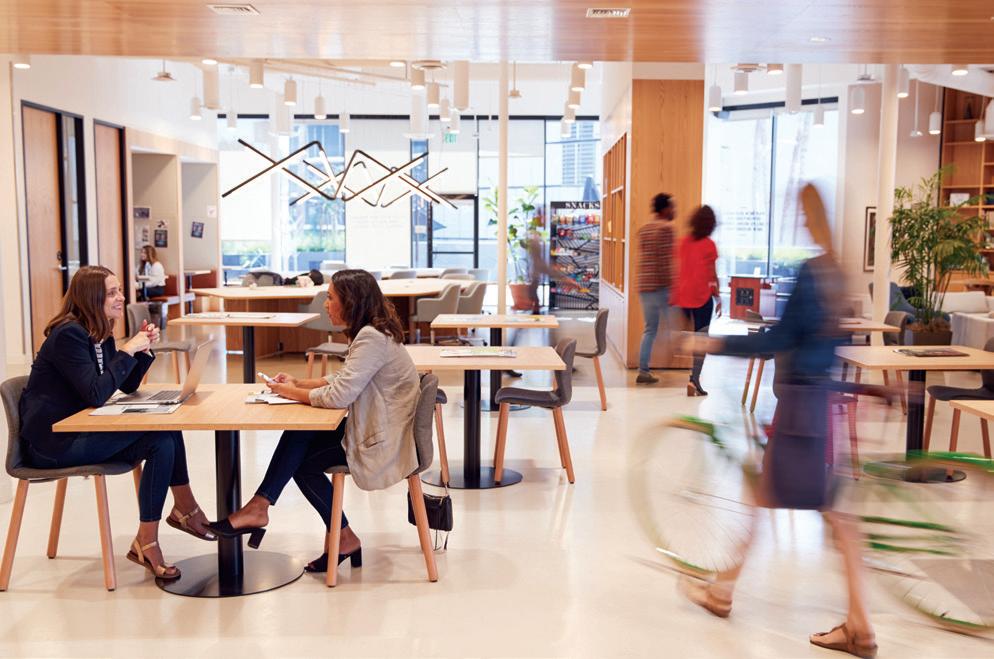
23-24 JANUARY 2023 Facilities Management Forum Radisson Hotel & Conference Centre www.facilitiesmanagementforum.co.uk 21 FEBRUARY 2023 Workplace Futures Conference One Great George Street, London, SW1 www.workplace-futures.co.uk 27-28 FEBRUARY 2023 Workspace Design Show Business Design Centre, London https://workspaceshow.co.uk 07-09 MARCH 2023 Futurebuild ExCeL, London https://www.futurebuild.co.uk/ 14-16 MARCH 2023 The Cleaning Show 2023 ExCeL, London https://cleaningshow.co.uk/london 15-16 MARCH 2023 WHA Conference and Trade Show DoubleTree by Hilton, Milton Keynes https://twha.co.uk/conference/ 22-23 MARCH 2023 World Workplace Europe Schiecentrale, Rotterdam, Netherlands https://worldworkplaceeurope.ifma.org/ 02-04 MAY 2023 UK Construction Week London ExCeL, London www.ukconstructionweek.com 14 JUNE 2023 SMARTBUILDINGS 23 London https://worktechevents.com/events/ smartbuildings23-london/ 16-18 MAY 2023 www.facilitiesshow.com DATES FOR THE FM DIARY DECEMBER/JANUARY 2023 7 If you have any knowledge of FM news from across the world, please feel free to get in touch with our assistant editor Sarah O’Beirne email sarah.obeirne@kpmmedia.co.uk OFFICE SECTOR WARNED IT MUST MAKE MAJOR CHANGES TO ACHIEVE NET ZERO GOALS Anew report produced by University College London for the British Council
calls for greater collaboration and data-sharing between o ice building owners and occupiers if they are to reach net zero
for O ices
targets.
Net Zero Carbon in the Workplace‘ identifies the barriers that businesses are facing as they strive to drastically reduce their workplace carbon footprint.
FMJ.CO.UK NEWS & ANALYSIS
OCCUPATIONAL SAFETY AND HEALTH (OSH) IS THE FIFTH PILLAR OF UNIVERSAL HUMAN RIGHTS
The new President of the Institution of Occupational Safety and Health (IOSH) has called on its members across the globe to step up to the fact occupational safety and health (OSH) is now recognised as the fi h pillar of universal human rights.

Speaking on being confirmed as the 56th IOSH President in its 77-year history, Lawrence Webb cited the International Labour Organization (ILO) adoption, last June, of a safe and healthy work environment as a fundamental principle and right as an inspiration to OSH professionals to do “remarkable things” for a safer, healthier global workplace.
“This move from the ILO meant the world, never mind the world of health and safety, will never be the same again and I urge all those responsible for OSH to be inspired by this,” said Webb.
Putting the emphasis firmly on prevention, the new President urged IOSH’s 49,000 members from more than 130 countries to be courageous:
“Let’s grasp the nettle and commit ourselves to denying potential hazards any chance to fester in workplace by removing them at source – we can do this by forging a clear, ambitious mindset, one that thinks not in terms of the management of risk but its eradication.
“But, yes, we’ll have to be bold to do this; we’ll need to challenge and influence those at the highest levels of business and employment, those making the big decisions with the greatest impact on workers’ safety and health,” he added.
Webb, also Group SHE Strategy Director at Costain, believes this emboldened approach will be further fuelled and sustained by the next generation of OSH professional, “fresh new talent with not only the ambition and dynamism to force health, safety and wellbeing into the world’s boardrooms, but also bring it further forward in our global public consciousness.

“We have to convince career starters to see OSH as their first profession; and we have to boost IOSH stakeholder relationships and support our membership, creating clear pathways for progression through our membership structure.”
The new President also stressed the need to help new OSH professionals prove themselves and their capabilities in the workplace, further
building the respect and reputation OSH will need for it to be most e ective. Vowing continued IOSH investment in its dynamic Future Leaders community, he highlighted support for members’ development through the newly launched ‘Opportunity starts here’ programme, as well as IOSH further growing its presence in schools, colleges and universities.
Webb also committed IOSH to “continuing to tender the neurodiversity of all people”, something he sees as being key to both the profession and IOSH reaching their full potential by following IOSH’s own Catch the Wave fundamentals of social sustainability.
“The COVID-19 pandemic has seen the stock of the OSH profession rise to new heights, with an enhanced awareness of the value we bring to business and society,” he added.

“Let’s use and build on this hardwon credibility to support and influence all those who can help create a safer, healthier world of work.”
LEADING CHANGE IN 2023


ompounding challenges was the context and Cornwall’s stunning Eden Project was the setting in November when I joined over 1,000 leaders and influencers for Anthropy 2022: a gathering of minds sharing thought leadership, creativity, and inspiration for creating change, tackling long-standing issues, and building a better, more human-centric future in the postpandemic world. The conversations and ideas will be refined and presented as “A vision for Britain” report in 2023.
As CEO of IWFM, I was gripped by the challenge of identifying: “How can IWFM and the workplace and facilities management profession help as change agents?”
Thankfully, our profession has many opportunities to contribute and FM’s unique ability to bring functions together will serve us well if we
Ccan emulate the power of collective endeavour we saw from frontline services - including FMs - during the pandemic.
The pandemic caused many to reassess what they truly value in life; to help communities through plunging living standards, the profession can harness that spirit to drive social value while the Institute continues to impress on government and employers the need to pay a fair wage for a day’s work.
While there is a weariness around sustainability claims, I view this this as a healthy development because far too many choose rhetoric over action. Challenging this as we move towards 2050 will require FMs walking the walk: developing holistic strategies that deliver tangible, reliable, long-term results.
There is also an opportunity to collaborate as a sector towards benchmarking standards that reach beyond Scope 1 and 2 and clearly show the impact e ective FM strategies that cover the building and operational phases can make.

2023 will usher in big changes to building safety;
this presents the chance for our profession to be development and occupation phase leaders in protecting lives and assets. Through keeping up with the changes, applying the competence principles, and providing safety through digital solutions, FMs will not only save lives, but also explore an exciting market broadening opportunity to future-proof the profession.
A significant issue is our social media age fuelling a reactive mentality, with both our political and business structures frequently swinging from one direction to another. Short termism is the enemy to true change because real progress is built on steady but routine development. And with so many calls on our attention, so many potential avenues to explore, our profession’s tradition of balancing what’s needed now and what comes next puts us in a strong position to lead.
In Sir David Attenborough’s address to the Climate talks at COP26, he reminded us that humans are the greatest problem solvers ever to have existed on Earth. I believe that FMs are consummate problem solvers in organisations. That thought gives me hope for a future based on togetherness, collaboration, and cooperation.
DECEMBER/JANUARY 2023 8 ASSOCIATION NEWS
Lawrence Webb President of IOSH
NEWS & ANALYSIS FMJ.CO.UK
IWFM CEO, Linda Hausmanis
Colt can save you money and time.
Streamline your smoke control and damper maintenance management, while eliminating the need for secondary contractors and call-out charges. Colt can take care of all your smoke control and damper servicing needs in one package.
The benefits of a service contract with Colt.


Colt is the UK’s leading and largest supplier of smoke control maintenance and as such, we have the largest team of engineers stationed up and down the country. Our team is dedicated to delivering quality service 365 days a year, 24 hours a day.




Your legal obligation.
Fire and smoke dampers play a very important role in a building’s fire safety system and under the Regulatory Reform (Fire Safety) Order 2005, it is the legal duty of the ‘Responsible Person’ in your company to oversee their maintenance and testing. It is imperative that your dampers are maintained properly by a competent company.
Colt is just such a company.

As well as getting you the UK’s most competent engineers, the Colt service contract comes with a whole host of other valuable benefits.
One call is all it takes to find out more. Call 02392 491735, visit coltinfo.co.uk/service-maintenance.html or email service@uk.coltgroup.com
Choose Colt You may already have your smoke control system maintained by Colt. And other dampers serviced elsewhere. Service Expertise built on experience. Don’t pay twice for your dampers servicing. Call Colt once.
LDF 2022
LONDON DESIGN FESTIVAL
floor, ‘The Club’ is an o ice installation first tested at Vitra’s Swiss HQ, geared towards the post-pandemic needs of people and companies.
The Club at the Tramshed follows this initial template with a large bar and varied zones, demonstrating how the informal working and collaboration concept can be adapted to changing spatial conditions. ‘The Cottage’ - a space given over to hosting events and meetings located on the first floor of the Tramshed is to open in 2023.
Among the highlights of the festival was a thoughtprovoking discussion on the Power of Partnerships held at a site within Borough Yards, the large-scale new retail and hospitality district located adjacent to the historic Borough Market in London Bridge.
Hosted by BDG architecture + design and lighting designers and manufacturers FUTURE Designs, it focused on the importance of collaboration and its countless benefits and e iciencies when all parties are engaged and working towards a common goal from the earliest time in the project duration. From a facilities perspective, this impacts how commercial building projects are run, managed and evaluated.
Colin Macgadie, BDG’s Chief Creative O icer commented: “When we come up with conceptual ideas that are outside of the norm, the client understands, having worked together for so long, there’s a genuine purpose and meaning behind something being so unique.”
Using the example of the spectacular AERO313 luminaire, manufactured in the UK and delivered to Detroit during a global pandemic, as an example of what can be achieved with vision and empowerment, David Clements, Managing Director, FUTURE Designs
said: “If we’re involved early enough within the contract, I believe there are massive benefits in it,”.
To celebrate the development of AERO313, the only complete example in the UK was installed at Borough Yards, a temporary state-of-the-art design addition which has transformed a series of formerly disused warehouses, arches, and viaducts.
MATERIAL MATTERS
Further along the southern bank of the Thames was Material Matters, a show based on the critically acclaimed podcast by UK-based design, cra and architecture writer Grant Gibson. For the inaugural Material Matters, designers, makers and manufacturers explored the value of materials – particularly waste and our need for circularity and giving materials a new lease of life. Given the fact that the everyone from property investors and developers to the real estate teams including facility managers through to end users are reflecting on more sustainable choices, it prompted some pertinent points for discussion.
The show included installations, a marketplace and extensive talks programme, bringing together over 40 brands, designers, makers and organisations to celebrate the
importance of materials. These include Smile Plastics, which creates sustainable materials from ‘waste’ plastics collected from a variety of post-consumer and post-industrial sources, Norwegianbased brand, Fora Form, which specialises in creating spaces where people gather and SolidWool, which made a seat from a combination of Herdwick wool and bio-resin.
DESIGN LONDON SHOW
The Design London show, which returned to one of the London Design Festival’s newest design districts, Greenwich Peninsula featured the latest products from manufacturers, trend forecasts and panel sessions. This included a particularly pertinent one on the world of workspace. The ‘Life Changing Spaces’ session explored what we really need from a space to support our wellness needs with panellists Yaara Gooner, Head of Architecture and Design at LABS, Jo Littlefair, Director and Co-Founder of Goddard Littlefair, and Nadia Themistocleous, interior designer with Trifle.
Over in Shoreditch, Vitra showcased its new London HQ. During LDF visitors were able to see how the 920 square metre exhibition space was divided into three main areas. On the ground

Down the road into Clerkenwell, Italian furniture manufacturer Arper unveiled its latest collections which reflect how the boundaries between home and work have blurred. Launches include the Shaal sofa by Doshi Levien which appears to wrap around the user; the Aeeri table by Peter Kunz with its slender scuptural form resembling origami; Ghia low tables by Altherr Désile Park which infuse a sense of harmony and calm into any interior and the Oell side table by Jean-Marie Massaud which cleverly balances aesthetic qualities while neatly providing a comfortable surface for working.
Remaining in the EC1 postcode, Scandinavian design company O ecct unveiled three new designs by international designers including Teruhiro Yanagihara, Ronja Reuber and the late Pauline Deltour which were on display at the Flokk showroom. Yanagihara’s Sou sofa is based on a spatial perspective where the furniture works as a flexible jigsaw puzzle while German-born Ronja Reuber presented a stripped-down, geometric and playful bar stool.
Whether individual designers and manufacturers, or di erent professions showcasing the benefits of working together, at this year’s London Design Festival, collaboration really was the watchword.

NEWS & ANALYSIS FMJ.CO.UK DECEMBER/JANUARY 2023 10
The London Design Festival celebrated an impressive 20 years in 2022, with the usual mix of museum exhibits, installations, exhibition and talks programmes. Helen Parton reports
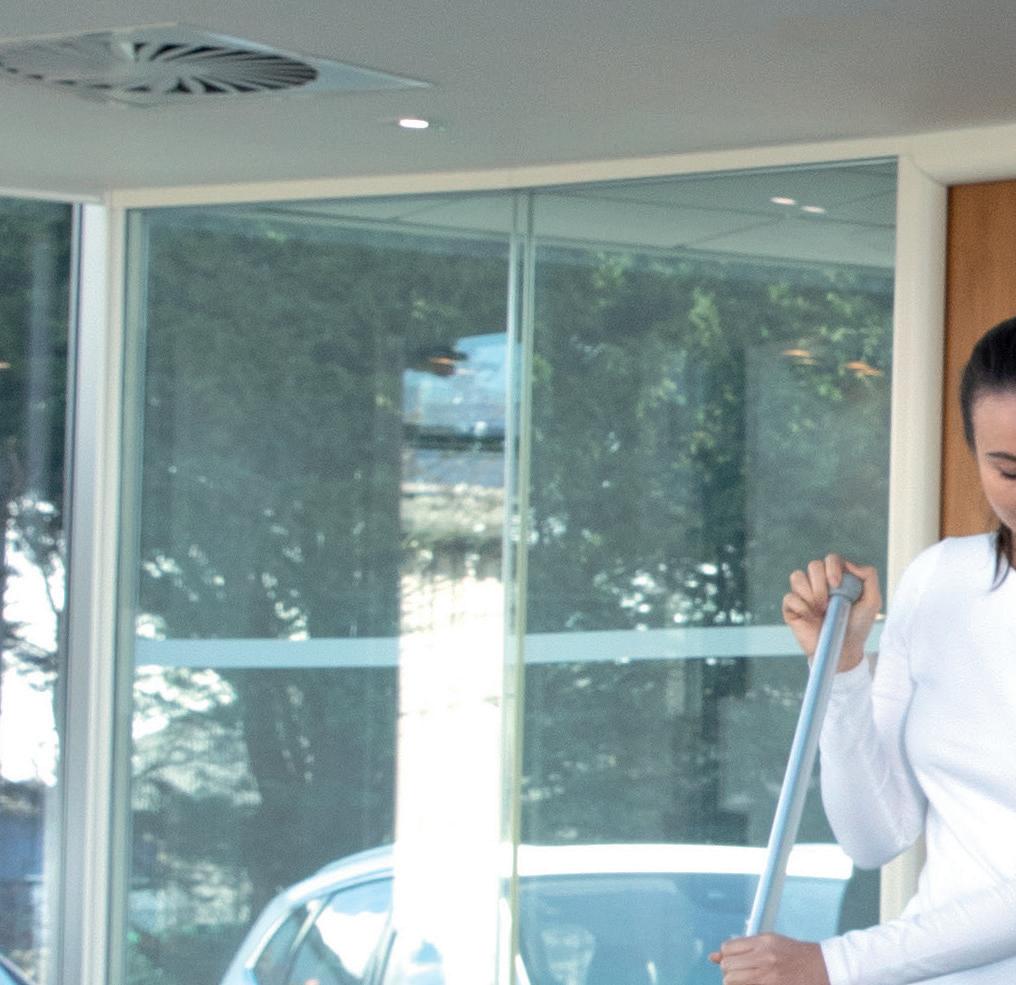


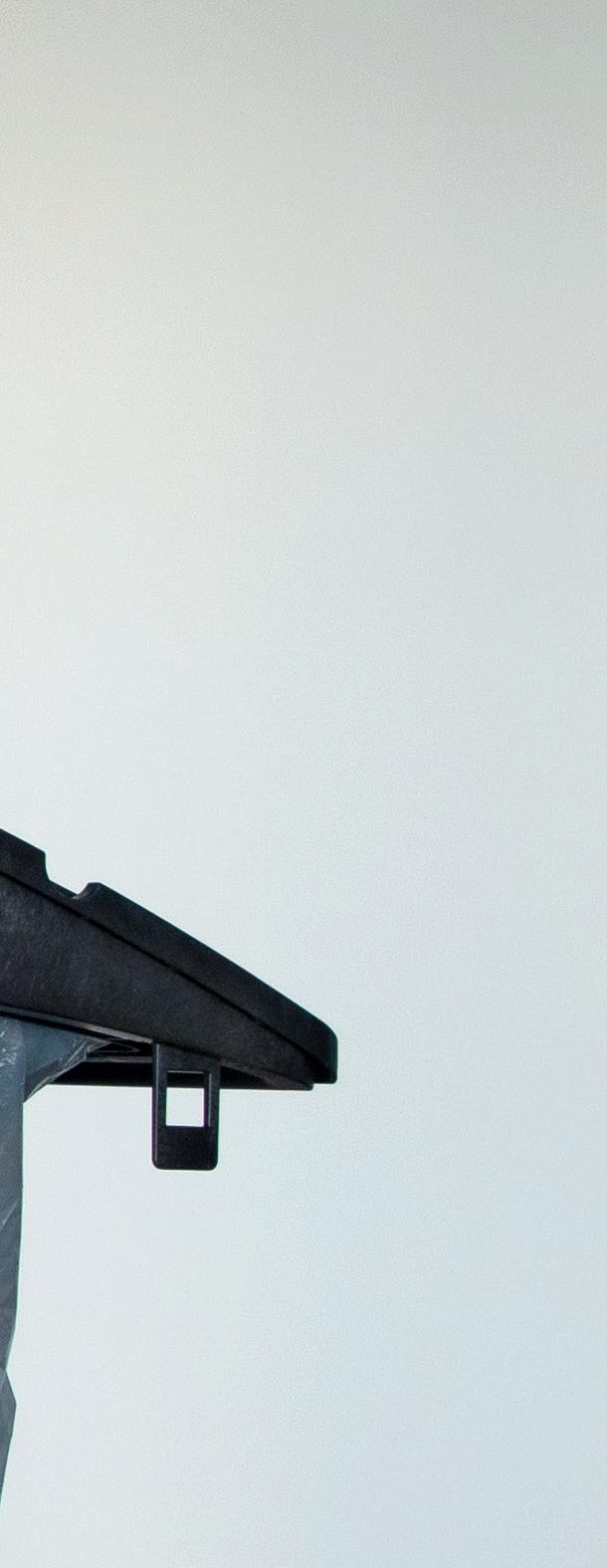




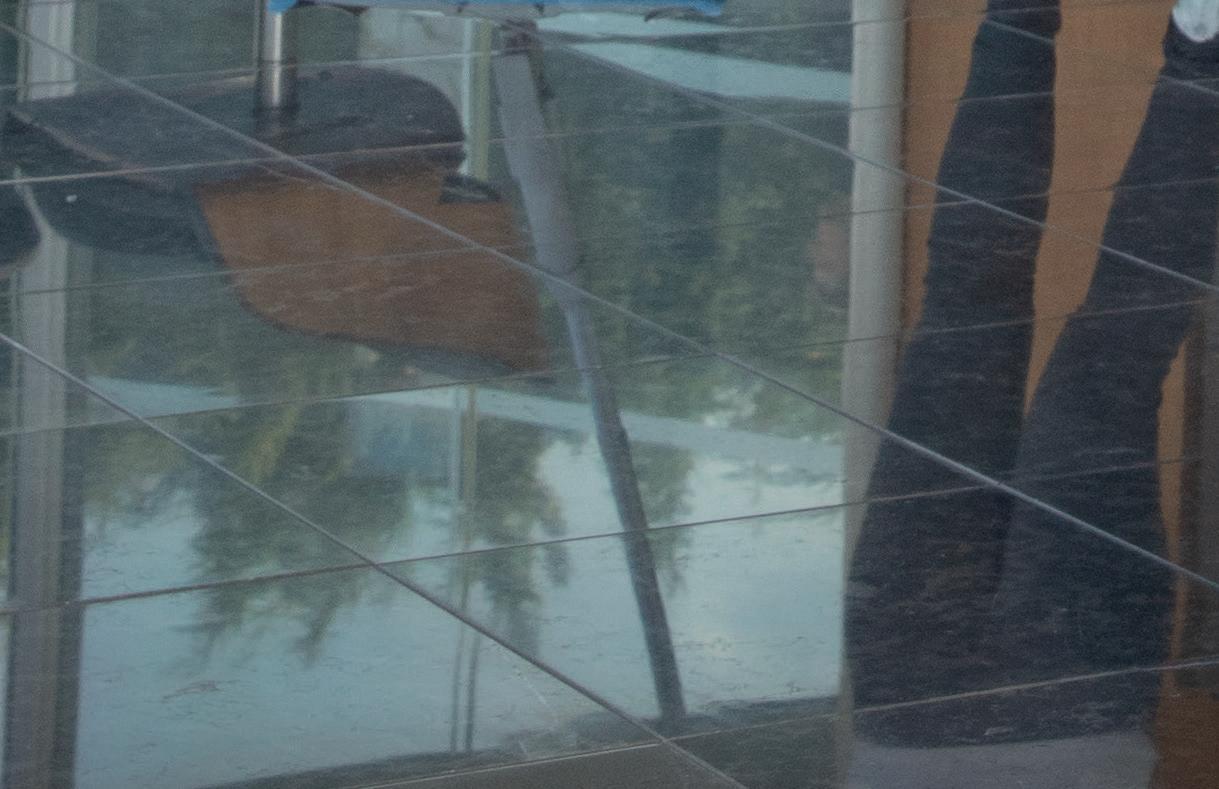















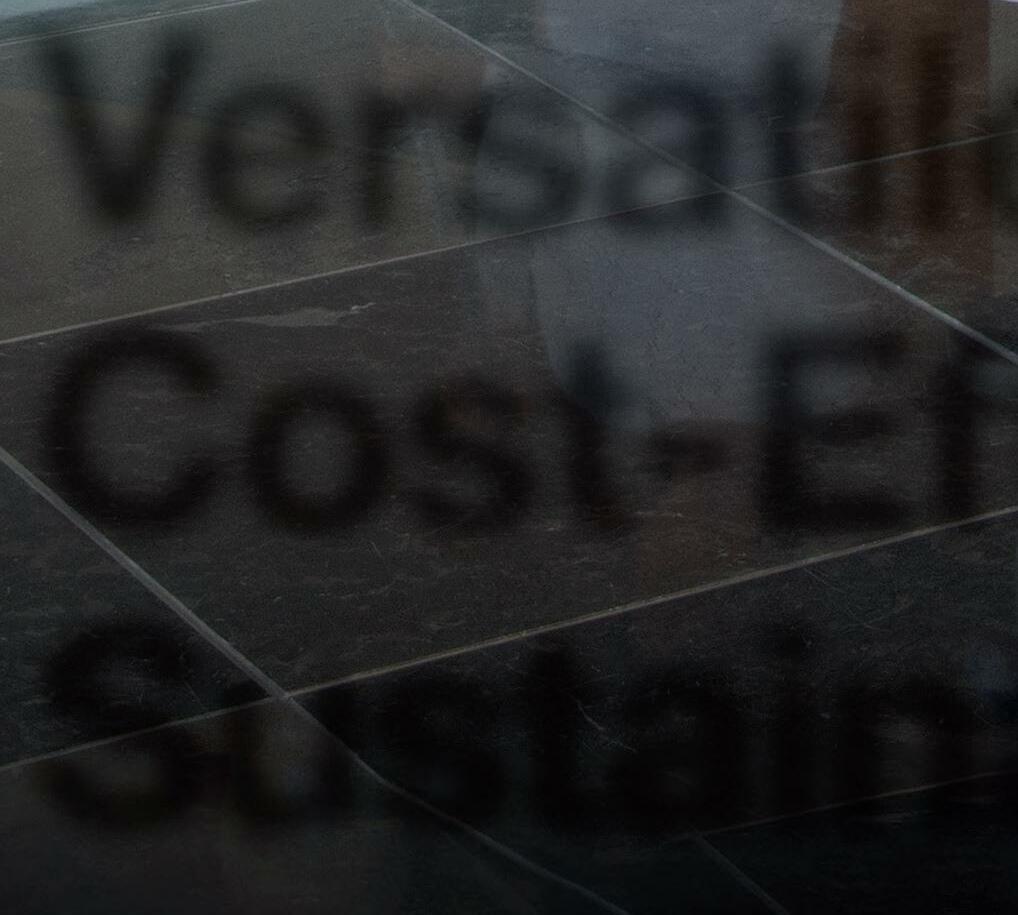



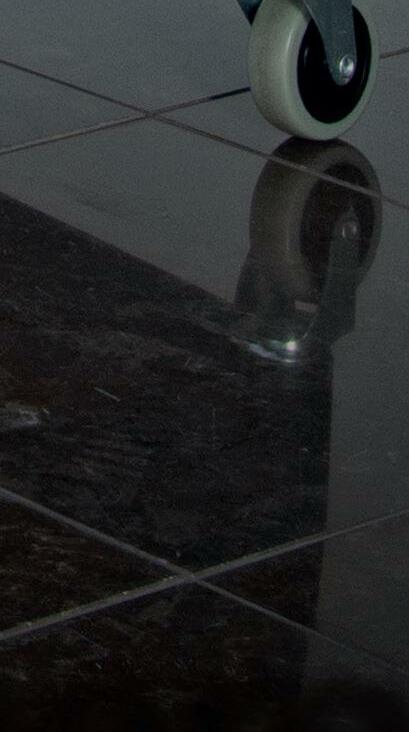
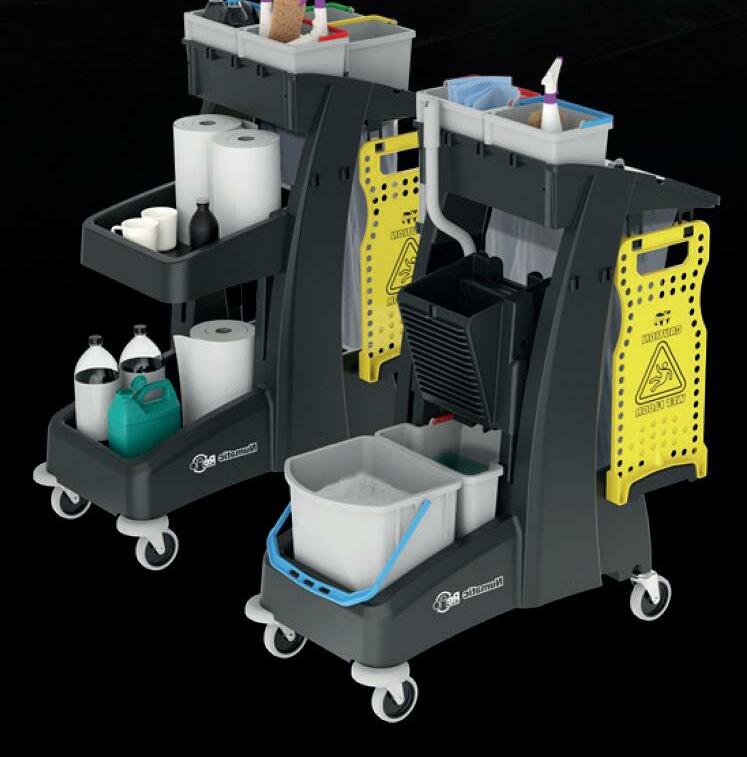



MULTI-Matic is a compact and versatile trolley range, ensuring productivity with a choice of janitorial solutions and mopping options to suit all environments. ©Numatic International Limited 2022. Specification subject to change without prior notice. numatic.com Made from high-quality recycled plastic Versatile Cost-Effective Sustainably Engineered Configure your cleaning solution.
WHAT A WASTE
With this amount of food being consumed in o ices on a daily basis, it is imperative that we all work to cut down the amount of it that goes to waste.
ROLE OF TECHNOLOGY
How many times have you sat in a meeting where a platter of sandwiches or snacks were le untouched in the middle of the room? Or perhaps a workplace canteen where colleagues only pick the sides of an unwanted lunch option? When someone mentions food waste, o en restaurants, retailers or households spring to mind, but it is important that businesses tackle the issue in their shared workplaces too. With this winter shaping up to be the first time in two years when global o ices will be full again, and many of us already regularly returning to our workplaces, now is the perfect time for businesses to consider their food e iciency in the workplace.
It is more important than ever that we reduce food waste. Firstly, food supply chains have been

severely disrupted by the war in Ukraine, while spiralling inflation is raising concerns of famine all around the world. It is essential we minimise food waste to make the most of the resources we have.
SUSTAINABILITY GOALS
Reducing the amount of food we throw away can also help businesses meet their sustainability goals. A third of the world’s largest companies have made net zero commitments and attention is turning to how they are going to be met. A recent survey by ISS of facilities management professionals in global businesses also found that ‘environmental sustainability’ has risen to third in their priorities when it comes to managing an o ice. Minimising food waste can play a key part in this. Food production is responsible for a third of all carbon emissions, and businesses can make huge carbon savings by using food more e iciently. Cutting back on waste will also mean businesses need to buy less food, potentially reducing costs in a challenging economic environment.
At ISS we serve over one million meals a day in hospitals, schools, and organisations around the world, so we are acutely aware of the role workplaces can play in tackling food waste. Many workers will have five meals or more in the o ice every week. Even though the COVID-19 pandemic has led to more remote work in general, we also see that many companies are using free breakfast or subsidised meals to tempt employees back to shared workplaces.
Technology will play a key role in this. We work with Winnow, which has developed AI that allows businesses to track food consumption in the kitchen and restaurant, meaning businesses can see trends in their kitchens’ production methods and employee’s eating habits on a daily basis. This knowledge can be used to identify where the most waste is occurring. In our digital world, data is king, and seeing these trends in eating habits can also help o ice kitchens or facilities teams to plan the food they order and use. In the first half of 2022, companies we work with who were using the tool saved on 201k of wasted meals, which equates to 80 tonnes of food and 346 tonnes of CO2 saved.
FACILITIES MANAGEMENT
There are other ways businesses can manage their facilities to reduce food waste in their workspaces: using e ective planning systems and tools to schedule and plan events to ensure all stakeholders understand the number of guests and eating preference of these guests reduces a huge amount of waste. Other initiatives include collaborating via purchasing partnerships with like-minded organisations. By sharing forecasts and production data across the supply chain, we enable greater e iciency and less waste. Finally, dedicating more menu space to plant-based options will also have a big cumulative impact on overall sustainability and carbon emission reductions in the food supply chain.
Sustainability is the major issue of our time, and it is important that businesses become more environmentally friendly in all aspects of their operations, including food. Earlier this year, we signed the Cool Food Pledge – a commitment to reduce greenhouse gas emissions associated with the food we serve globally by 25 per cent by 2030. We’ve also committed to halving our food waste by 2027. Catering and facilities management leaders who sign-up to codes like this and can show their commitment to cutting back on environmental impact can make themselves an attractive partner or supplier to those who are looking for support in reaching their own sustainability goals.
By properly planning how food is consumed in their workplaces, by utilising the latest technology and not least by working more closely together across the entire food industry, businesses can move closer to achieving their own environmental goals and help alleviate pressure on global food supplies. The time to act is now.

COMMENT DECEMBER/JANUARY 2023 12
ADVICE & OPINION
With more than one billion tons of food lost or wasted every year, workplaces must play their part to be more food e cient, says Hamish Cook, Head of Group Food Services, ISS







We’re not your usual waste company We work with you to create value Engaging education programmes Innovative waste technologies One supplier for all your waste streams Earn thousands of pounds from your recycling
CHANGES IN ELECTRICAL SAFETY LAWS EXPLAINED
In association with
www.phscompliance.co.uk

There have been changes in electrical safety laws in England, Scotland and Wales that may come as a surprise to some commercial and private landlords, leaving them open to fines and legal action if they can’t demonstrate compliance.

In recent years, legislation has not specifically identified a mandatory timeframe for carrying out electrical testing on electrical installations and equipment, instead stating that duty-holders must ensure electrical systems are regularly maintained and safe to use, leaving it to them to decide the most appropriate frequency for their tests.
By law, all domestic and commercial landlords must now have an Electrical Installation Condition Report (EICR) completed by a qualified person every five years to ensure the safety of their property for tenants. Failure to comply could cost lives and a sizeable fine.
WHAT IS AN EICR?
An EICR is produced following an assessment of an electrical installation in a building. An electrical installation includes all fixed electrical equipment that is supplied through an electricity meter. It comprises cables, accessories (like sockets, switches and light fittings), fuse boxes, circuit breakers and residual current devices (RCDs).
During the electrical assessment (sometimes called a fixed wire test), a qualified electrician tests and inspects the electrical installation, checking all the components for wear and tear, faulty wiring and anything that could pose a potential risk, like an electric shock or dangerously high temperatures.
The results of the test are then be broken down into categories and recorded in an EICR. The results will show either a satisfactory or an unsatisfactory outcome and will include any recommendations for improvement or immediate remedial actions needed.
WHAT TO DO IF THE EICR REPORT IS ‘UNSATISFACTORY’
Any electrical defects identified must be made safe by law. Any areas of the installation needing repairs will have to be retested once fixed, and achieve a satisfactory result, before they can receive an EIC
certificate, deeming them safe to use.
WHAT IS AN EIC CERTIFICATE?
If an electrical installation achieves a satisfactory EICR report, the testing engineer will present the duty holder with an Electrical Installation Certificate (EIC), proving that it has been tested and deemed safe to use in accordance with British Standard BS 7671.
The EIC certificate and EICR report should be kept together in a safe place. These can be presented to demonstrate compliance – for example, to insurers or landlords. EIC certificates are also known as ‘Minor Electrical Installation Works Certificates’ (MEIWC).
However, a higher risk environment, like a swimming pool (exposed to high levels of moisture) or an industrial unit (with high dust levels), would require more frequent testing to ensure safetyusually every year.
Many landlords prefer to get a new EICR each time a new tenancy begins, in addition to the mandatory five-year EICR, to ensure compliance and safety.
IS FIXED WIRE TESTING THE SAME AS PAT TESTING?
No. Portable Appliance Testing – also known as PAT testing – is the examination of portable electrical equipment and appliances, such as laptops, lamps, kettles and drills.
HOW DO I PREPARE FOR AN ELECTRICAL INSPECTION?
It is important for the inspectors to see your installation as it is usually set up and used, so no changes should be made before the test.
However, there are things you can do to help make the testing process go quickly and smoothly.
For example:
Ensure the entire building is accessible with no parts blocked o or di icult to reach
Ensure access to main electrical rooms and the gas and water supplies
Remove any objects or possessions that may be placed around the building and that could get in the inspector’s way when looking for electrical accessories, or items of electrical equipment
DO I HAVE TO WAIT FIVE YEARS TO GET A NEW EICR?
No. The law states that you must get a new EICR at least every five years but you may wish to carry out electrical assessments more frequently to ensure the safety of those using your building and your compliance with basic health and safety laws.

A qualified electrical engineer can advise how frequently they think tests should be carried out based on the building type, its use, potential risks and the overall condition of the installation.
As a guide, most o ices, retail spaces, schools or care homes require less frequent testing – usually once every five years.
If you’re on a prepaid meter, ensure it is loaded with enough credit for the tests to be carried out.
DO I HAVE TO USE A PROFESSIONAL?
Yes, the law states that an EICR must be carried out by a qualified person. This ensures safety and compliance and also the minimum amount of disruption to a business.
phs Compliance is the UK’s largest and most experienced provider of EICR inspections, certifications and electrical safety testing, carrying the highest regulatory and industry accreditation and a nationwide team of fully qualified and experienced engineers.
14 DECEMBER/JANUARY 2023 ADVICE & OPINION
COMPLIANCE
Tracy Burtwell, Managing Director of phs Compliance, explains how to stay on the right side of the law when it comes to testing your electrical equipment
Weekly operational tests are part of the requirements of the Regulatory Reform (Fire Safety) Order 2005 and BS 9999, which defines the rules for smoke control systems. Fortunately, Colt has been at the forefront of smoke control research and development, system design and installation since the early 1950s and is uniquely qualified to help you stay on the right side of the law.
A Colt service contract will keep you legal.

Only Colt has the depth of experience, the expertise and the national coverage to mitigate this weighty responsibility.
Our consultants are fully conversant with all smoke control systems, whether designed by Colt or other manufacturers.



They undergo regular training sessions to ensure that their knowledge of new products, systems and the ever-changing regulatory landscape is always up to date.
If you do not have an on-site maintenance team that can carry out this work for you, we have the qualified engineers to ensure that your system will work as expected in case of a real emergency.


Colt is the UK’s first company to be awarded certification to both IFC SDI 19 and SDI 05. Put us to the test.
To find out more or organise a survey, visit us at: coltinfo.co.uk/service-maintenance.html call us on 02392 491735 or email service@uk.coltgroup.com
Mobility is key to Colt’s ability to reach you in a timely manner, anywhere in the UK. Our engineers will always
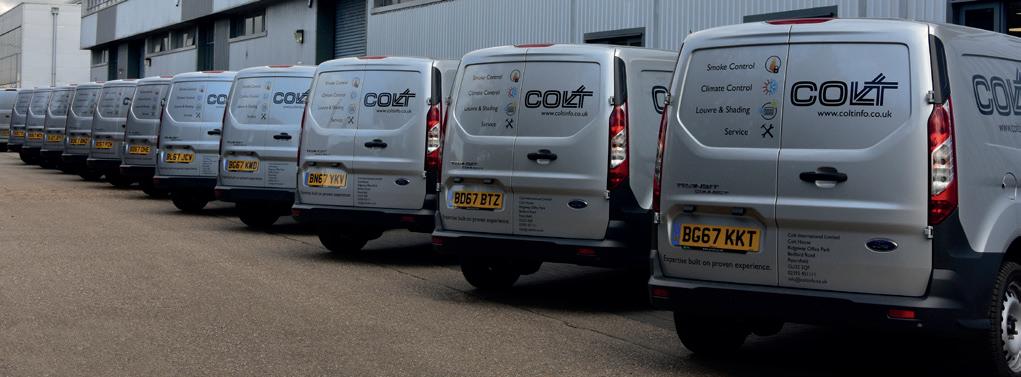
Choose Colt With Colt, they are.
Service Expertise built on experience. If only weekly smoke control checks could be this easy.
assess componants for re-use or possible repair, before they recommend replacement.
CONNECTIONS COUNT
FMJ AIMS TO SUPPORT TECHNICAL EXPERTISE IN THE FM MARKET
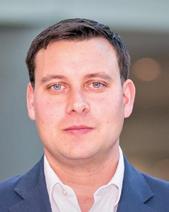
Areport from the Institute for Government warned that the UK’s buildings are among the least e icient in Europe. Businesses and Smart Buildings play a core role in the e iciency imperative. Using connected, data-driven strategies with building management solutions, they have the opportunity to create environments that are sustainable, e icient, healthy and cost-e ective. Luckily, there are five key strategies businesses can apply.
UTILISE OPEN PROTOCOLS
When building systems speak to each other, delivering collective data insights, building managers can help create better business outcomes. This includes reduced energy spend and IT security risk, increased operational e iciencies, and safe, comfortable and productive environments. To achieve this, when selecting Operation Technology in the building it is crucial that technology with open protocols is selected. Using standardisation of data formats and communications protocols makes it easier to ensure compatibility across di erent systems and networks, maintain systems e iciently, and expand capabilities as technologies advance.
When choosing a provider to improve your building, open protocol technology means there is a common language between systems and data. It, therefore, makes it easier and more cost-e ective to integrate and expand based on developing needs and technologies. It also enables simpler integrations between di erent systems, bringing together a cohesive approach under one common language.
USE THE CLOUD TO BRIDGE THE GAP BETWEEN SILOED SOLUTIONS
The focus on open systems throws up another important consideration for
connected buildings. O en the data that exists across solutions are siloed and disconnected, obscuring the bigger picture and limiting building managers to small, incremental changes that prevent them from maximising smart building investments.

To reach this potential, it’s important to get below the surface level of intelligent technologies to unlock the deeper insights they can generate. This happens when we connect smart technology systems together to create an ecosystem or platform for smart solutions. The data and insights this creates can then be analysed to make vast improvements across a building and even the whole enterprise. To make this a reality, the data needs to be connected and easily accessible in the cloud.
From here, it is then possible to move up the data value ladder, unlocking the true benefits of ‘smart’. On the surface level, data can be descriptive, telling us what is happening now. It is then possible to move up the levels; diagnostic, predictive, prescriptive and finally, the zenith of cognitive data where AI and automation come into their own.
EXPLORE NEXT-GEN SUSTAINABILITY WITH AI AND DIGITAL TWINS
With access to more data through these connected cloud systems, AI and machine learning can be harnessed to optimise building performance across myriad targets.
AI-driven analytics collects building data and applies machine learning to give granular insight into building performance in real-time. This leads to opportunities to save energy and operating expenses while enhancing building environments.
Such systems can also be harnessed in the creation of digital twins. These digital replicas of buildings enable the safe
exploration of alternative sustainability strategies - modelling maintenance, upgrades, and sustainability decisions. For example, about 40 per cent of carbon dioxide (CO2) emissions worldwide are generated by the building sector. Research from Accenture found that digital twins and related technologies can be used to cut energy use and carbon emissions in half.
TAKE A HUMAN-CENTRED APPROACH
Talking about building tech alongside humans may sound like an oxymoron, but the two go together. Building engineers and facilities managers need to be innovative and turn to full system design while also understanding what each component in their building does. We need people in our buildings that understand the whole journey, so they can get the best out of it and make buildings truly smart.
It’s important to remember that smart technologies are not just about e iciency and sustainability. They must also work for building occupants and create environments where people can flourish. One immediately noticeable benefit to employees of smart buildings is the increased comfort, convenience
and safety of data-driven buildings, from air quality to temperature and lighting.
Let’s not forget, however, that today’s workforce holds green credentials in high esteem, especially emerging talent in younger generations. If a business can demonstrate its commitment to sustainability, it can hope to become a more desirable employer while also achieving higher productivity levels.
MAKE CONNECTIONS FOR A FUTURE PURPOSE
Innumerable technological solutions promise to deliver discrete gains, but we need to move away from thinking about single solutions. If we get the technology right in our buildings now, we can transform how we use them in the future. The needs and expectations of users, alongside the global imperative to reach net zero now define the future of our buildings.
To deliver this future, we must start with connections; connecting every system in a building, including fire safety, HVAC, lighting and security, and concentrating on fully formed objectives that make the most of powerful data tools, rich analytics and human oversight. This is not only to ensure we have a great today, but so we work towards a better future.
DECEMBER/JANUARY 2023 16 ADVICE & OPINION
We must take action to drastically increase e ciency if the UK is to remain competitive in the face of surging energy costs. Connected buildings can help us meet these objectives, argues Jamie
FACTS
Cameron, Director of Digital Solutions UK&I & EMEALA, Johnson Controls
FAST



































Is your existing chiller plant efficient and reliable? We’re here to help. The world is our building. Were all in it together. t 08457 165 162 e customer.care@trane.com www.trane.co.uk
SOCIAL - BLOG




NEIL GRUNDON, CHAIRMAN OF GRUNDON WASTE MANAGEMENT

Simi Gandhi-Whitaker linkedin.com/in/ simi-gandhi-whitaker-15662539 Strategic Technology Director at Mitie - I immensely proud to know and have such amazing fellow collaborators, who not only gave up their time to come and present at our ‘Tech – Tools or Toys’ event but also those behind the scenes who helped bring it to life! You all rock!
@britishchambers Chambers of Commerce and their member businesses are making huge efforts to tackle the skills crisis. Government must work with business to create a more effective job market, now and for the future. Read more: http://ow.ly/uUFn50LOZl7
Bianca Angelico linkedin.com/in/ biancaangelico Director at On Verve I Cochair & Co-founder at Emerging Workplace Leaders Great to be at WORKTECH London today. “Your phone has more flexibility than building” - great phase from Sir Stuart Lipton. Do you agree?
@CIBSE We must engage with each other & other industries to share climate impact reduction knowledge. For day 5 of the #CIBSE125Challenges advent calendar, we’re looking at the #Engage challenge! Let us know your thoughts at challenges@cibse.org https://buff.ly/3HbHMI7 #WeAreCIBSE
Andrew Mawson linkedin.com/in/ andrewmawson - I can’t help but think those in the property market are putting a very brave face on the decline in demand in the secondary office market. Our data would suggest a decline of more than 50% on the demand side (not 20% as some are suggesting). Our report will provide more evidence. Big-money deals obscure risk for UK’s empty officeshttps://on.ft.com/3wuO281 via @FT
Richard Harris linkedin.com/in/harrisfm
There has been an acceleration of dependency on tech within the workplace which is fast becoming an issue to control. It’s not just Emails - Team, Zoom, Google Meets, Slack etc. are dominating managers calendars as well as other communication channels. Planning + ownership + trust + empowerment are all ingredients that will help solve your communication issues. By minimising communication disruptions you can create time that can be used to support service excellence, creativity and innovation, it’s a good thing.
WHY MANAGING SCOPE 3 EMISSIONS IS ESSENTIAL FOR FMS
Ilike to refer to Scope 3 emissions as society’s dirty secrets – unlike their big brothers (Scope 1 and 2 emissions), they are rarely reported or discussed, and it is usually the waste industry that is le to deal with them. Whatever items are thrown at us, we’re the ones who have to figure out how to dispose of them and, when they can’t be recycled, reused or reprocessed, they go to our Energy from Waste (EfW) facilities.
While these facilities generate green electricity for the National Grid, it is the remaining emissions which are now attracting attention. The recent Government consultation on the long-awaited UK Emissions Trading Scheme (ETS) proposes that for the first time, emissions from waste incineration plants will be included in the calculations.
Inevitably, this means we will be asked to reduce emissions downwards and adopt decarbonisation technologies and practices – all of which is possible, but it comes at a price.
This is where facilities managers come in. While reporting Scope 1 and Scope 2 emissions is par for the course these days, the lack of measuring and monitoring of Scope 3 emissions undoubtedly hinders an organisation’s progression towards its carbon targets. And, when you consider that Scope 3 emissions are considered to constitute a huge percentage of the CO2 generated, it’s clear that change is needed.
By adopting measurement techniques that provide accurate reporting, FMs can improve their organisation’s sustainability, help move closer towards net zero carbon targets and drive greater awareness and increased transparency in their supply chain.
Within the waste industry, we’re doing our bit too.
I’ve always said that you can’t manage what you can’t measure, so next year will see the introduction of a new system at our joint venture Lakeside Energy from Waste* facility, adjacent to our operation at Colnbrook, near Slough.
This clever piece of kit will continuously monitor the Scope 3 emissions which come out of our chimney. It will be able to determine the amount of biogenic emissions (from burning organic material) versus fossil fuel emissions (from burning fossil fuels) – currently there is an arbitrary industry average of a 50-50 split between the two.
By identifying the true percentage of each, our hope is this data will persuade FMs to engage with suppliers who are reducing their reliance on fossil fuels such as coal, oil and plastics containing embedded fossil carbon; instead choosing to work with those who are investing in more organic materials, such as wood, food, plants and paper, where CO2 is included as part of
a natural cycle.
Having real figures around Scope 3 emissions should give us (and FMs) the evidence to help precipitate change and increase sustainability. It won’t happen overnight and indeed, it will probably be around 2026 before the monitoring data is robust enough, but we have to start somewhere.
Inevitably, this investment in Post Combustion Technology doesn’t come cheap and we fully recognise businesses and councils will always want the best price when it comes to their waste management.
That is something we are committed to providing but, as an industry, we cannot (and should not) be le to pick up the bill for someone else’s indiscretions.
I urge FMs to look to their supply chain, to consider the benefits of working with suppliers who choose transparency and a willingness to embrace net zero to help measure and understand the impact of Scope 3 emissions both now and in the future.
Sooner or later, those additional Scope 3 management costs will filter down from the waste industry and land on the desk of polluters who are creating them. And when (as inevitably will be the case) we are asked why waste bills are rising, I will say it’s because too many organisations have swept the management and disposal of their Scope 3 emissions under the carpet for far too long.
This technology should help everyone better understand what they are paying for, but until it comes, there is plenty that can be done to keep future costs down.
So I urge FMs to recognise the role they can play by making the right procurement decisions now, and see them as an important step forward in reducing both the impact on our environment and their bottom line.
*Lakeside Energy from Waste is a joint venture between Grundon Waste Management and Viridor - part of the FTSE 250 Pennon Group plc.
DECEMBER/JANUARY 2023 18
ADVICE & OPINION
Neil Grundon, Chairman, Grundon Waste Management
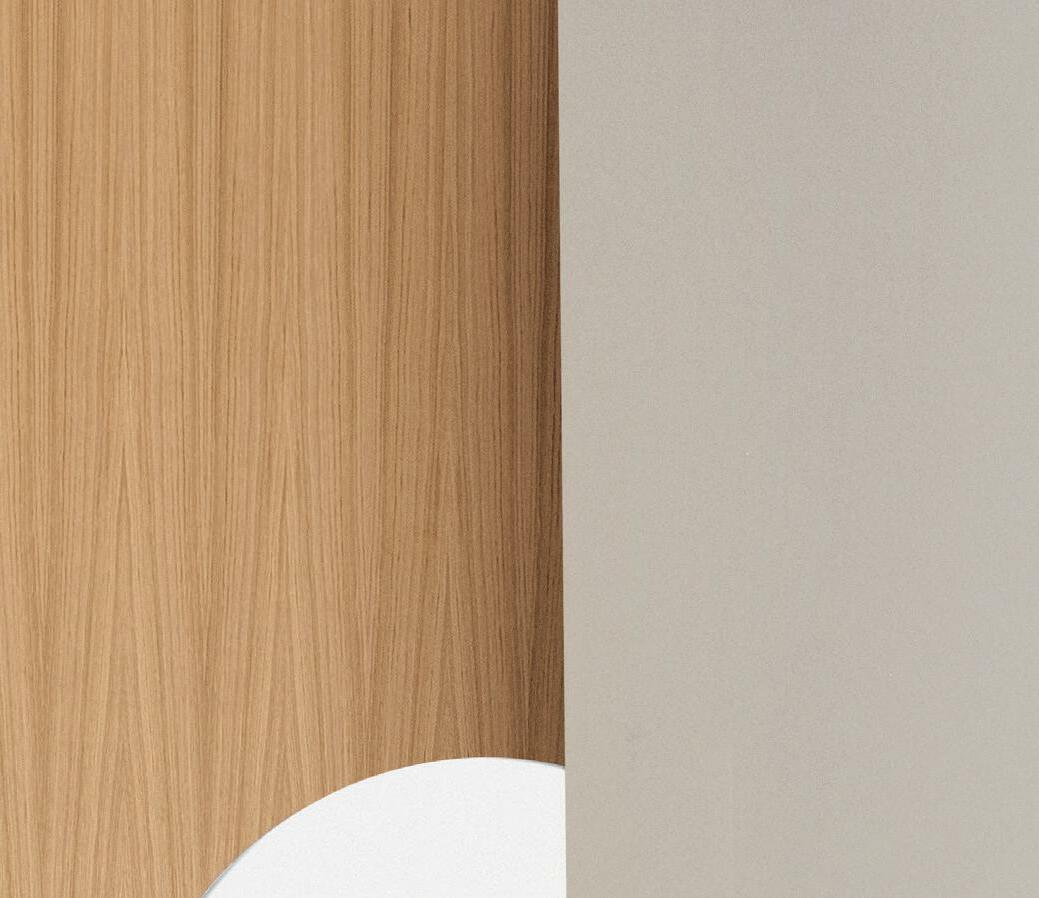




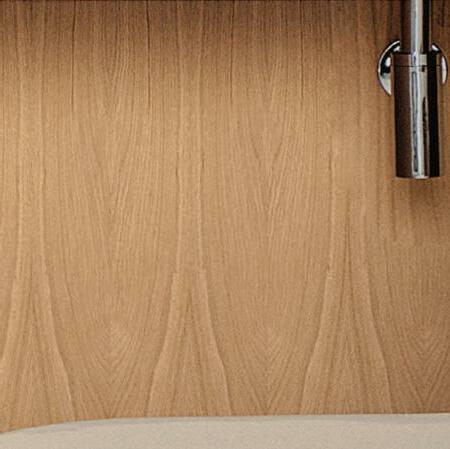





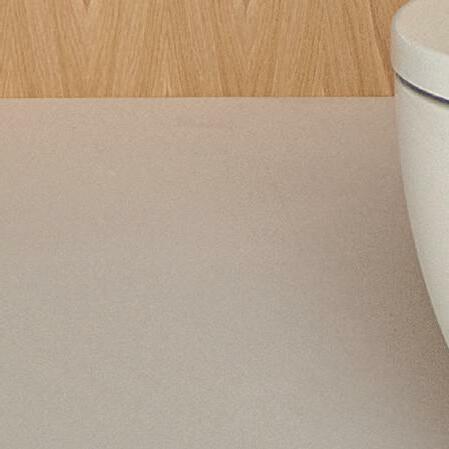










Symfo Flush plate Blend Curve Toilet & seat Conca Basin mixer Conca Mirror Extra Vessel basin
Where it all comes together. Whatever environment you’re specifying for, Singular™ offers a seamless journey to the perfect washroom solution.
FM CLINIC
As we see organisations looking to review how much space they occupy, how they manage the complexities of an ESG agenda, how to encourage sta to return to work and how to create an e icient and high performing workplace in the context of a looming global recession we can see the scale of the challenge.
In the past year at RICS I have been talking to FM professionals all around the world about the new RICS International Building Operation Standard www. rics.org/ibos (IBOS). IBOS sets out the need to create high performing buildings for all and that this performance must
THE RICS PROFESSIONAL’S VIEW


 PAUL BAGUST, HEAD OF PROPERTY STANDARDS, RICS
PAUL BAGUST, HEAD OF PROPERTY STANDARDS, RICS
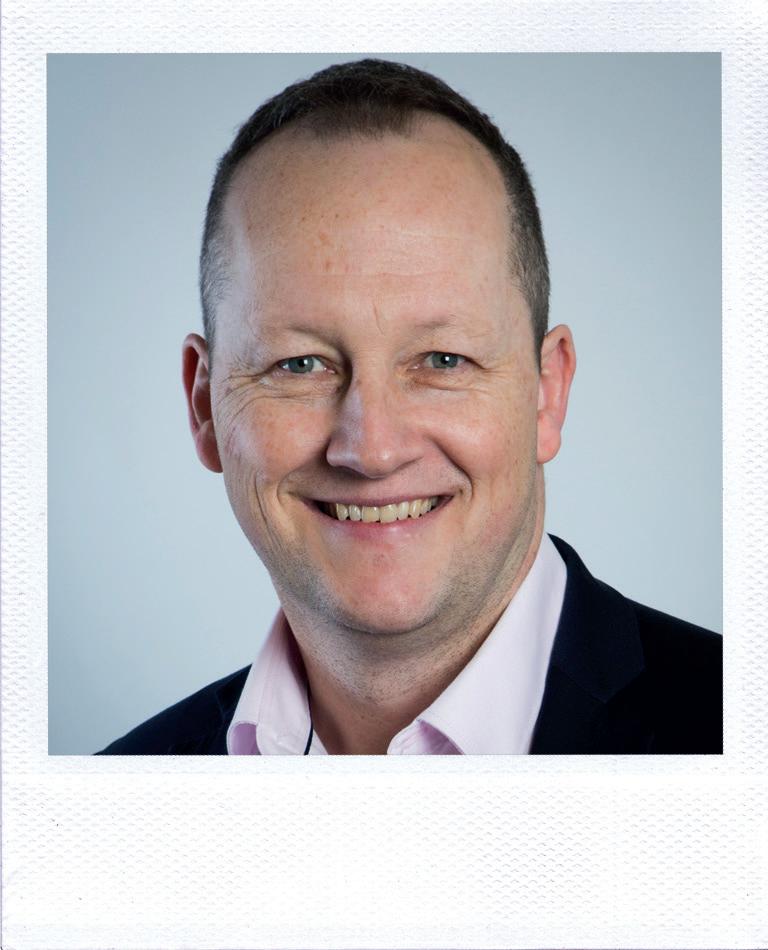
“We are what we repeatedly do. Excellence is not an act, but a habit” Aristotle.
In periods of great change and challenge people will look to professionals to provide assurance and solutions. If these are not forthcoming, they may also look to professions to apportion blame. This is certainly one of those times.

As we look back it is clear the FM industry has worked under unprecedented pressure since March 2020. During this time, we have seen a tremendous response from the profession in terms of keeping critical infrastructure open and safe and managing the return to work. As we now enter a period of economic, social and environmental challenge the FM industry once more must step up to be the profession that provides this assurance and develops solutions.
In the past three years there has been an increased recognition from all sides of the industry whether it be investors or occupiers of the crucial role that FM professionals play. With most organisations now wrestling with o en seemingly competing and challenging issues there is an opportunity to really take ownership of the strategic space in terms of building operation and performance.
be measured to create transparency and clarity around long term planning.

Central to this is of course data. IBOS states that we must be able to measure traditional FM activity such as function, cost and compliance and also reflect sustainability and performance as part of a more holistic view.
It has been a great privilege to talk to so many firms to really see the innovation, collaboration and value that is being driven by the sector and the recognition that FM must avoid returning to the days where is was only seen as a commoditised cost for a business rather than a driver of value.
As a professional body, RICS must continue to work closely with industry to ensure the ever changing skill set of FM is recognised in our pathways and qualifications to ensure we attract the very best talent into our sector.
Managing this complex relationship between cost and value and using data and technology is where I see FM developing in the coming period. All organisations whether they be o ices, schools, retail or other critical buildings will be asking complex questions relating to how their buildings support their wider objectives on reducing carbon or increasing performance. Increasingly, it will be the FM profession to which they turn for these answers.
It is clear that all sectors are facing a di icult period economically and FM has certain unique challenges in terms of recruitment of sta , but the commitment to service and performance has never been greater.
It is professionals that will support organisations at this time and professionals that will be able to resolve some of the most complex challenges that have ever been faced.
FM is at the heart of the issues like never before. The ability to provide and deliver solutions and capture data to measure those outcomes is essential in 2023. As Gandhi said, “the future depends on what you do today”.
DECEMBER/JANUARY 2023 20
In 2022, as we emerged from COVID there were fresh challenges for FMs, including inflation, rising energy prices, managing hybrid working practices and dealing with skills shortages. How do you think the sector has adapted to the challenges this year and what do you predict are the main issues to watch out for next year?
ADVICE & OPINION
Paul Bagust
In FMJ's regular monthly column, our team of FM experts answer your questions about the world of facilities management
THE FM PRACTITIONER AND FMJ EDITORIAL COMMITTEE MEMBER’S VIEW
WAYNE YOUNG, FACILITIES MANAGER, JUST EAT TAKEAWAY.COM
I think the reason why so many people begin and stay in FM is the diversity of the job, and for this reason it is why I think as an industry no matter what challenges are laid down we accept, overcome and flourish.
There is no doubt that 2022 has been a year of challenges, like many of the year’s prior. We started the year looking at how we would manage a changed workplace, where hybrid working was the norm; and how we were going to deal with huge skill shortages and labour challenges. As the year progressed our focus moved to how to manage the financial impact of inflation and rising energy prices. Many businesses again turned towards their Property/FM teams to help steer a path.
Wayne Young
of batteries and if we can do this at better times of the day we can make some significant savings in our utilities bills.
I see 2023 as an opportunity for new technologies to develop and emerge and the chance for FM professionals to show our value to board room. We have traditionally been seen as a cost, here again is our chance to demonstrate our value with our skills and initiatives that will help organisations deal with the financial impact of 2023.
THE IWFM CHAIR’S VIEW
MARK WHITTAKER, CHAIR OF THE IWFM AND GENERAL MANAGER, THOMSON FM


So what does 2023 look like?
business. Again, this is where step out of the shadows and o er
So what does 2023 look like? Like much of 2022, I truly believe that cost is going to be our biggest challenge. We know that costs are going up, with increases in materials, fuel, food, business rates and pay. It is predicted that the country will enter a recession. It all sounds very glum, but it’s another opportunity for us as an industry to show our worth and value to business. Again, this is where (like the year’s previously) we step out of the shadows and o er clear value to our businesses.
WayneYoung
My focus points through 2023 will be in making sure my buildings and environments are e ective and e icient, thus ensuring that the cost of facilities is maximised for the business. Firstly I will be focusing on space utilisation, looking at what our space is used for, maximising our sq and looking for alternative uses for space we don't need. We’ll make the space we do use an environment where people want to be, so as to attract our people and talent to use these spaces more o en (we all relish the opportunity to collaborate face-to-face).
Secondly - I will focus on energy e iciency, only lighting and heating the spaces that will be used by utilising some of the great smart building technology. For example, we charge a lot
My personal view is that the workplace and facilities management industry has continued to be extremely adaptive in 2022 as fresh challenges have replaced those presented by COVID-19; particularly those relating to the recession, global energy market, labour market shortages, the war in Ukraine, and the costof-living crisis.
Mark Whittaker
war in Ukraine, of-living crisis.
It’s also important to acknowledge that some of these issues do not have a quick fix and this particularly relates to the skills shortages and “war on talent” that we are regularly reminded of. In the short term, employers have needed to be more proactive and imaginative in how they attract and retain talent, but a more medium/long term strategy is required in engaging with young people about career options and development opportunities available within the profession.
particularly relates to the skills shortages and
will be economic, with organisations needing to








In looking to 2023, the most obvious challenge will be economic, with organisations needing to review their budgetary forecasts and establish whether they are currently receiving value for money for their FM services and whether there are any cost e iciencies to be
they are currently receiving value for money for their FM achieved.
I have spoken to numerous FM companies this year who have stated that their “sell” to customers is now focussed on how they will work with them to ensure their buildings become and remain statutory compliant. The Hackitt review of building regulations and fire safety will ensure this focus continues to be applied to building safety.


According to Research and Markets, the smart building market is projected to expand at a compound annual growth rate of 23 per cent, hitting $47 billion by 2026. As more and more buildings become automated and responsive to the needs of those within them, the new AI and IoT technologies, and the analysis of the data they provide, will undoubtedly impact on the work





























do

DECEMBER/JANUARY 2023 21 FMJ.CO.UK FM CLINIC
we
ADVICE & OPINION
to
I see 2023 as an opportunity for new technologies to develop and emerge and the chance for FM professionals to show our value to board room. We have traditionally been seen as a cost, here again is our chance to demonstrate our value with our skills and initiatives that will help organisations deal with the financial impact of 2023.”
and how we do it.
The future of work conundrum remains unanswered for many employers. Although I don’t expect most organisations to take Elon Musk’s lead and demand that all employees return to the o ice, there’s still uncertainty over what a postpandemic workplace that meets both business and employee needs looks like. Employers will need to understand what these new ways of working will require in meeting these needs.
Despite the instability in Government throughout 2022, there appears to be a shi of focus back on climate change and sustainability, particularly highlighted during COP27. Lots of organisations are reviewing the Carbon Net Zero commitments and tracking them against their overall Environmental, Social and Governance strategies. Organisations are looking to their FM leaders to take the initiative in driving this forward, which is undoubtedly an exciting opportunity for the industry.
Finally, and aligned to this, I also sense that, as a profession, there is a shi away from taking a mainly reactive/tactical response, with a greater requirement to be more strategic in our thinking, whether that be in our labour market strategies, building operation or workplace strategy. I remain hugely optimistic for the industry and our increasing profile within the economy; however, it is an opportunity that needs to be grasped.
THE PEOPLE MANAGER’S VIEW JASMINE HUDSON, CHIEF PEOPLE OFFICER, MITIE







While the pandemic saw FM providers pivot to problemsolving and short-term solutions to support their customers and colleagues, recent months have seen an increasing focus on technology and user experience, as well as a returning emphasis on decarbonisation, sustainability, and wellbeing.
These areas present growth opportunities for our sector, particularly for the year ahead, as more providers strengthen their focus on innovation to enhance services which support customers’ own growth and sustainability agendas. However, for this growth to reach its full potential, the looming skills challenge facing FM must be addressed – quickly.
As the Chief People O icer of Mitie, I know first-hand what an important role our 68,000 colleagues play every day to keep Britain running. One pressing challenge is the ambition to grow Britain’s industries of the future – such as energy, solar, EV and telecoms – which will rely heavily on the specialist expertise and skills of thousands, including our very own engineers.
The sector will only be able to grasp these opportunities if it has the skilled workforce to deliver it. We must attract, train, and reskill our colleagues if we are to achieve the country’s targets for sustainable growth, and this brings opportunity for
levelling up too.
Our success will depend on the support we receive to speed up our apprenticeship trailblazers and improve the flexibility in how the Apprenticeship Levy can be used. However, while FM leaders are willing to spend the time and resources investing in future talent, the barriers we face, including access to courses and the availability of suitable training programmes, means progress is o en still too slow.
For example, opening up the levy so it can be used to help people achieve the entry requirements they need, such as maths and English, would help those without these foundational qualifications get their foot on the first rung of the learning ladder. At Mitie alone, we have 147 nationalities within our workforce, many of whom do not call English their first language. This makes it even more important to support English qualifications for those that need and want them, which in turn would open up further training opportunities within their chosen field, and allow them to progress while earning more.
As we look to upskill our workforce, we must not forget our key workers either. Primarily, this includes creating new apprenticeships to enable our vast workforce of frontline workers, such as cleaners and security o icers, to access their own training opportunities. For example, this could help upskill the UK’s one million cleaners who do not currently have an apprenticeship that matches their role.
There is work to do and, like many employers, we are dependent on the Government introducing the much-needed levy reform that will make this a reality. Employers across the sector appear intent – now more than ever – on delivering the specialist courses that will address our growing skills gap and build the FM workforce of the future. As this joint ambition has certainly grown over the past year, I hope to see some exciting opportunities for our workforce in the year to come.
THE DIGITAL EXPERT’S VIEW
DAVID ATTOE, IOT DEVELOPMENT DIRECTOR, CLOUDFM
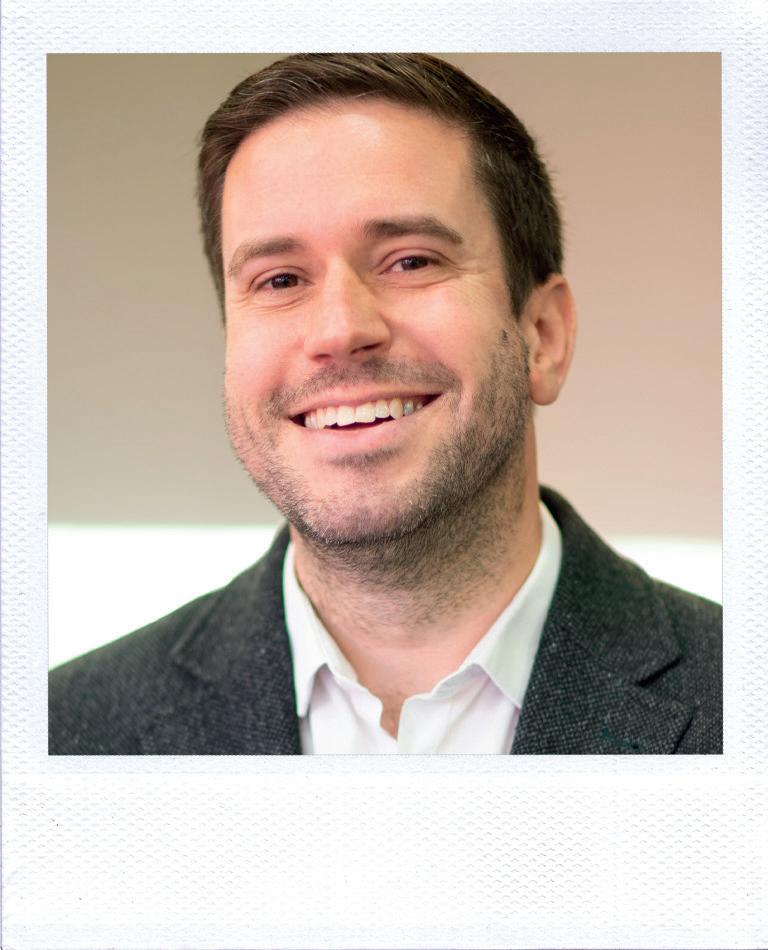
As the economy emerged from the pandemic, businesses of all sizes have had to navigate a series of challenges. As we look forward to 2023, we can expect many of these issues to be amplified alongside a tightening of the economy and possible recession.
Rising costs of labour and materials have proven a challenge and required careful attention over the last couple of years. It requires a greater focus on flexibility in how programmes are delivered and a constant recruitment e ort to ensure the resources are there to undertake the work. While a recession may increase the number of people in the labour market, it is unlikely that it will solve the long-term skills shortage that has plagued our sector.
We have created and deployed new technology to address these challenges, as digital transformation can provide
DECEMBER/JANUARY 2023 22
FM CLINIC
David
Attoe
ADVICE & OPINION
Jasmine Hudson
XLERATOR sync ® CLEANS UP THE COMPETITION.
The XLERATORsync ® system has been voted the best of 2022 by readers of Tomorrow’s Cleaning Magazine. Leading a nomination pack of over 40+ entrants, XLERATORsync was voted first place in the public vote. In this modern design innovation, water, soap and purified air co-exist alongside a purpose-built custom wash basin. XLERATORsync provides users with a more hygienic washroom experience while allowing them to wash and dry their hands all in one convenient location.
Beneath the surface, the system runs on industry-leading, energy-efficient XLERATOR ® technology, with features including a HEPA Filtration System proven to remove 99.999% of bacteria and viruses from the air 1 .
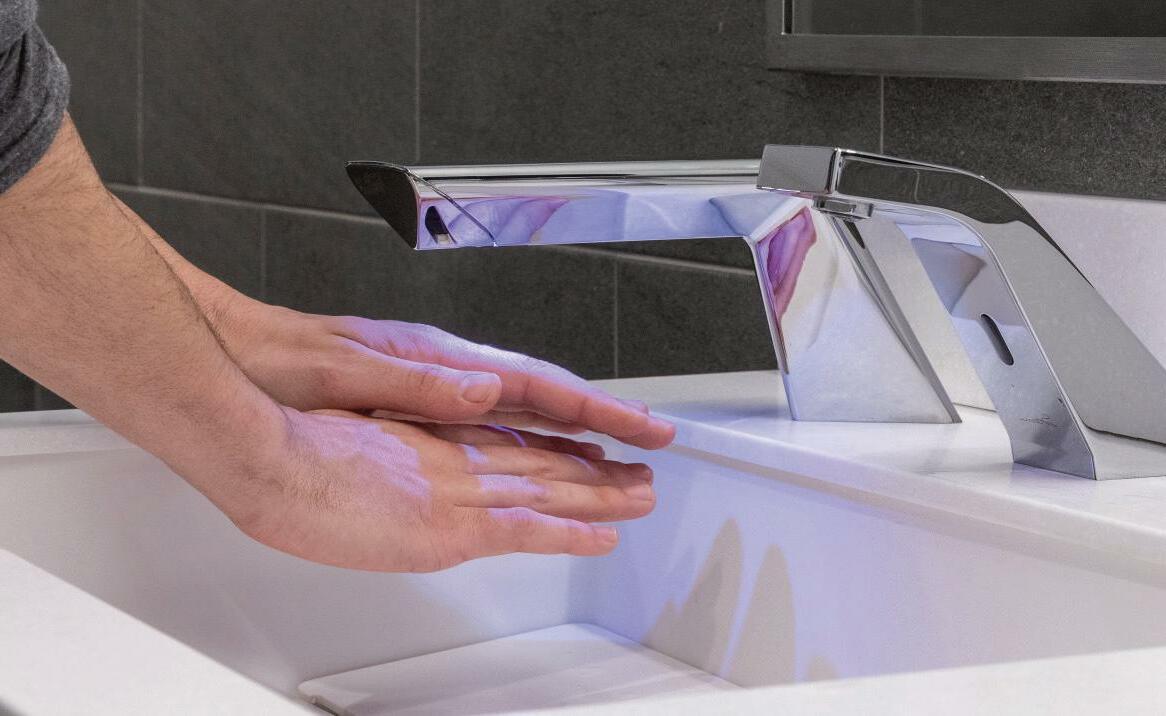

EXPERIENCE THE EXCELLENCE OF XLERATOR sync TODAY. 44 12 2445 9571 xleratorsync.co.uk sales@exceldryer.co.uk 1Based on testing performed by LMS Technologies, April 2020.
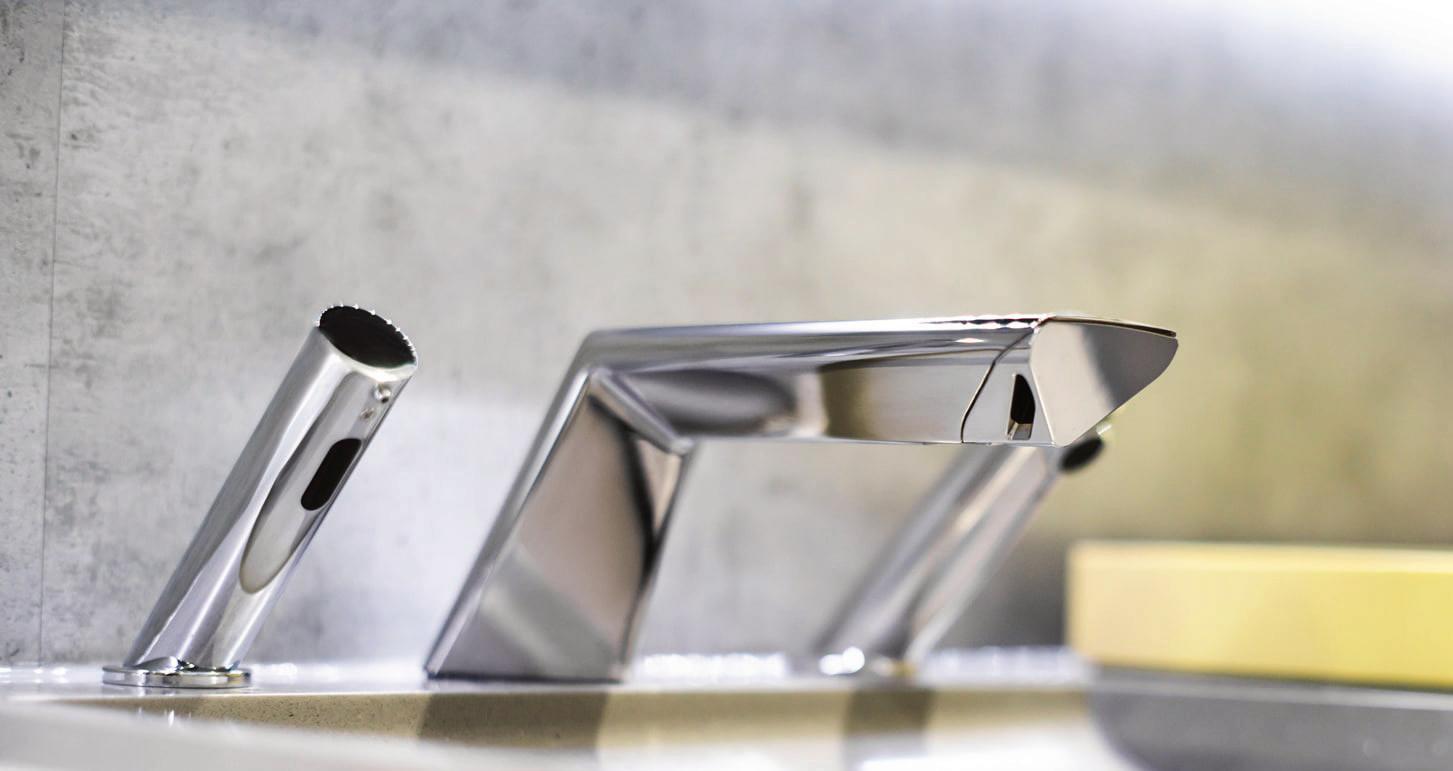
clear benefits to the sector as a whole. Technology underpins e icient performance that is delivered by the right people for the job and e icient processes. It can provide a management process with no gaps in information, no manipulated data, and therefore better relationships with supply chain partners.
It is also essential to accelerate the journey to net zero. It's the responsible thing to do and delivers energy cost savings. Internet of Things (IoT) technology can significantly impact energy usage in buildings and give sta the information they need to make positive behavioural decisions.
Information on carbon emissions should be made available in an intuitive platform that enables users to make quick and straightforward choices regarding energy use, such as turning o the hot water boiler a er hours or turning o the electricity to floors when no one is there.
We have developed patent-pending technology that uses IoT, Machine Learning and Artificial Intelligence to monitor buildings and all mechanical assets within those buildings. Extensive trials in the hospitality industry and NHS have shown that the technology, when combined with behavioural science, reduces energy consumption by at least 20 per cent. A substantial monetary saving and a significant CO2 reduction.
Better use of data through the supply chain can create a new era of transparency that allows problems to be fixed faster the first time around. In addition, it will enable pressured sta to focus on delivering a great customer experience while saving money and benefiting the environment.
A substantial monetary saving and a significant through reduced travel. To address this, the


















By combining real-time data with the latest technology, FMs can deploy greater localism in sourcing facilities management engineers and reduce the carbon footprint of activity through reduced travel. To address this, the model built greater flexibility into the system, using available intelligence to match the right skills to the job at the first visit.
JohnMcPherson
sectors we serve, but from di erent and new areas from outside the facilities management circle. We must approach recruitment with a fresh perspective and seek to recruit those individuals who will bring the correct mindset, attitude and focus, and then provide them with the necessary training and skills. This approach not only helps keep the talent base, but with diverse perspectives and backgrounds that all help provide the best experience for clients.
Throughout the past 12 months, the facilities management sector has once again shown how responsive, flexible and adaptable it can be to evolving external factors; whether political, economic, social or technological. As we approach the new year with continued fiscal uncertainty around us, we must also continue to show our agility.”
John McPherson
Flexibility will be vital in tackling the challenges that the economy faces over the next couple of years. It is clear that good data is essential to inform better decision-making, which in turn drives e iciency.
THE INTEGRATED FM PROVIDER’S VIEW
JOHN MCPHERSON, ABM MANAGING DIRECTOR

Throughout the past 12 months, the facilities management sector has once again shown how responsive, flexible and adaptable it can be to evolving external factors; whether political, economic, social or technological. As we approach the new year with continued fiscal uncertainty around us, we must also continue to show our agility.
The resource shortage has been one of the biggest challenges facing many sectors, including facility services. Our strong culture and industry leadership serve as the foundation in making ABM a great place to work, but it is our innovative approach to attracting and retaining talent that makes the di erence for us, particularly during these periods of uncertainty.
This could mean looking for new talent not just from the







the creation of very clear career progression opportunities for those who desire growth. It’s important to look to the future, not just the here and now. Our J.E.E.P (Junior
With regards to retention, we must always consider the investment we put in to training and development to ensure the creation of very clear career progression opportunities for those who desire growth. It’s important to look to the future, not just the here and now. Our J.E.E.P (Junior Engineering Engagement Programme) is an excellent example of this. We launched the programme specifically to address the skills gap and make sure that we are doing all we can as a company to promote our industry and equip the next generation of talent with the knowledge and skills required to work in this industry.
to the working week, the care of buildings is front of mind, with customers needing to look for
This is why we believe integrated facilities solutions will
As the industry adjusts to a new approach to the working week, the care of buildings is front of mind, with customers needing to look for e iciencies while ensuring healthy environments. This is why we believe integrated facilities solutions will be so crucial in the years ahead.
A functioning facility is a complex combination of specialised components and systems, each with specific needs and challenges. Keeping it all running requires deep expertise in each area - and a full understanding of how each part works together. Historically specialised services have been supported by a variety of providers, but the more services one company can support, with expertise across a breadth of cleaning, maintenance, technical, security and other services, the more holistic and cost e ective the facilities management operation becomes. This has never been more important, or attractive, to customers in di icult fiscal times.
Finally, it’s also important to recognise the role that sustainability will play next year and, in the years, to come. There is an increasing mindfulness of the environmental impact of operations, with businesses looking for new solutions to significantly reduce their carbon footprint and help in becoming more carbon neutral. Facilities management providers play a critical role and must increasingly collaborate with their clients to identify opportunities in successfully deploying sustainable, waste, and energy e icient practices.
Do you have a question that you’d like answered by the FMJ Clinic?
Email: sara.bean@kpmmedia.co.uk
DECEMBER/JANUARY 2023 24
ADVICE & OPINION
FM CLINIC







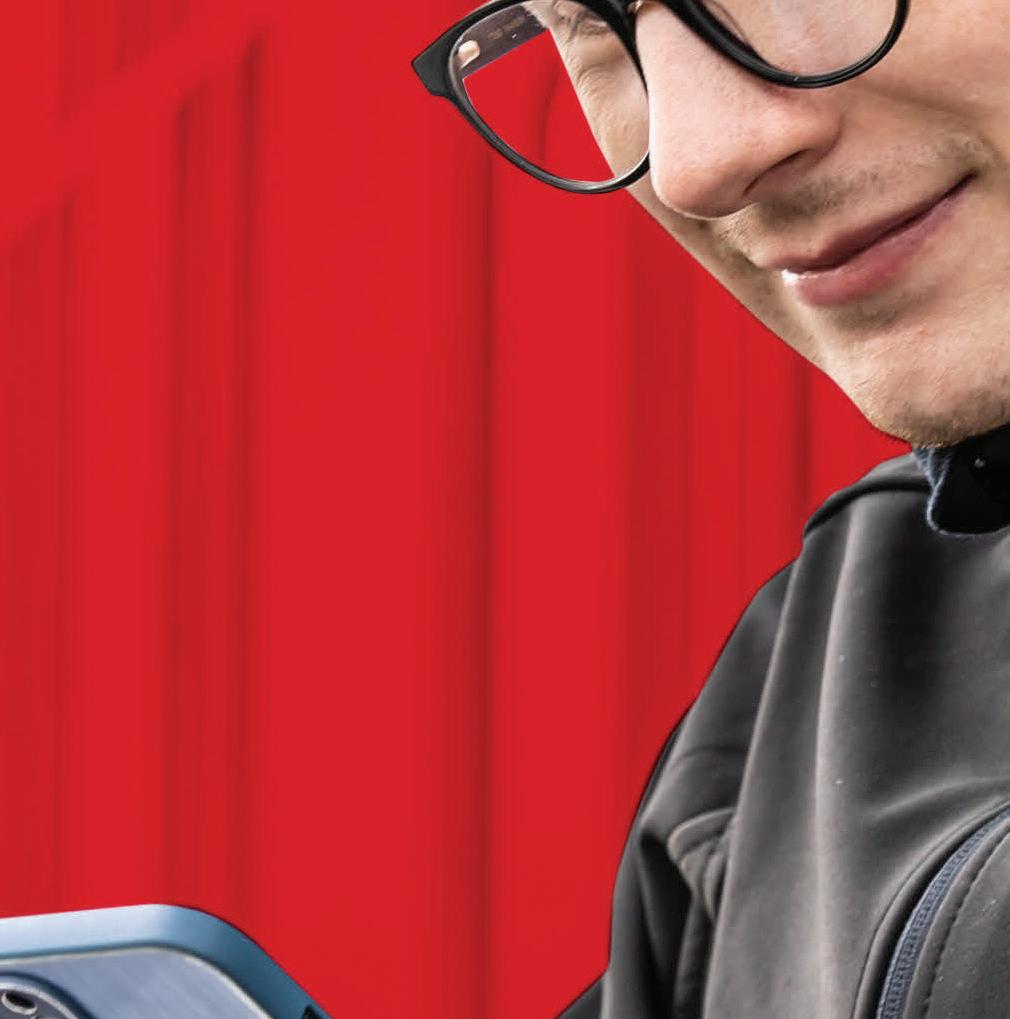
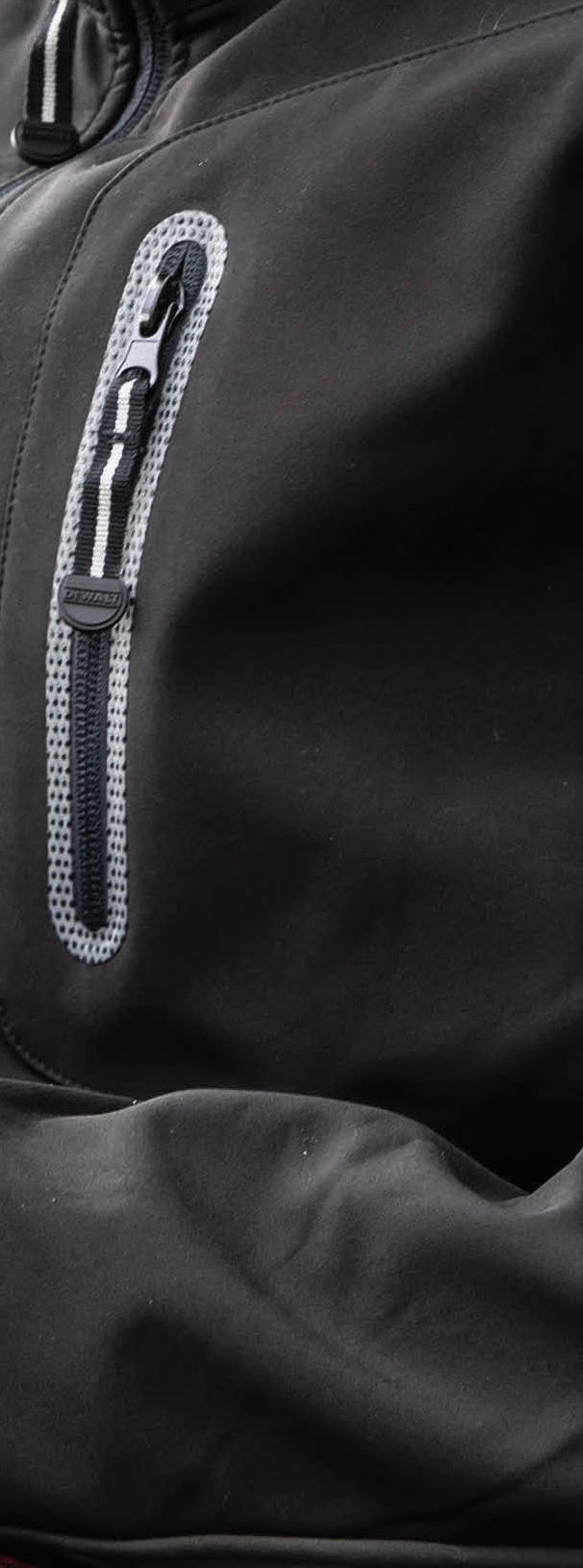







Scan the code to request your copy or visit cef.co.uk/request Find it, Price it, Buy it with the all new CEF Trade Catalogue and you could win an amazing VIP sporting experience. VIP WIN FIND IT PRICE IT BUY IT We are rated 4.6 out of 5 Check out full details in your copy of the CEF Trade Catalogue.
SMARTPHONE SOLUTIONS
Facility managers have always had to cope with what appears to be mutually exclusive demands. Not only do they have a wide remit to juggle— whether that’s maintenance, cleaning, mailroom, reception, security and so on— but they’re tasked with providing these services at the right quality, the right time and at the right price. It’s tough to do.
COVID-19 has added another complicating dimension for them. Initially, facility managers had to rapidly respond to introduce health and safety protocols to guarantee a safe working environment. Now they have to cope with a whole new employment paradigm, namely hybridremote working, which is making the workplace significantly more dynamic, fluid
and complex.






Pre-pandemic, the norm was for most employees to work on-site. It was therefore easier to o er access to a building and forecast its utilisation. Today, employees are in and out all the time and work remotely, capitalising on the latest unified communications apps like Zoom and Microso Teams.
Data from the O ice of National Statistics supports this. It shows that hybrid work is very much here to stay, with 84 per cent of people who took up home working because of COVID-19 saying they plan to carry out a mix in the future and work both from home and at their place of employment.
The knock-on e ect for facility managers is considerable. They need e icient and easy ways of managing building access

whilst grappling with today’s more strategic challenges such as delivering against stringent environmental, social and governance (ESG) goals.
EVOLUTION OF ACCESS CONTROL
The role and benefit of access control has changed markedly in recent years. No longer is it just a way to prevent entry to a building by unauthorised people. As the technology has evolved, it is playing a far greater part to enhance the operational engineering, maintenance and functioning of buildings.







A key enabler of this change is the option to transition away from using physical plastic access cards - which utilise RFID technology - to smartphone

DECEMBER/JANUARY 2023 26 CASE STUDY ACCESS SOLUTIONS
Jaroslav Barton, HID’s Product Marketing Director for Physical Access Control, says
the uptake of smartphone-based solutions o ers tangible benefits,
as seen in a case study on the Skyliner skyscraper in Warsaw, Poland
- based solutions, along with wearables like smart watches. These then leverage virtual credential technology connecting to mobile-enabled door readers to allow people to enter.



A ra of benefits can be gained from these mobile access solutions, unlocking the potential for smarter, greener and more e icient buildings.
SIMPLIFIED MANAGEMENT
Any iOS or Android device can be used, with so ware-based management running in the cloud making it straightforward to then deal with the licencing, allocation of virtual credentials, setting of building access rights, validating or revoking of IDs remotely and dealing with visitors or contractors. The upshot? Mobile access solutions make life easy for time-pressed facility managers as they’re much simpler and more e icient to manage and use.
Products that are interoperable and support common industry standards are readily available, too. Using open APIs and so ware development kits (SDKs), integration is simplified, enabling corporate real estate (CRE) owners to create an ecosystem of solutions to manage their buildings, while avoiding vendor lock-in. This makes them easy to integrate with HR, IT, HVAC, time attendance, lighting and other systems that combine to make up smart buildings.
Transitioning to mobile access is straightforward. The door readers installed need to be checked. The latest models support mobile access out-of-the-box.
Others can be upgraded [really old ones have to be replaced]. It’s then just a case of obtaining and installing the mobile access solution - a smartphone app and server-side tools - and integrating this with whatever building management or security systems are in place. Many readers support both physical cards and virtual
credentials so that staged roll outs are possible. This is ideal in large buildings with multiple tenants where a ‘big bang’ switchover would just be too complicated.
MOBILE ACCESS BENEFITS
Mobile-based credentials and door readers support the latest encryption, communications and authentication standards - to establish trusted identities -

just like physical access cards. Mobile has key advantages. First, users take far more care looking a er their expensive smartphones compared to plastic access cards; research shows a whopping 17 per cent are lost or mislaid every year. Each time this happens, it creates a security risk.
Second, if someone does indeed lose their smartphone, they’ll clock this far more quickly (who can function without a phone these days?!) with their digital credential then able to be quickly disabled wirelessly. This remote management capability with mobile access is fundamentally the important advantage.
It is estimated that more than 550 million PVC access cards are made and sold annually each year, creating 2,700 tons of plastic waste and emitting 11,400 tons of carbon emissions. It is a significant amount especially as so many cards have to be replaced regularly. Digital credentials remove this environmental overhead in one fell swoop, helping boost a building owner’s sustainability initiatives and ESG Index scores.
With support for both Bluetooth and NFCtwo technologies enabling data transfer over short distances - mobile access solutions also provide touchless entry like traditional physical cards. This makes it as fast for people to open doors, and - in the context of COVID-19 infection prevention - there’s an obvious health benefit given door reader surfaces aren’t continually touched, nor do they have to be constantly cleaned.
A KEY ENABLER FOR SMART BUILDINGS
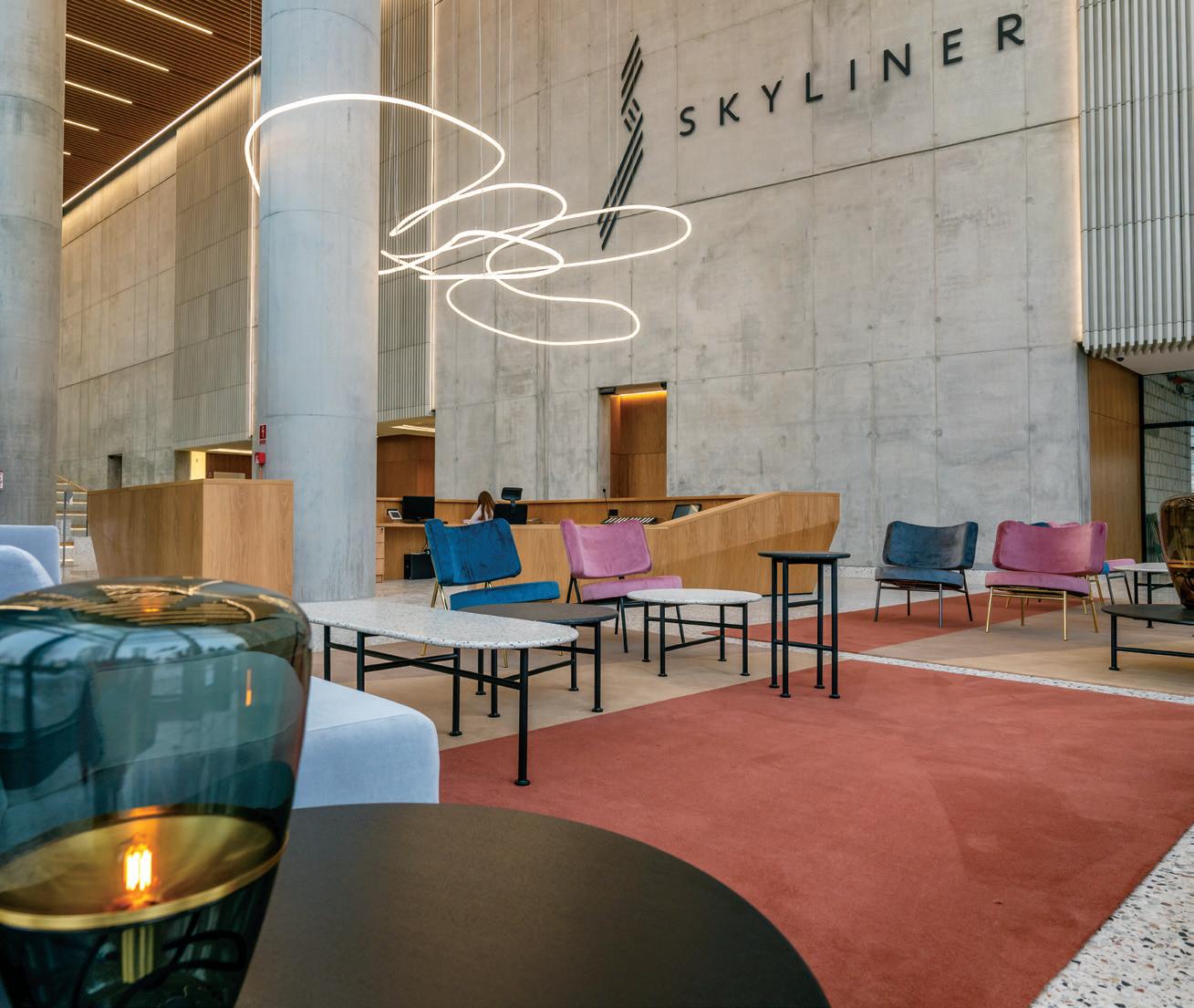

Many FM and property management teams include workplace experience apps as part of the services o ered so that users get the most value out of their buildings. When mobile access is integrated with these

DECEMBER/JANUARY 2023 27 FMJ.CO.UK ACCESS SOLUTIONS CASE STUDY
Mobile access solutions make life easy for timepressed facility managers as they’re much simpler and more e cient to manage and use.”
CASE STUDY ACCESS SOLUTIONS
people gather in a meeting room. Similarly, workplace app developers could take ‘sta location’ to augment the solutions they provide.
In summary, mobile access solutions are evolving to help CRE owners and facility management sta di erentiate their buildings, add value to tenants and make their operations ever more e icient. Not only that, but they’re cost e ective and quick to deploy - ultimately making the job of busy facility managers more straightforward and productive.
A SMART BUILDING IN PRACTICE
The new Skyliner skyscraper in Warsaw, Poland, is an example of how mobile access integrated with a feature-rich workplace app is being used today.

One of the tallest buildings in the capital at 195 metres high, Skyliner has 42 stories, 49,000 m2 of leasable space, with the lower levels dedicated to retail. The developer, Karimpol Group, installed a workplace platform developed by Hellopark - branded the SkylinerAPP - in conjunction with a HID Mobile Access solution and 300 Bluetoothenabled HID door readers.
Sta use their Apple iOS and Androidbased smartphones and the SkylinerAPP to physically access the building, reserve car parking places, book desks and conference rooms, as well as receive information about the building or events going on. It is also a tool to log maintenance requirements, with the building’s facility managers - VINCI Facilities Poland - then informed about them via the system so they can be dealt with promptly.
apps, it makes access control an essential component, driving up app tra ic given people have everything in one place on their phones. This makes mobile access an obvious tool to help CRE owners boost their net operating income (NOI). Happier tenants mean less churn, resulting in greater longterm revenue generation.
In addition, there’s always a focus on how to decrease operational costs. Data generated from access control systems - like the number of people entering and exiting a building, floor or room - combined with other building sensors help owners monitor and interact with their buildings far better. It is the door readers that provide this kind of granular data.
Perhaps one of the most exciting developments with mobile access control is the forthcoming availability of solutions with built-in ‘identity positioning’. This provides
real-time information ‘behind the door’ about how people are using the building - based on data provided by their phones. This is certainly not “Big Brother” tracking an individual’s movements. No personal and private data is collected. Rather, information is anonymised and grouped in order to provide an overall picture about trends like space utilisation, occupancy and so on.
Perhaps one of the most exciting developments with mobile access control is the forthcoming availability of solutions with built-in ‘identity positioning’. This provides real-time information ‘behind the door’ about how people are using the building”
In terms of physical access control, the strategy involved segmenting the building and creating various zones based on usage: o ice space for tenants, free access areas for the public, along with underground parking. To keep everything as simple as possible, touchless entry has been introduced so as people pass the turnstiles in reception a li is automatically called to take them to the correct level.
It moves access control from just being a security solution to one that takes on a far more important role in a smart building as identity positioning adds the context of location. Take a simple example. By providing real-time data like this to an appropriate HVAC system, the AC could be turned up automatically if a group of 20
To date, 1,600 users are registered in the SkylinerAPP and tens of thousands of requests are made within it. The process of adding and authorising sta is also straightforward. On the backend, an o ice administrator first registers people in the building’s security management system. Each employee then downloads the SkylinerAPP by visiting Google Play or the Apple App Store. The system has also been designed so that tenants manage the virtual access credentials themselves - from within the SkylinerAPP - removing the overhead for VINCI Facilities Poland to do it for them.
DECEMBER/JANUARY 2023 28
DRC300 ROBOTIC VACUUM




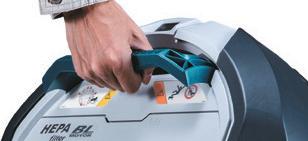

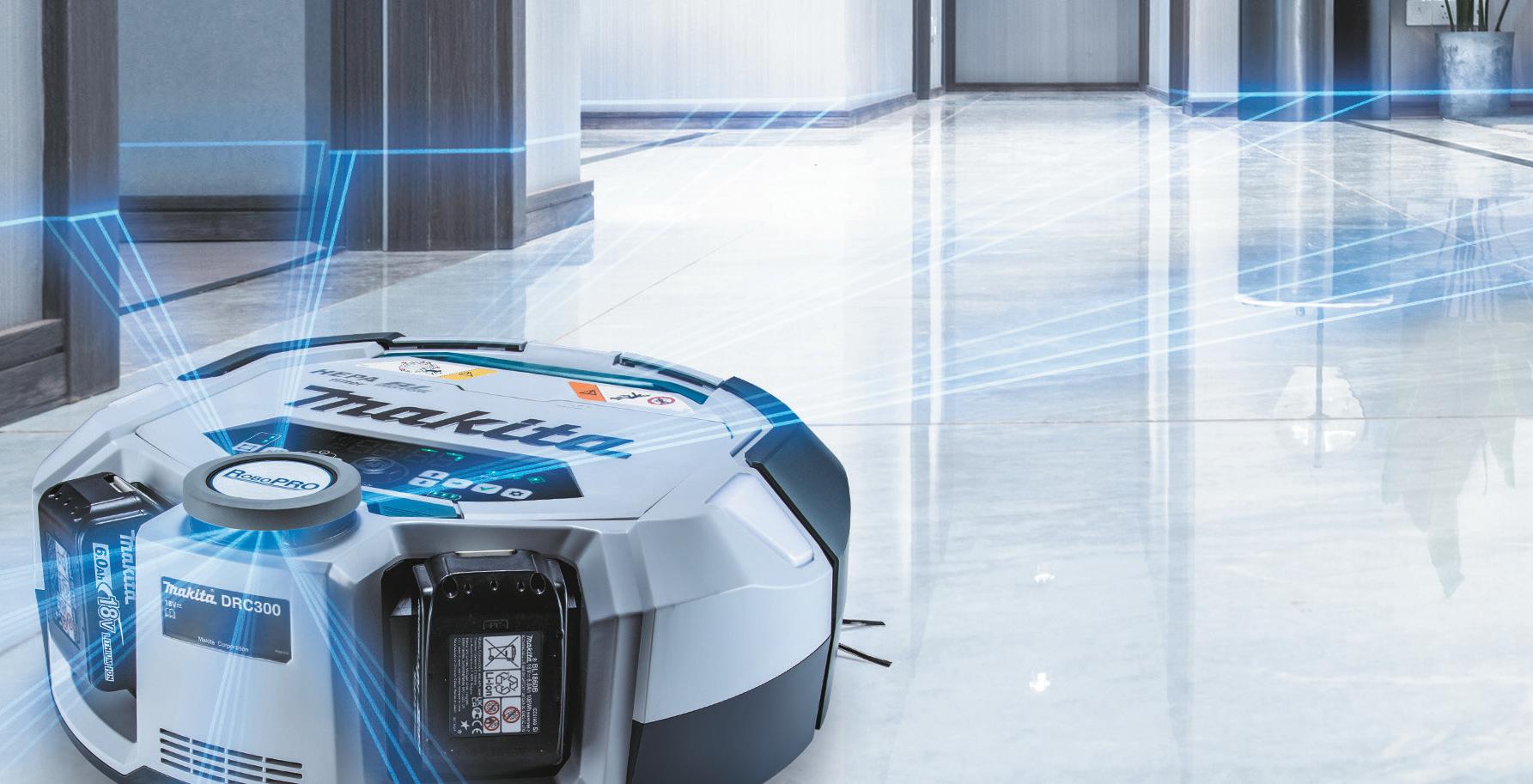


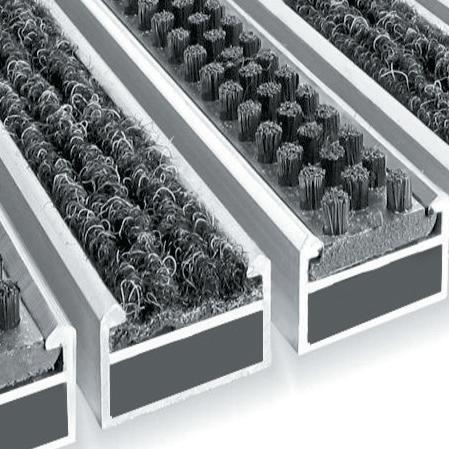


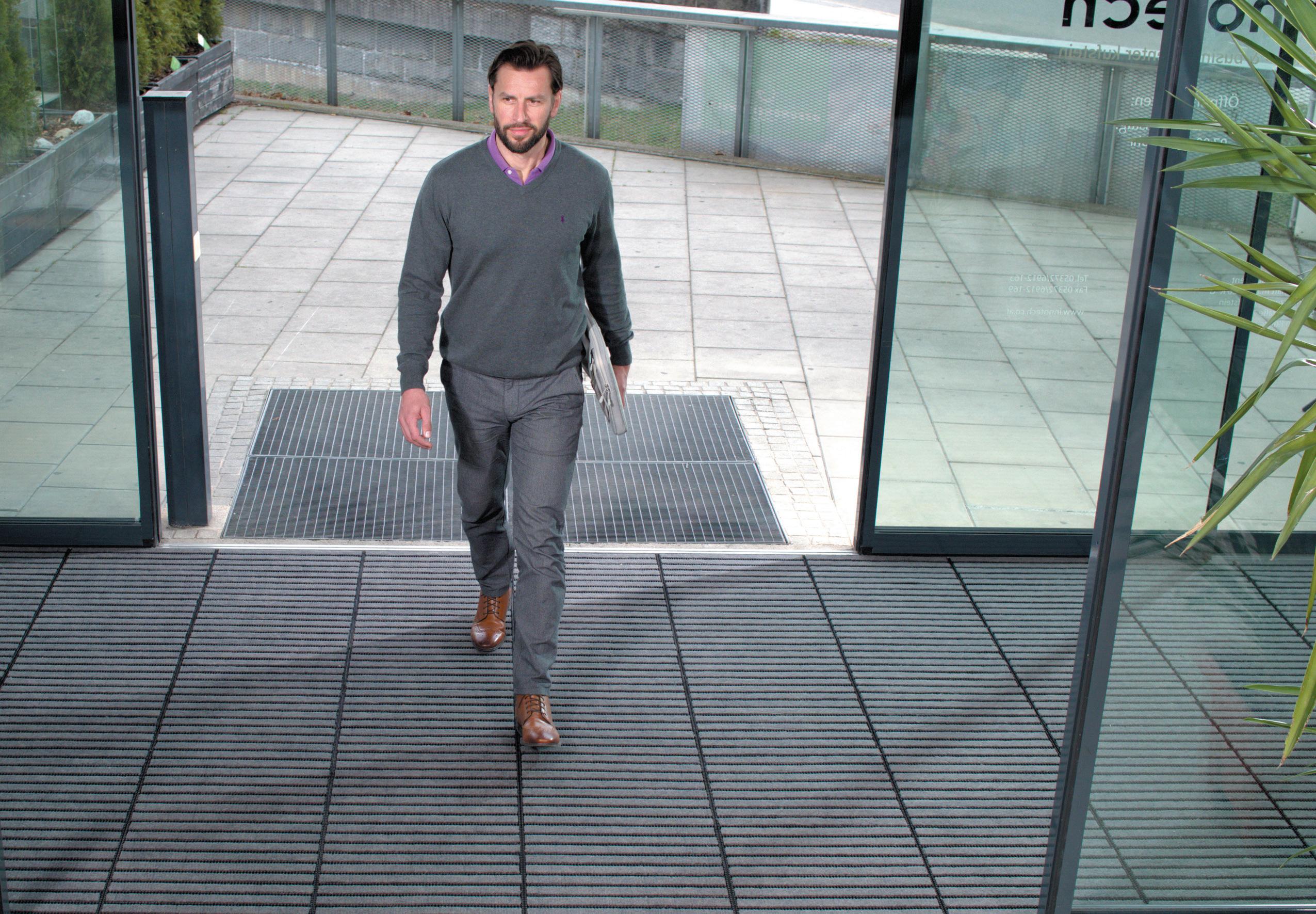
Powered by either one or two 18V LXT Li-ion batteries in parallel, Two running modes: Mapping and Free mode, Connectable to a smartphone (with a dedicated app installed) for smart cleaning, Boundary sensing feature using magnet tape and cleaning range setting on App, RF remote controller for wireless controlling of the cleaner, answerback function and more Obstacle detection with six ultrasonic sensors, Equipped with one main brush and two side brushes (detachable without tools), LED job light, Constant speed control, Tool-less brush change, Filter clogging notification, Continuous run time: 240 minutes with 2 (6.0Ah) batteries in parallel on a single full battery charge, Large carry handle, Filter type: HEPA filter. Running Speed 0.3 m/sec, Dust Bag Capacity 3.0 litres, Mapping and Free mode settings, Net weight 9.6 - 10.6 kg.

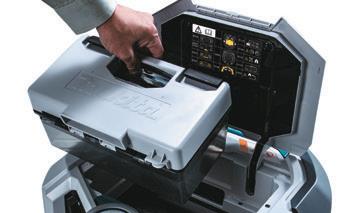
MAKITAUK.COM/PRODUCT/DRC300Z
LiDAR Senser and Camera
The LiDAT senser maps the two dimentional space of a room and the camera maps the 3D space.
Mobile App Cleaning history, persentage complete, room maps and much more.
DIGITAL MAINTENANCE
The concept of the smart building can still seem out of reach for many FMs. Contemplating this ‘bleeding edge’ terminology for the aging buildings across most estates, and it appears both expensive and complex. We need to reset our view. A building is smart providing it contains appropriate levels of monitoring, control, and visibility of systems to maximise performance, optimise user comfort and support a net zero journey.
Smart buildings technology can be as simple or complex as needed. Commercial o ice buildings with thousands of assets can benefit from integrated BMS (Building Management System) and energy
management systems, drawing on tools akin to Artificial Intelligence.
Conversely, many smaller buildings require a much leaner approach, blending solutions such as energy monitoring and IoT (Internet of Things). In both cases, there is a cost vs reward balance, so weighing up the potential benefits against deployment and ongoing operating costs is vital.
THE KEY TO NET ZERO?
Buildings are responsible for 39 per cent of global carbon emissions, with the vast majority (28 per cent) coming from operational emissions and the energy
needed to power, heat and cool them. A 2021 survey by IWFM found that reducing energy and the carbon footprint of buildings is a key priority for 70 per cent of respondents, but the majority (62 per cent) said they didn’t have access to the data they needed to meet these sustainability goals.

To make a meaningful impact, we must start with improving building performance and reducing energy demand. It is now considered that commercial o ice buildings will need to reach an annual energy intensity of 70kWh/m2 [NLA] to achieve net zero targets. Many buildings will fall short of these levels due to the shortcomings of the fabric elements, but until that limit is

DECEMBER/JANUARY 2023 30 FOCUS SMART BUILDINGS - HARD SERVICES
Smart digital maintenance combined with an actionable maintenance plan can drive better building performance, says Chris Coath, Director of Energy and Asset Management at NG Bailey
reached, every kWh of energy waste should be targeted and every possible kg/CO2 should be saved.
Smart building technology can be a vital tool in meeting these targets.
DIGITAL MAINTENANCE
So, you have a net zero target and a smart building; but how do you extract the maximum potential of your assets? In many cases, even the smartest of buildings struggle to realise their potential, as the fundamental components of building operation and maintenance remain unchanged.
This is where digital maintenance can help. Driven by smart technology it unlocks the ‘under the bonnet’ insight of assets to help influence decisions, but most importantly, closes the gap between data and action.

At the core of digital maintenance remains a PPM (planned preventative maintenance) planner. Tailored to specific assets installed and inclusive of maintenance tasks completed remotely, the combined e ect is a dynamic planner and an engineering team that spend less time on assets working reliably at peak performance, and instead invest more time on less reliable assets or those that have scope for optimisation.
It is also vital to recognise that all data needs interpretation. As such, integrating data analysts and energy managers into a wider engineering team is crucial to interpret, triage and track actions as they arise. The most e ective relationship occurs when engineers and analysts work in collaboration to resolve issues, diagnose faults and measure benefits.
Digital maintenance should now be the default across the FM industry. It will help drive asset performance, allow customers to make rapid changes, and vitally increase the scale and pace of our journey towards achieving net zero.
SIMPLICITY CAN BE KEY
Digital maintenance works for all buildings - from a small building which has only basic energy data, all the way up to large estates with expansive BMS networks, integrated systems, and advanced energy monitoring.
At NG Bailey, some of the biggest improvements for customers has come from the analysis of basic energy data and the updating of a time schedule, so assets are only in use when the building is occupied. Across larger estates we work with customers to deploy a range of smart building technologies to collect, integrate and analyse data focused on more complex and wider scale changes to achieve their
overall end targets.
For one customer, we monitor energy and BMS data 24/7 via our Technical Operations Centre and issue live reports and updates to both the customer and our on-site engineers on asset performance. If asset performance changes or there is an opportunity to make an improvement, we investigate and then act. In this example, within the first days of digital maintenance commencing we had found systems running unnecessarily throughout the day and night, as well as at weekends. Using this data, our on-site engineers immediately corrected the schedules, delivering savings of 9,000 hours of asset run time and 18 per cent associated energy consumption
For another customer, we collect over one billion BMS data points each year and monitor over 2,000 energy meters as part of a programme of digital maintenance, energy management and carbon reduction projects. By monitoring assets more
To make a meaningful impact, we must start with improving building performance and reducing energy demand. It is now considered that commercial o ce buildings will need to reach an annual energy intensity of 70kWh/m² to achieve net zero targets.”
closely and unlocking previously unseen data, we’ve helped our customer make changes that have saved 10,500,000 kWh of energy and led to a 25 per cent reduction in heating, ventilation and air conditioning (HVAC) call outs, as well as identifying over 360 project opportunities for carbon and energy reduction.
Access to this level of data is incredibly powerful, giving us a 24/7, 365-day view of how a building and its individual assets are performing. But data alone cannot make the improvements needed. That’s why access to a complex platform is o en meaningless without an actionable maintenance plan built around the data.
ENGINEERS ARE THE KEY
E ective delivery of digital maintenance involves speeding up the triage of data into action, which requires e ective integration with the engineers on site. These are the people who work with these assets day on day and can deliver the changes needed for success.
Digital maintenance means less of the engineers’ time is spent on reactive call outs, freeing up their time to focus on proactive projects, such as those that advance savings in energy and carbon. We’ve found that this has had positive e ects on employee engagement, as
engineers have more capacity to work on projects that deliver real change and allow them to see the benefits of their hard work.
We are also working on innovations that shrink the gap between data and action even further. On one of the first net zero sites in the UK we are working with engineers to provide them with video headsets, which will allow direct two-way communication with the engineering design teams involved in the project and access drawings and data while physically standing in front of the asset. This technology helps us increase our knowledge sharing bandwidth and allows us to turn data into action in real time.
NEXT STEPS FOR FM PROVIDERS
As FM providers face ever growing challenges, it is vital to employ e ective solutions that can deliver improvements at scale. By identifying simple goals and objectives from the data and collaborating with stakeholders – from service providers to engineers on the ground – it is possible for data to realise outstanding performance improvements. In turn, by ensuring our buildings really are the smartest they can be, we are not only helping to transform the building maintenance sector for the better but for the planet too.
DECEMBER/JANUARY 2023 31 FMJ.CO.UK SMART BUILDINGS - HARD SERVICES FOCUS
SAFE AND SMART
By integrating with HR systems, the smart building will know which employees are scheduled to work in the o ice. Push notifications can inform employees about changes such as moving desks, routine maintenance work, or if they have been allocated a parking space.
Once the employee arrives, the CCTV systems will identify the employee and, combined with their employee credentials on their smartphone, will be granted access through the access control systems.
On a wider building level, occupancy data can provide business owners with actionable information to use only heating and lighting when needed. Managers can group employees on one floor rather than spread across three or four, reducing the need to heat and light all of this space. In addition, systems can provide other savings in services such as cleaning. There is no need to vacuum clean an area that hasn’t been occupied.
EFFICIENT MAINTENANCE
In the past, HVAC, lighting, and security systems have been separate entities. Technological advancements have enabled us to knit these elements together. As a result, the modern-day building is smart. In fact, the smart buildings market is on a healthy trajectory and is projected to grow from its current value of £68.5 billion to £279 billion in 2029, according to Fortune Business Insights.
But smart buildings and intelligent technology are all about data. Monitoring, capturing, sending, and receiving information through the Internet of Things (IoT) devices, sensors, so ware, and online connectivity. This valuable information allows building managers to understand various building characteristics, generate insight, analyse usage patterns, and make informed decisions to optimise a building’s environment and performance.
Before anything else, providing employees with a safe building to work in is essential. That starts with installing the correct fire and security systems for that building’s particular needs.
With these fire and security solutions as a foundation, FMs can build on this solid base to connect other devices and link in Building Management Systems (BMS) to bring all of this together and create a highly e icient and smart building.
This gives FMs and building managers ‘control’ of the many facets of their
buildings’ security systems, such as CCTV and Access Control. Using AI and analytical technologies, building managers know occupancy rates, which can trigger many responses, such as switching on and o lighting, air-conditioning, and heating. As well as receiving information, building managers can ‘push’ alerts to occupants. If a building manager wants people to know they should no longer be using a particular floor or warn them of scheduled maintenance, they can alert everyone concerned.
GETTING BACK TO THE OFFICE
Following the pandemic, many businesses stuck with a hybrid working system. While there might be debates around whether employees are more productive in the o ice or at home, one thing is for sure - an employee who feels happy and comfortable will be more motivated and e ective than those who don’t.
Many businesses are now attempting to bring employees back to the o ice and are utilising smart technology to make their spaces more comfortable. Employees can create a bespoke working environment in their o ice with the touch of a button. Connected systems such as heating, air-conditioning, and lighting can all be adjusted using an app. Colleagues can even customise their work area to adjust the height of their desks or lighting around the computer.
Smart technology also allows fire and security engineers to monitor individual devices constantly. If part of the system starts to fail, then remote intervention and maintenance can be carried out to isolate or rectify the issue. This enables the systems to maintain consistent coverage without needing an engineer to attend, which incurs no additional cost to the client and minimises the engineers’ carbon footprint.
Many systems are also ‘future proofed’, so their features are already in place and will be compliant if and when industry standards change.
ENVIRONMENTAL AND SOCIAL IMPACT

The climate emergency has placed a greater emphasis on a business’ environmental impact. As smart buildings work more e iciently, using less electricity and other utilities contributes towards these goals. The data provided to building owners and FM is detailed and tangible and helps organisations combat any claims of greenwashing.
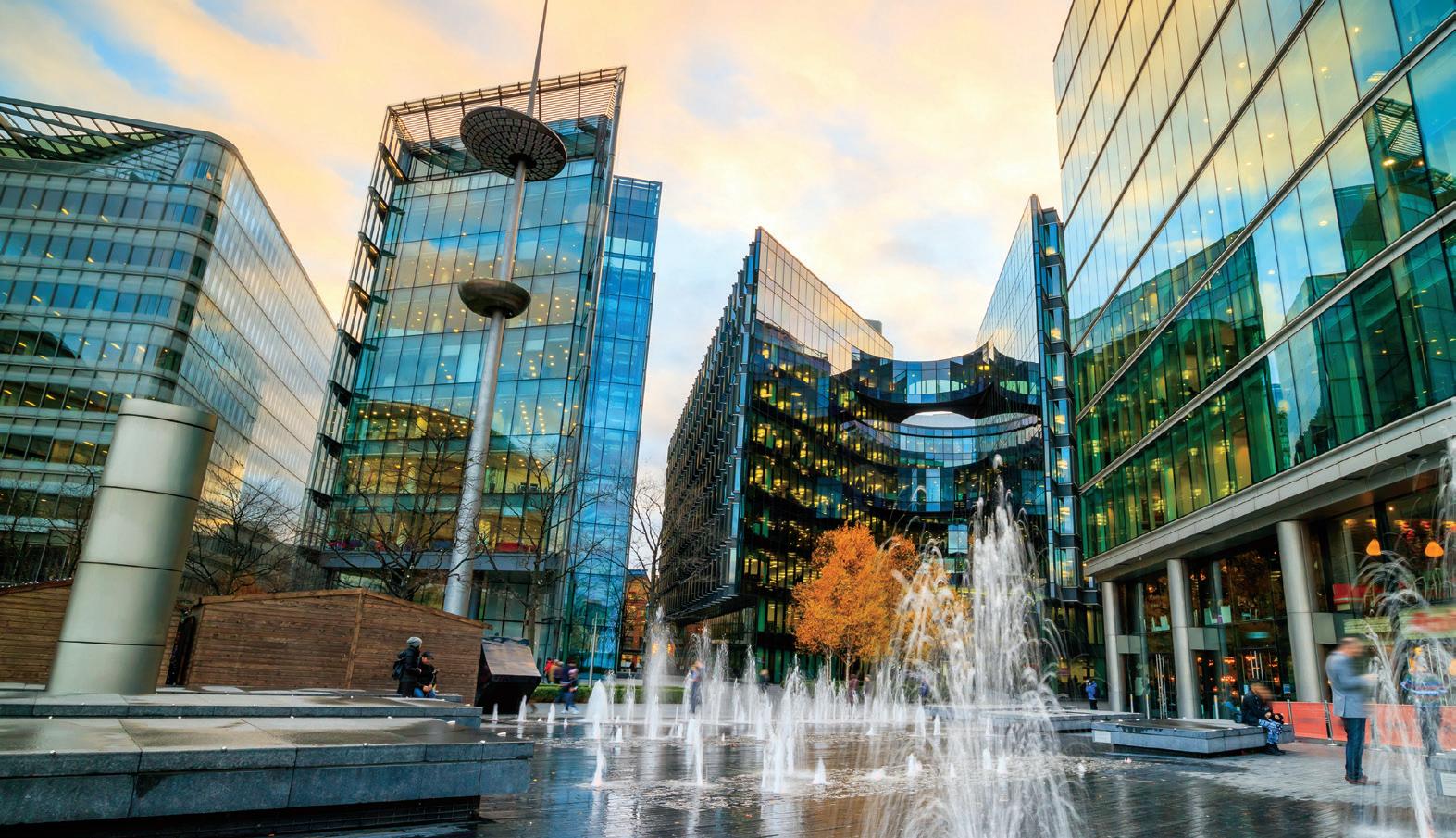
Another added benefit of a highly e icient building is the cost of running it. This is particularly important in the current climate of rising energy costs and will have organisations save money.
Ultimately, the convergence of these once disparate systems means FMs can optimise working environments to help employees boost productivity and enhance their wellbeing. The data provides a quick and e ective way to analyse how the building performs to achieve greater energy e iciency and reduce the environmental impact. And most importantly, from our point of view as fire and security specialists, smart technology improves safety.
DECEMBER/JANUARY 2023 32 FOCUS SMART BUILDINGS -
SAFETY
Neil
Coles, Senior Strategic
Relationship
Director
at
Chubb Fire and Security, explains how smart fire and security systems can help keep buildings safe and secure






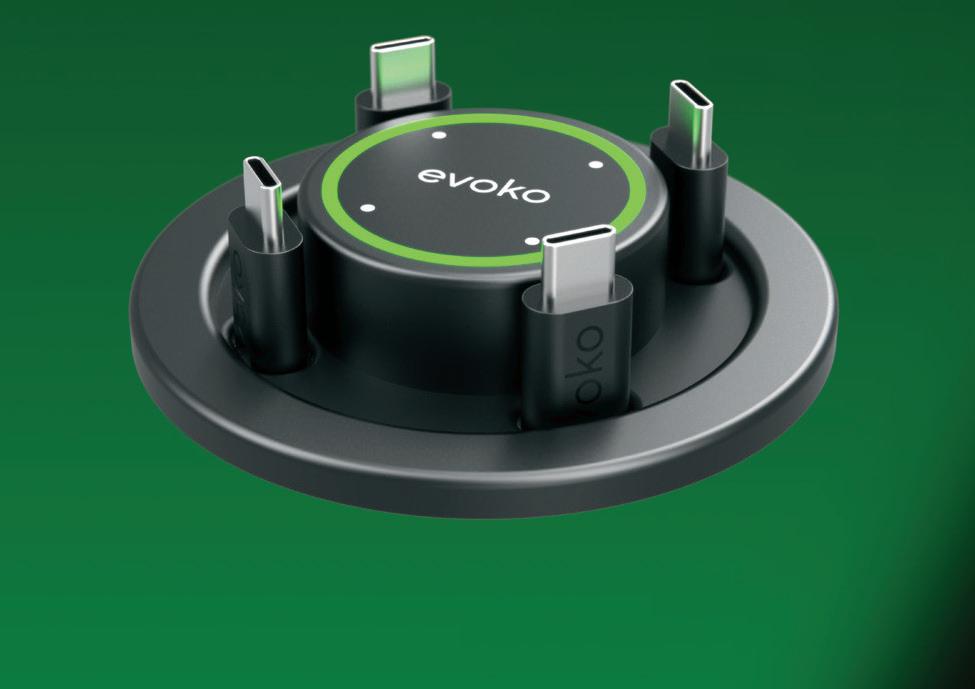
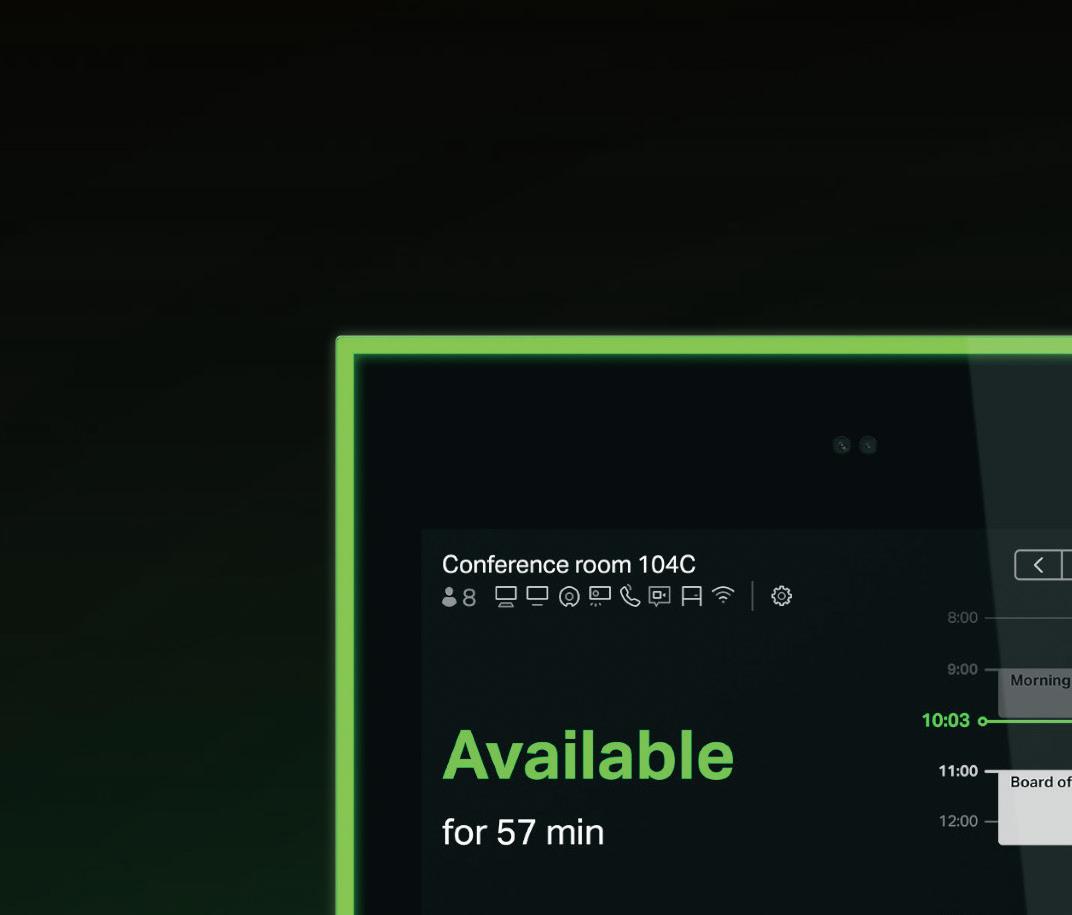







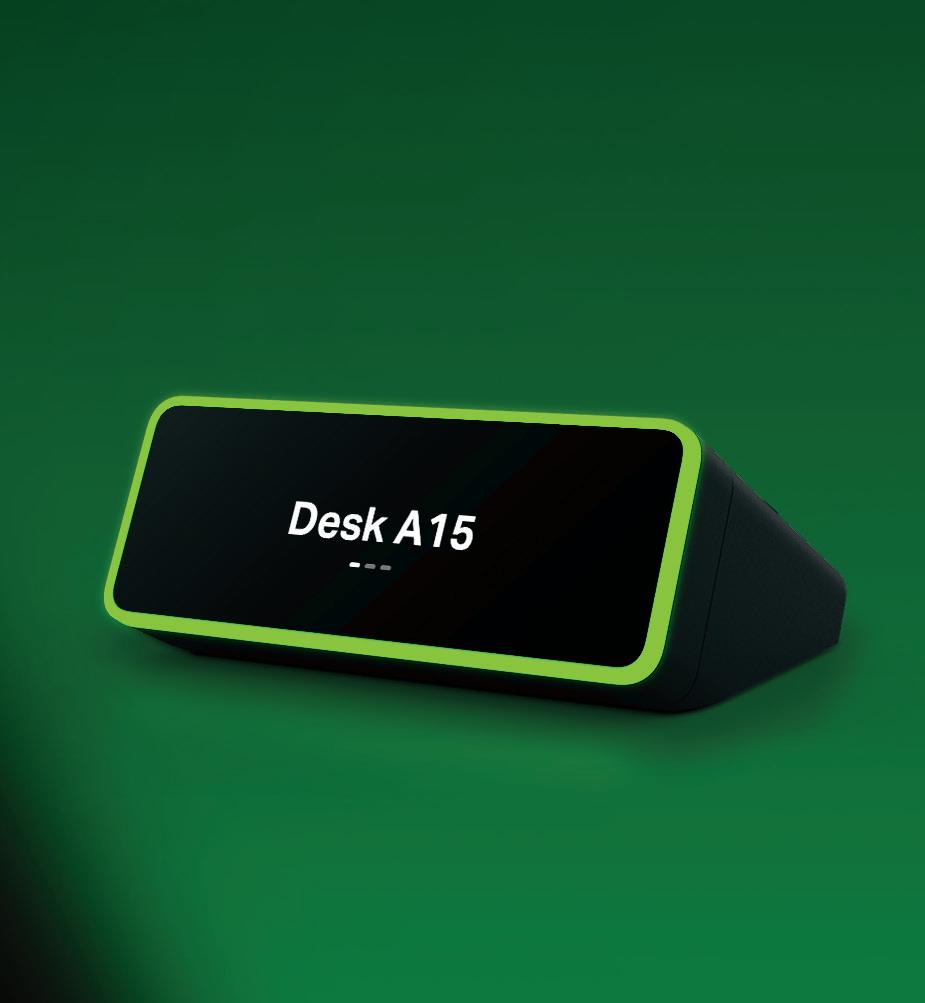


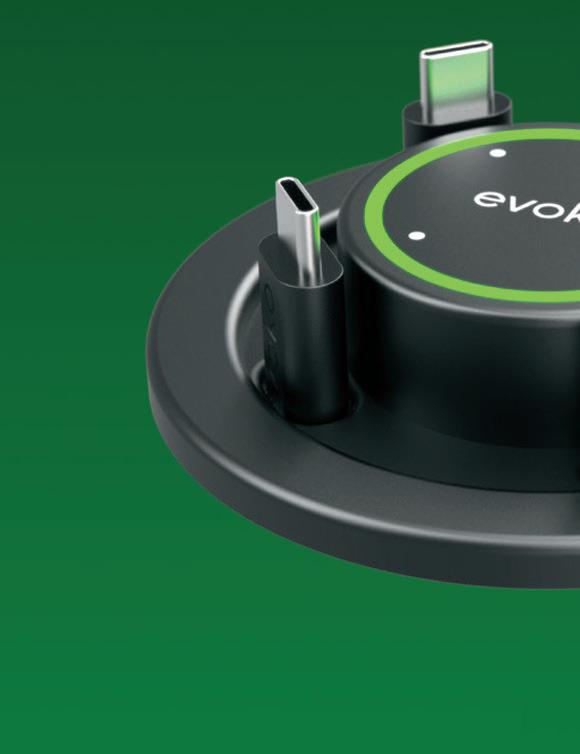






Simplify your meetings, room booking, desk booking and visitor management with flexible and fully integrated hardware and software solutions. Room booking Naso room manager Room booking Liso room manager Desk booking Kleeo desk manager Meeting connectivity Delo connection manager Clever workplace solutions 01638 510 900 sales@anders-kern.co.uk www.anders-kern.co.uk/evoko-naso Get in touch
THE TEMPERATURE DEBATE
While the UK is known for its mild temperatures, averaging between 0ºc in the winter and 32ºc in the summer, global warming has begun to take its toll on the climate. On July 19th, 2022, a record temperature of 40.3ºc was recorded by the Met o ice. Many flocked to their workplace to take advantage of the air conditioning. Others have questioned if an increase in heat waves means it is time for the UK to introduce a maximum working temperature.
More recently, the Times reported that MPs have complained of overheating inside the poorly
insulated Palace of Westminster, where some o ices and meeting rooms are either freezing cold or unbearably hot. So, what is the new optimal temperature to set the thermostat to, especially as global warming escalates?

2022 SURVEY RESULTS
Several high-profile studies have discovered that the ideal o ice temperature usually falls between 21ºc and 22ºc. To answer whether or not this was still the case, we ran a survey, asking o ice workers across the UK what their ideal o ice temperature is
- and whether they’d ever had an argument about the temperature in their workplace.
Of the 1,035 respondents, 286 (27.4 per cent) claimed that 21ºc was the temperature they preferred to work at. In close second and third, 247 (23.7 per cent) of respondents voted for 20ºc, while 224 individuals (21.5 per cent) preferred a 22ºc environment. While this change is subtle from the standard 21ºc to 22ºc environment, this alteration may suggest that as the UK grows warmer, air conditioning does not need to be as high - great news for firms, especially during the cost of living crisis.
FOCUS OFFICE COMFORT DECEMBER/JANUARY 2023 34
What is the ideal o ce temperature in the UK and how does it compare to other less temperate regions of the world? Marina Vassilopoulos reports on behalf of PSG Global, an international provider of o ce-fit outs and relocation project management services
arguments.
However, demonstrating the need for temperature control, 572 (54.9 per cent) of respondents claimed to have had an argument about the temperature in their workplace. Why is this?
























IMPACT OF TEMPERATURE ON WORKERS
The temperature of your o ice is a lot more important than you may initially believe.
Temperature has a massive impact on your mood, and can have a subsequent impact on your productivity and attitude towards work.

A 2008 study conducted by Denissen et al. discovered that higher temperatures were associated with negative moods, leading to persons feeling irritable, distressed and jittery. Similarly, a 2013 study by Hsiang et al. discovered a link between higher temperatures and human aggression, with conflicts jumping by 14 per cent and interpersonal violence by four per cent in warmer environments. As a result, having your temperature set too high may directly lead to bad-tempered sta , sparking

regularly impacts one in three people
result, your o ice temperature
But it is not only hot weather that can have an adverse impact on mood. Cold weather can lead to several negative consequences, including insomnia, appetite changes, di iculty concentrating and even social withdrawal. All of these traits are symptoms of seasonal a ective disorder (SAD), which regularly impacts one in three people during the winter months. As a result, your o ice temperature should not be high, nor too cold - making it di icult to decide the level at which you should set the thermostat.
of Business, conducted a study in which male and female students completed maths, verbal and cognitive tests - while wearing weather-appropriate clothing. These tests were completed at several temperatures, ranging from 61 (16.1ºc) to 91 (32.7ºc) degrees Fahrenheit.
performed better at temperatures ranging
Beyond unhappy or irritable sta , there are several ramifications for an unsuitable o ce climate. While there are currently no laws in regards to a maximum working temperature, employers must follow health and safety legislation to ensure the temperature is ‘reasonable’.
control - can also alter your mood,
The ideal temperature is further complicated by the discovery that it is not only internal temperatures that can a ect your sta . Sunshine, humidity and rain - factors the o ice thermostat sadly cannot control - can also alter your mood, with sunshine likely to increase your mood, while humidity and rain can make individuals more tired and irritable.
GENDER DIFFERENCES
Interestingly (and again complicating the ideal o ice temperature), scientists have noted that an individual’s gender has a profound impact on their preferred o ice temperature. An initial factor may have been the dress-code of a business, with men traditionally wearing suits in o ices, while women wear skirts or dresses. Women would naturally be colder as a result of their clothing providing less coverage.
Despite this, findings by Tom Y. Chang, an Associate Professor at USC Marshall School
performed better at below
The results discovered that women performed better at temperatures ranging from 70 (21.1ºc) to 80 (26.6ºc) degrees Fahrenheit, and that men performed better at below 70 degrees Fahrenheit.
Concurrently, his team discovered that women were more negatively impacted by colder temperatures than men were by warmer ones.
The study suggests that women are more susceptible to changes in temperature, regardless of the clothing worn.
the clothing worn.
As a result, it may be worth considering gender when setting your thermostat standard. A femalecentric o ice may benefit from a warmer temperature, while a male-orientated o ice may prefer cooler climates.
your thermostat standard. A female-


EFFECTS OF UNREGULATED OFFICE TEMPERATURES
Beyond unhappy or irritable sta , there are several ramifications for an unsuitable o ice climate. While there are currently no laws in regards to a maximum working temperature, employers must follow health and safety legislation to ensure the temperature is ‘reasonable’.
Legislation is varied but may include keeping the temperature at a comfortable level, alongside providing clean and fresh
FMJ.CO.UK OFFICE COMFORT FOCUS DECEMBER/JANUARY 2023 35
air to your employees. Causing your employees to overheat could lead to a lawsuit in regards to working conditions - so it is best to ensure all your occupants are comfortable and happy - which in turn may lead to more productive and loyal sta .
The increase in the frequency of heatwaves is simultaneously likely to influence lawmakers to introduce a maximum and minimum working temperature. As workers have found their rights bolstered by the COVID-19 pandemic, instigating several changes in the working environment as we know it, such laws help protect both businesses and individuals to ensure a mutually agreeable work habitat.
WHAT ABOUT THE REST OF THE WORLD?
While there is currently no legislation for a working temperature in the UK, this is not the case in several places worldwide with hotter climates. For example, the World Cup in Qatar has been subject to negative press, as migrant workers were used to build stadiums. These workers were not held to the same standard as Qatari workers, who benefit from a law that protects their workers from the summer heat.
As a standard, Qatari workers are prohibited to work outside between 10am to 3.30pm between June 1st and September 15th due to the risks of heat stress and extreme temperatures. At these times, the thermostat average varies from 34ºc to 37ºc, with humidity levels ranging from 40 per cent to 60 per cent across the months. The figures may seem low - especially when you consider the UK reached hotter temperatures this summerbut climate change has drastically accelerated temperature rises in the country and continent. The heatwaves that hit the area have subsequently led to terrifying temperatures, including 50.4ºc measured during July 2010 in Doha. At such heat, conditions such as heat stroke and heat exhaustion are likely - alongside irreversible damage to your cells due to the extreme conditions.
These drastic temperatures have necessitated studies. Zeke Hausfather, a Climate Data Scientist that works at Berkeley Earth, has stated that “Qatar is one of the fastest warming areas of the world, at least outside of the Arctic… changes there can help give us a sense of what the rest of the world can expect if we do not take action to reduce our greenhouse gas emissions.”
Qatar is therefore one to watch - and not only because of the World Cup. Despite this, it is worth noting that air conditioning and working conditions may not be the priority of the World Cup - but that temperature has been factored into construction for visitors. Each of the 40,000 seats inside the Al Janoub football stadium, built in 2019 for the 2022 World Cup, o ers a cool breeze. From small grates adorned with traditional
Arabic patterns, large vents push cold air towards ankles and out towards the playing field. The innovative air conditioning system was designed by Saud Ghani, an Engineering Professor from Qatar University, and was vital to the success of Qatar holding the World Cup. Other measures introduced include forced drinking breaks for players and moving the tournament to the winter to ensure cooler temperatures.
The only setback to the project is the cost. Qatar is an incredibly wealthy area, with money to spend - the Al Janoub Stadium itself cost $576 million (£493 million) to build, and its own gas reserves. In comparison, a standard o ice in the UK would likely be unable to a ord such measures, especially during a time when electricity prices are elevated. Despite this, when prices lower, introducing individual or personal cooling systems for each o ice worker could eradicate any arguments for a general temperature.
However, there are other, more a ordable measures being introduced worldwide. Another place to look at in regards to exciting, new solutions in the race against climate change includes a passive cooling system developed by MIT in Massachusetts, USA. Instead of using electricity, the system combines radioactive cooling, evaporative cooling and thermal insulation. The cooling system can therefore enable safe food storage for about 40 per cent longer under very humid conditions, allowing users to store food or replicate air conditioning - all for a minimal cost.
A standard o ice block could easily replicate this revolutionary system. The cheap installation and running cost could lead to o ices splitting into several rooms, each at a di erent temperature to suit the
individuals inside. Such a system, operating in conjunction with hot desking, could encourage collaborative working, foster relationships and enable your employees to alter their temperature throughout the day.

DOES THE IDEAL TEMPERATURE EXIST?
A study published by Nature in 2015 suggested the 21ºc to 22º model of temperatures was based o of an empirical model from the 1960s. Despite this, our recent survey results reveal a mixed pool of women and men desire a climate of around 20ºc to 21º. The degree shi could be in line with global warming, as the air is hotter outside of the o ice, or it may be down to a preferential shi .
The ultimate way to o er your employees their ideal temperature is by listening to your workforce and o ering suitable alternatives for any sta who may run hot or cold. For example, keeping blankets on site may be beneficial to any sta with cold intolerances and is a low-cost investment into sta wellbeing. Alternatively, readily available desk fans can be a game-changer for your employees in the hotter months, especially as heat waves become a normal element of a British summer.
Unfortunately, every individual has di erent requirements when it comes to temperature. For example, the Founder of Facebook (Meta), Mark Zuckererg, prefers a conference room with a temperature set to 15ºC. Alternatively, President Obama faced criticism for keeping his o ice warm enough to ‘grow orchids in’, with the plants thriving in 24ºc environments.
Whether a president or a billionaire, it is clear there is no unified answer for o ice temperature - wherever you are in the world. For now, we recommend setting the temperature to 21ºc - a er all, if your sta aren’t happy about it, they will be sure to let
know.
FOCUS OFFICE COMFORT DECEMBER/JANUARY 2023 36
you
“The increase in the frequency of heatwaves is simultaneously likely to influence lawmakers to introduce a maximum and minimum working temperature. As workers have found their rights bolstered by the COVID-19 pandemic, instigating several changes in the working environment as we know it...”






































The Cheeky Panda is the multi-award-winning producer of sustainable Bamboo paper products; which are kinder for you and the planet. For more information about The Cheeky Panda products or to find your nearest distributor please contact Al Suter on 07821 120122 or email Al.Suter@cheekypanda.com CheekyPanda.com Bamboo grows 30 times faster, absorbs 35% more carbon & produces 30% more oxygen than trees. Did You Know? Plastic Free Toilet Tissue 48 Rolls Antibacterial Multi Surface Wipes Flushable Hand Towel Bamboo Cocktail Napkins
HYGIENIC PRACTICES
Peter Whyte, Divisional Director of Soft Services at JLL company, Integral explains how o ce cleaning has adapted to changed workplace demands, while hygiene experts from The Cheeky Panda, NECS and Mechline Developments advise on getting through flu season
While some of the more stringent cleaning routines have dissipated gradually in recent months, many changes implemented during the pandemic have remained.
“People used to have fairly basic expectations of cleaning such as ‘has my bin been emptied or has the soap been refilled?’,” says Peter Whyte, Divisional Director of So Services at JLL company, Integral. “Now, however, enhanced cleaning regimes play a vital role in workforce confidence.”
As a result, once the Cinderella of facilities maintenance, janitorial services are moving from a largely a er-hours a air to a more nine to five model.

“With health and wellbeing top of mind, employees want the reassurance of seeing hightouch surfaces cleaned throughout the day,” says Whyte.
There are sustainability benefits, too. Delivering more cleaning activity during normal working hours means firms avoid having to power up the lights in largely empty buildings. As hybrid working evolves, cleaning is now upping its game by adopting smart technology
DECEMBER/JANUARY 2023 38 FOCUS HYGIENE
and the Internet of Things (IoT).
“It’s no longer logical or economical to maintain fixed cleaning regimes, given the way occupancy is fluctuating,” Whyte says.
Paper checklists are rapidly being replaced by data-driven dynamic cleaning powered by sensors, dashboards and dongles that do everything from gauge customer satisfaction sentiment to measuring air quality and identifying desk use. These always-on data points mean cleaning services can be driven by real-time usage, rather than pre-set schedules.
“The data even helps identify trends that inform future o ice design, such as if your six-person meeting rooms are most o en only occupied by two people,” says Whyte.
While cleaning robots may once have seemed far-fetched, you may soon be sharing a li with one, according to Whyte, who’ll be trialling a vacuum bot able to use elevators to travel between di erent floors.
JLL’s Future of Work Survey found that 51 per cent of organizations plan to start using industrial robots for cleaning, maintenance or security by 2025, as they become ever more sophisticated thanks to AI.
HIGHER STANDARDS
A drive towards recognised training and accreditations is another result of shi ing attitudes. Organisations such as the British Institute of Cleaning Science (BICSc) and ISSA are aiming to ensure global consistency in levels of cleaning across the sector. And with smart phone apps paving the way, dispersed cleaning operatives now have better access than ever before to ongoing communications, training and updates.
“More than ever, organisations are aware of the critical contribution workplace cleaning makes to e iciency, sustainability and most importantly, workplace health and wellbeing.”
FLU AND COLDS
According to Al Suter, UK FM Sales Executive for The Cheeky Panda Ltd: “Winter brings with it the annual onslaught of seasonal colds and flu, which, when added to a confined environment packed with people, is a classic recipe for a workplace cacophony of coughs, sneezes, and sni les. The need to ensure a rigorous preventative approach to workplace out-breaks of colds and flu has never been more necessary, as Australia, the barometer for how badly seasonal colds and flu will occur in the UK, has had one of its worst seasons in decades.”
Suter advises that hard surfaces are key transmission sites, think door handles, keyboards, and desks; which can harbour cold, flu and similar viruses in an infectious state for several hours through to days. Using a cleaning fluid or disposable wipe which can destroy viruses (and where possible bacteria) will reduce the risk of transmission of seasonal viruses. It is key to use a cleaning fluid or disposable wipe which has been tested against EN 1276 and EN 14476, this certification means they will ‘kill’ most viruses and bacteria to a 99.99 per cent level which will help to prevent outbreaks within the workplace.
Paper checklists are rapidly being replaced by data-driven dynamic cleaning powered by sensors, dashboards and dongles that do everything from gauge customer satisfaction sentiment to measuring air quality and identifying desk use. These always-on data points mean cleaning services can be driven by real-time usage, rather than pre-set schedules.”
Make sure disposable tissues and hand towels are available for all sta and visitors to use, while hard surfaces can harbour viruses for many hours if not days, so surfaces such as tissues reduce the viruses’ infectious state to around 20 minutes.
adopted the hybrid model may believe that their cleaning requirements aren’t what they were Pre-COVID-19.
“This is a misconception and with employees working on di erent days or di erent times, keeping premises thoroughly clean and safe is even more critical to help reduce sickness and boost the productivity and wellbeing of employees. However, in some instances, organisations may have an increased expectation of its cleaning and hygiene.”
This is why he says: “Regardless of if you have a single site or multi-site, it is key to have a tailored and e ective cleaning strategy. Cleaning schedules should be designed to meet the specific needs of the business and align with any new working models.”
Dirty environments can negatively impact the morale of employees. Cluttered workspaces, dirty toilets and untidy common areas can lead to stress and lack of focus amongst employees.
High contact areas such as work surfaces, communal areas and shared equipment need to be sanitised and disinfected regularly as they can become breeding grounds for bacterial growth. Examples of these areas are:
Work surfaces: Telephones, desks, keyboards, monitors and mouses.
Communal areas: Door handles, stair railings, windows, light switches, chairs, and tables.
Shared equipment: Printers, fridges, microwaves, cupboards, and water coolers.
Toilets – Toilets, floors, sinks and basins.
TOUCH FREE
Manufacturers and service providers are responding with eco-friendly products that are petro-chemical free, non-toxic and come in recycled and recyclable packaging.
“We also avoid battery or electric powered air fresheners and unnecessary site deliveries. Even the way we procure cleaning goods and services has been overhauled,” explains Whyte. “Our aim is to source from a more diverse supply chain that encompasses female, minority or LGBTQ owned businesses.”
In previous recessions, cleaning has proved an easy target for cutbacks, yet Whyte hopes this time around the sector may prove more resilient.
Regular use of hand sanitiser plus frequent hand washing are key preventative measures for spreading the winter colds and flu germs. Regular restocking and distribution of disposable tissues plus weekly email reminders for hand washing and hand sanitisation during the peak season can help to raise awareness and encourage compliance amongst members of sta . Ensure that awareness posters are also visible in key areas such as lobbies, toilets, and break rooms.
HYBRID ISSUES
Gary Breach, Managing Director at national professional cleaning services provider NECS explains that organisations who have
For extra precaution, says Nick Falco, Product and Technical Director at Mechline Developments: “We always recommend investing in touch-free hand washing solutions. Through this, a facility will further reduce the risk of spreading germs and bacteria, as well as minimising the risk of cross infection and food poisoning. Not only can facilities help improve all-round hygiene, electronic and knee-operated basins will save money as they can reduce water consumption by up to 85 per cent.”
Finally, advises Falco, on its own, the rigorous cleaning of hard surfaces isn’t enough. Harmful viruses, bacteria and other sources of infection will still gather, putting customers and sta alike at risk, so in addition to implementing enhanced handwashing procedures, improving air quality through air cleaning can play a major part in raising the bar for hygiene across all public and hospitality environments.
DECEMBER/JANUARY 2023 39 FMJ.CO.UK HYGIENE FOCUS
GROUND DESIGN
housed desks.
With 46 per cent of professionals saying that their workplace has a big impact on their productivity levels , facilities managers are posed with an interesting challenge. Following potentially long periods of time spent working from home, they must find ways to create workspaces that employees want to return to. To do this, they must first consider the factors involved in creating an inviting workspace, one that encourages collaboration and productivity.
COLOUR
Studies from across the world have shown the impact colour can have on productivity and mood, with di erent colours stimulating di erent emotions. For example, the use of yellow, which connotes happiness and excitement, can be useful for o ice décor, helping to inspire employees to come up with new and innovative ideas. Alternatively, the colour blue can create a calming e ect, useful for o ices where activities require detailed focus. Incorporating these colours into your o ice space can aid in improving employees’ productivity when in the workplace.
As the largest area in any space, flooring can be a key component in executing this, by selecting the aforementioned colours in your chosen flooring solution. As well as helping to create a calming and productive environment, the use of



colour can also help an o ice to be seen as a more desirable workspace, especially when compared to those with dull and uninspiring environments.
BRINGING THE OUTSIDE IN
Another design factor to consider when looking to increase work productivity is biophilic design, with one study finding that o ice workers were 15 per cent more productive when there were houseplants added to their workspace. The benefits of biophilic design to an employee’s health are not just physical, but mental too. By incorporating more references to the outdoors, employees will feel more connected to their surroundings, which can increase their mood – all of which can have the knock-on e ect of increasing productivity. Not only this, if employees find their working environment to be interesting and creative, it will likely be easier to both retain and attract new talent too.
Biophilic design isn’t just adding plants or greenery to a space; it can also be as simple as connecting employees to nature through the use of products that are reminiscent of the outdoor environment. Flooring can again play a part in this, with certain flooring solutions having a natural looking aesthetic, thus bringing the outdoors in. For instance, Forbo’s Tessera Infused range of carpet tiles, a multi-height loop pile carpet tile, has a beautiful, organic aesthetic and is available in a range of contemporary
earthy, natural colours.
NATURAL LIGHT
Similarly, adding more natural light to a space can help to improve employees’ physical and mental health. With a plentiful supply of natural light, there can be up to an 18 per cent rise in productivity, with sunlight also having been shown to help decrease stress and improve
By creating a clear di erence in design between these areas, you can help to zone out areas for employees, helping them to focus in work areas and relax in social spaces. One way to do this is by changing the flooring for each area. For a social area, consider using something more vibrant and colourful, which connotes relaxation. Whereas in the workspace, something more subdued, to create a more calming and focused environment.
Similar to this, using the same flooring for linked areas can help to guide employees around the o ice, thus connecting the whole o ice together by providing a pathway of sorts.
The modern o ice needs to cater to its workforce and provide sta with a welcoming, positive and productive
sleep. By adding more windows to your o ice space, you can be proactive in bringing sunlight into the workspace. Additionally, by specifying products with a high LRV (Light Reflectance Value) you can ‘bounce’ light around a space. Typically, the lighter the colour, the higher the LRV. However, this doesn’t mean picking the lightest possible flooring scheme or paint, but rather combining your chosen flooring solution with a corresponding paint scheme on the walls. This can reflect light around a space, which can in turn boost the energy levels of employees.
ZONES AND SPACES
One of the most recommended ways to create better workspaces is by reconfiguring the layout, whether by adding or removing desks or by changing the way they are set out. This can encourage hot-desking – where employees share the same desk – or even enable break-out spaces to be added into areas that previously
environment, one that has a positive impact on employees’ wellbeing. This can be achieved by incorporating natural colours and lighting into the o ice space, thus increasing employee energy levels and productivity, as well as using flooring to help zone out di erent areas and spaces. Using a mixture or even all of these factors can help to create a better and more productive working environment and help to attract workers back into o ices.
FOCUS FLOORING
DECEMBER/JANUARY 2023 40
Creating exciting, welcoming and productive workspaces can help encourage the return of workers to the o ce. Here Lewis Cooper, Marketing Executive from Forbo Flooring Systems explains the factors to consider
ALADDIN PRODUCTS OFFER A UNIQUE RANGE OF SOLUTIONS TO HELP INSTALLERS AND END USERS ACHIEVE THEIR SUSTAINABILITY GOALS

ALADDIN EASYFIT ISOLATOR
The Aladdin EasyFit Isolator is a full flow WRAS approved isolator or stopcock which fits directly to and isolates live pipes. No need to drain, wasting thousands of litres of water and avoiding flushing inhibitors or sludge removers into our waterways. No need to freeze, wasting electricity or emitting HFCs. HFCs are 3,790 times more damaging to the environment than carbon dioxide (CO2) over a 20year period.
The EasyFit Isolator allows isolation of live pipes in minutes using only an 18v battery drill and the tools provided. Hot water pipes can be isolated as quickly as cold - simply clamp, cut, and isolate. A top-quality and truly innovative product already installed by Kier, Spie, Arcus, Mears and many more national contractors.

See what our customers say: “We are using the Aladdin valves where there is no internal or external stop tap, proving an invaluable tool in our arsenal in enabling customers to have a meter fitted where previously we would have had to feedback as ‘unable to meter’.”
“The main benefit of using the Aladdin EasyFit Isolators was the time saved and the fact that the work could be carried out without major planning around shut down times.
and towel rails. The only failsafe close automatic radiator vent valve, easily retrofitted to existing systems and ideal for new systems.
Bleeding air from radiators reduces energy use by up to 10%, by doing this automatically allows for maximum savings to combat spiralling energy costs. Ensuring radiators have no air also reduces noise and extends the life of heating systems, no air = less corrosion.
Time taken to install new systems is considerably reduced by installing Autovents as this removes the need to purge each radiator manually.
Reduce your carbon footprint by installing Aladdin Autovents, avoid unnecessary callouts to vent radiators.

See what the experts say...
“Automate the process of bleeding your radiators by using an auto vent” Uswitch
“Bleeding your radiators … keeps them working e iciently. That not only means a warmer home but cheaper energy bills too.” British Gas
Wendy
Coomber
(Kier Group) - SWW Metering Manager


“Great product, fitted Aladdin EasyFit isolation valves to working mains in a 150 room hotel [Blomsbury Hotel, London], all rooms fully occupied, by installing EasyFit isolation valves this allowed works to be completed without having to vacate rooms.
We couldn’t pipe freeze due to noise, we also needed to isolate hot mains water which freezing can’t do, Aladdin EasyFit was the perfect solution, Aladdin EasyFit comes highly recommended to all hotel maintenance engineers.”
Phil Ro ey, Managing Director, Capital Mechanical Services Ltd - Croydon
“A er testing and falling in love with the 15mm Aladdin EasyFit Isolator valves, we have been able to install suitable isolation in the key areas around the site [Argos Distribution Centre] easily.”
The first isolator installed was in the busy workplace kitchen where the 15mm pipe feeding some equipment in the washup area had sprung a nasty leak.”
This was tricky, as the kitchen was busy with Christmas lunches for over 600 colleagues. With no working isolation valves in place, coupled with a lack of space to reach the pipework adequately, we decided to install the Aladdin EasyFit isolation valve fitted with an 18v battery drill and the tools provided. Within minutes, we could shut o the supply without having to drain down the system.”
Stuart
Boyd, Facilities Manager for Argos/DHL
The time savings were more important to the hospital [Royal London Hospital] as operations were being carried out. Without using the EasyFit isolators, we would have needed to shut down the whole department. Shutting down a department like this, even for a few hours, would have been very di icult to organise.
The EasyFit isolator is a great product. It is easy to install and does a perfect job. We will definitely use them again in future projects.”
Ian Perton, Director, CSS Facilities
British designed and assembled, complete with a 10-year guarantee.
For more Information visit: https://aladdinproducts.co.uk/aladdin-easyfit-isolators/
ALADDIN AUTOVENTS
Aladdin Autovents are automatic radiator bleed valves available in a range of sizes to fit all radiators
“Bleeding your radiators will not only help to heat up your home quickly but also improve the e iciency of your increasingly expensive heating system.” The Express
“When you bleed your radiators, you massively improve the heating e iciency in your home. A wellbled radiator gives out as much heat as possible. By bleeding the radiator, you’re allowing the water in it to circulate freely by removing air bubbles that have been trapped in the piping system. Air bubbles can prevent your boiler from working correctly, costing you money and heat!” The Mirror
Our customers love them too;
“Your products have saved my life.”
“Why didn’t I buy this brilliant thing sooner.”
“This really works!!!! We had air in our central heating system which we just couldn’t get rid of. One week a er fitting the Aladdin HV30 all our radiators are hot to the top.”
Another top-quality British design which comes with a 5-year guarantee.
For more information visit: https://aladdinproducts.co.uk/aladdin-autovents-radiatorbleeder/
DECEMBER/JANUARY 2023 41 FMJ.CO.UK SPONSORED FEATURE
SOFTWARE EVOLUTION
Although there has been a steady rise in the adoption of CAFM (Computer Aided Facility Management) so ware over the past few years, the FM sector has been slow to invest in digital technology compared to the rest of the built environment. However, the pandemic prompted the installation of a range of solutions, such as sensors used with the Internet of Things (IoT) to enable real-time monitoring of hygiene servicing and track occupancy rates. As a result, by the end of 2020, the RICS revealed that 82 per cent of respondents had seen an increase in investments into digital solutions. Reflecting a growing interest in digital solutions within the FM space, in August 2021, PropTech giant, MRI So ware, a global leader in real estate solutions, announced that to bolster its FM portfolio it had acquired FSI, a UK-based provider of enterprise-class facilities management so ware. By June of 2022 FSI’s Concept Evolution so ware was rebranded as MRI Evolution, and now o ers a range of FM solutions that complement its property so ware.
PROPTECH BACKGROUND

The Managing Director of MRI’s Facilities Management business, James Massey has led the transition, and brings over two decades of experience in PropTech to the role. He began his career as IT Manager for a social housing provider in the early 2000s, moving into the provider’s space with a company called IBS where he became a Consultant

DECEMBER/JANUARY 2023 42 FOCUS INTERVIEW
James Massey, Managing Director of Facilities Management for MRI Software talks to Sara Bean about the FSI rebrand and the burgeoning FM software market
on their products, primarily around social housing. A er IBS was acquired by Capita, he became a Sales Leader, before joining Castleton Technology, initially as the Strategy Director, then assuming the Chief Operating O icer’s role. He joined MRI following Castleton’s acquisition and became the MD of the FM business in October 2021.
“That role is a great honour to have,” he says. “We’ve got some great products and people, so my job is to look a er those and our clients and roll these solutions out further into the market.”
Explaining why FSI particularly appealed to MRI given the range of providers in this space, he said: “We always like to acquire the best that we can. MRI was looking at FSI for some time as the breadth and depth of functionality was enviable and their client base is one to be exceptionally proud of, but also it was about the people inside their business. They’ve got some phenomenal individuals within that organisation who have been in the facilities management space for 30 plus years.
“This business is nothing without the people, so it was the client base, the organisation that went along with that, and the things that we can learn from them. In fact, that is one of the key things in any acquisition, which is why we always refer to them as being ‘heritage businesses’ because we retain their heritage, their knowledge and their learnings.
“FSI also had the technology that we wanted, modern, browser-based So ware as a Service (SaaS), written in all of the latest technology that we wanted, and it filled a gap in our portfolio. We have other FM capabilities in our portfolio, but for us it filled that space of a truly enterprise wide SaaS based Facilities Management product.”
PRODUCTS INTEGRATION
Following the acquisition, MRI So ware supplies a range of CAFM related products, from enterprise FM system solutions to specific tools like MRI Evolution Contractor. The main benefits they say is that they are all connected, o ering users a complete cycle to e iciently and safely to manage their facilities. They include:
MRI Evolution – a flagship enterprise FM system, which encompasses the whole backo ice piece and pulls everything together.
MRI Evolution GO – a mission-critical solution designed for the mobile workforce, which is used by thousands of engineers.
MRI@yourservice – a solution designed for end-users/customers. Allowing people who live or work within a facility to engage with their FM management team.
MRI Evolution Contractor – for
comprehensive sub-contractor onboarding, management and compliance.

MRI AccuServ and MRI Maintain – these came from the acquisitions of Orchard Information Systems and Castleton. Both are commonly used as social housing and repair contract management solutions and each have their own distinct position in that sector.
Explains Massey: “We’ve brought each of these five primary product teams together to combine best practice and deliver greater innovation, but they all operate independently and we are very clear that each one has its own road map and delivery team.”
Management, which enables property owners, operators, and occupiers worldwide to manage their energy consumption and environmental footprint. This so ware can be integrated with a broad range of real estate data sources to deliver a unified view of a company’s energy footprint – whether via interactive dashboards or detailed, customisable reports.
Following the acquisition, MRI Software supplies a range of CAFM related products, from enterprise FM system solutions to specific tools like MRI Evolution Contractor. The main benefits they say is that they are all connected, o ering users a complete cycle to e ciently and safely to manage their facilities.”
Says Massey: “For instance if we’re monitoring a HVAC system, if its power consumption starts to spike or drop, it is possible for MRI eSight to issue an alert to provide actionable insights that reduce consumption. When you tie that into Evolution, if you’ve an HVAC unit which starts to drop below a certain level of power consumption MRI eSight will tell Evolution, which will in turn raise a task for someone to go in to inspect. Here we see great synergies between FM and MRI eSight to monitor energy and it’s why we’re keen and excited to integrate them across the product stack.”
“The rebranding is going well, and we’ve a common look and feel across all our products – it looks fresher and the user interface is even more intuitive. There’s always more work to be done, an ‘evolution’ you could call it, but the message has been well received.”
The broader MRI range of solutions can now be integrated into the FM portfolio, for instance, MRI eSight Energy
MAKING THE TRANSITION
A hugely important contribution to the transition has been the work of a dedicated integration team, which operates across all MRI businesses. MRI has rebranded FSI to create an MRI Facilities Management business, explains Massey: “That’s not to say we have lost the heritage of FSI but have tied it into our product family. I’ve done a lot of
DECEMBER/JANUARY 2023 43 FMJ.CO.UK INTERVIEW FOCUS
face-to-face meetings recently with existing Evolution clients and MRI clients who don’t have Evolution, and they now have a good vision of the product ecosystem and clients are saying to us, that they love the vision.
“For example, a large service provider gave us feedback last week and said, ‘this is just phenomenal. What you’ve brought together, is our energy management, space management, presence, property, digital service, all together into a single combined ecosystem’.
“We’ve got a lot to show our people at the conferences coming up, including our flagship client event in December. We’re also going to be running more FM focused user groups in the New Year. At these events we’ll showcase all these new technologies and case studies on our first joint clients who’ve bought our property and our facilities management so ware.
For many FMs though, there’s o en a huge learning curve in working out what kind of data they need, what’s useful and what is not. Massey feels strongly that all too o en projects go through huge amounts of ‘data blinds’ (an overload of data), get to the end and ask, ‘Do we need all this? What actual
reports do we want to get out of this?’
He explains: “My background is consultancy so I always begin at the end, map out each stakeholder and ask ‘what do the board, the CFO want for the individual needs of the business?’ You then map all those things out and define your data strategy from there.
“All too o en, people gather too much granularity, which becomes unusable from a user interface perspective, and unreportable from a reporting perspective. The trick is to work out what you need to get and start that process early in the project. For existing clients it’s never too late to review your data, as there is so much value in drawing good information.”
FM FUTURES
CAFM systems were developed to primarily focus on the physical space of the building, its people and its assets, but the world has changed dramatically over the past few years, and FMs have to adapt accordingly. This is why argues Massey, FM so ware

needs to be agile enough to support FMs in a myriad of ways, from managing hybrid working environments, to monitoring energy use.
This is why, he believes: “CAFM is an old phrase, I think now it’s more accurately described as ‘enterprise facilities management solutions, and when you look at search engines you’ll find ‘enterprise FM’ or ‘FM So ware’ are becoming more searched for; plus for those who have systems on-site let’s move them into the cloud and take away any cybersecurity risk, while reducing the amount of energy being used by local servers.”
Going forward he predicts a greater level of systems integration, the growing importance of IoT and the continued development of AI technologies. For instance, some of the latest developments in MRI’s platform are designed to compare assets and the total cost of using them, to enable workplace and property people to make decisions based on machine learning, rather than retrospectively, based on how o en an asset has needed fixing or replacing.
He’s also enthusiastic about the power of digital technology in supporting FMs: “Given the ever-increasing cost base which can erode away your profit margins, you need to do more with less and I think technology is one enabler to that. Used well [digital tech] should help FM providers keep that margin they need to invest back into their business.”
He adds: “As people demand more digital services there will be a shi from those classic channels such as telephony to digital first. Everything we do in our everyday lives is instant and systems at work need to adapt to that.”
By way of example, he says there is already more demand for ‘at your service apps’, which enable end users/occupiers to report issues more easily, which are beginning to overtake helpdesks.
And when it comes to convincing the Board to invest in FM so ware, data is the key: “Always baseline the problem. Say you’re struggling to control your cost base, with sta motivation, what I would say is: ‘A good FM product will give you a good ultimate consumer experience, it will give you that information you need at the board tablebased on accurate information’.
“Data wins arguments, but you’ve got to be able to trust the data, so every good FM system should validate everything that is put into it. Data validation at point of entry is essential, as is a clearly defined strategy for data governance. It’s about having a good experience for all stakeholders, and for operatives using a device.
“Ultimately we’ve got to keep it simple and engage with organisations to ensure we o er both clients and end users a rich experience.”
DECEMBER/JANUARY 2023 44 FOCUS INTERVIEW
As people demand more digital services there will be a shift from those classic channels such as telephony to digital first. Everything we do in our everyday lives is instant and systems at work need to adapt to that.”
Health, Safety and Facilities Manager (Casework)
Find Your Purpose
Do you have experience working in a Health and Safety (H&S) role? The Crown Prosecution Service (CPS) are currently recruiting for a Health, Safety and Facilities manager to join their business centre working within our Special Crime and Counter Terrorism Division and Proceeds of Crime Division.
The role involves covering a national remit, dealing with all aspects of delivery, audit and statutory compliance on H&S legislation, CPS policy and associated arrangements. You will have responsibility for overseeing, monitoring, and reviewing facilities management services that are delivered to CPS Estate working with CPS Areas to ensure the efficient running of shared buildings. This includes carrying out site inspections and working with other Estates, H&S colleagues, and the facilities management community to share good practice, and aid resilience.
We are looking for someone who can be proactive and take a leading role in monitoring facilities management and associated providers to ensure services are delivered, resolutions are met within agreed timescales and the expectations of customers are also met accordingly. Be able to work with stakeholders and provide advice and guidance on H&S and facilities management to support the department’s H&S requirements. In addition, you should hold or be working towards an IOSH/NEBOSH Level 3 NVQ (or equivalent) certification by the Institute of Workplace Facilities Management.
Here at the CPS, delivering justice is a complex pursuit with work that can be challenging, we want to ensure our employees can thrive at work and home and offer a range of support to achieve a balance. This includes flexibility of working hours, flexibility to support caring responsibilities and a family friendly approach to work.

We also offer a range of benefits including:
• Civil service pension scheme • Childcare vouchers • Access to employee savings including high street retailer offers and discounts
• 25 days leave, rising to 30 days after 5 years’ service • 1 extra privilege day for the King’s birthday
• 3 days paid volunteering • Wellbeing offer • Occupational health • Cylce2work scheme
If you are looking to have a real impact, apply now. http://bit.ly/3tBzyB4

Everyone wants to get what they paid for. Facilities Management Journal is independently verified by ABC, because we want our advertisers to know they’re getting the exposure they’ve been promised. ABC. See it. Believe it. Trust it. To advertise call Danny Grange on 07867 418994 BE WISE WHEN YOU ADVERTISE www.abc.org.uk Don’t let time run out. Contact PTSG today FSC@ptsg.co.uk | www.ptsg.co.uk/fire-safety-campaign/ TIME IS RUNNING OUT On 23rd January 2023 the new fire safety regulations will take effect. Compliance is mandatory –ARE YOU READY?
FM TAKES CHARGE
ability to pay for it by a cashless transaction.
Paythru, a payment technology company in the EV sector, argues that finance, and specifically cashless mobile payment, can drive transformative change. A smart seamless payment experience for EV charging and parking o ers the potential to both drive EV adoption and significantly reduce greenhouse gas emissions across the UK. This is important for any charge point operator wishing to obtain revenue. But only if the charge point is working. Only if it has the correct access to power. A seamless payment system, even one that combines parking and charging, is only as good as the maintenance regime underpinning the infrastructure.
EV ATTRACTION
For employers seeking to make their workplace an attractive destination by providing free to use EV chargers or a retail, or a business park looking to increase footfall via free charging, ease of payment is not an issue. The consistent factor is fast, easy, available charge time – not downtime.
The electric vehicle (EV) market is booming. Which means the corresponding charging infrastructure must keep pace.
Electric car sales increased by 186 per cent in 2020 and EVs enjoyed another record year in 2021 with more than one in 10 new vehicles being electric. In 2021, annual demand for second hand EVs hit a new record, increasing by 119.2 per cent with 40,228 second-hand electric cars being sold. Today there are an estimated 477,000 electric cars on the road in the UK and more than 790,000 plug-in hybrids (PHEVs). Alongside that, organisations of all kinds are switching their fleets to electric. Registrations of electric vans in September were up 70 per cent on 2021.
By the time the UK ban on new petrol and diesel vehicle sales in 2030 goes live, we estimate that one in five vehicles will be electric.
NEED FOR POWER
But how do we power these vehicles? Data from Heycar, obtained via the
DfT and SMMT, claims there are 33,996 public electric vehicle charging devices available in the UK. Of these, 6,236 are rapid EV chargers. Scotland has the highest number of EV charging devices per 100,000 of the population (47), followed by England (36), Wales (29) and Northern Ireland (17).
That is not enough. Despite a big investment in the UK’s charging infrastructure, there is much more to do to create a reliable network of charging systems for EVs. The network will be a mix of on street charging planned and permitted by local authorities, charging in retail parks, car parks and service stations as well as workplace charging for o ices, manufacturing, healthcare and logistics operators. So, who is going to do this work? Facilities managers, of course. Why not? It is a massive market and one that fits with the core of what FM is about – enabling productivity and reliability.
Putting aside the lack of charge points, when EV drivers do find one where they need it the biggest issue is downtime – they are o en not operating. The existing charging infrastructure is under a lot of stress –

and it is not reliable. This is sometimes due to remote so ware issues, but equally, down to hardware – and both can be overcome by planned and reactive maintenance regimes. And who is best at that? The facilities management profession.

FM SOLUTIONS
FM services in o ices, schools, hospitals and commercial spaces, is always done best when FMs have been involved in the design and planning of a facility. That is the same with an EV charging infrastructure. That is why VINCI Facilities is advocating an end-to-end solution. Some of our clients buy into all of it, or part of it –for example we maintain EV assets for Shell. They have plans to have 100,000 EV assets by 2030 as it sets up charge points at its service stations, in car parks and supermarkets.
Shell, DHL, Amazon, and others are the tip of the iceberg. Each has a di erent approach, its own targets and respective target end users. But all of them demand reliability of charge –first time. Drivers want instant power for their vehicle and the immediate
Hard to convince mobile engineers, delivery drivers, as well as the public, will not be persuaded to adopt lowzero carbon EVs if they cannot access the power. So, you need experts, like us, who can survey your site, design the set-up, install it and then maintain it for you. And it is not just about build it, plug it in and go.
The Energy Super Hub at Oxford o ers fast and ultra-rapid charging for 42 vehicles at once at Oxford’s Redbridge Park and Ride. The charging hub will be powered entirely by renewable energy. With 10MW of installed capacity on site, the hub can scale up with EV adoption to provide charging for 400 vehicles. The site is directly connected to National Grid’s high voltage transmission network via a four-mile underground cable. This will deliver 10MW of power to charge hundreds of EVs quickly and simultaneously without putting additional strain on the local electricity network or requiring costly upgrades.
This is engineering at scale that demands careful planning, design and then planned maintenance to ensure it works. There is only one sector that is skilled enough to support its clients and has the resource to deliver that type of service at scale: facilities management.
FOCUS SUSTAINABILITY
the UK is going to move toward net zero by using more EVs then it needs a charging infrastructure to meet demand and FMs hold the key. David Harris, VINCI Facilities Customer Director explains
If
DECEMBER/JANUARY 2023 46
SC JOHNSON PROFESSIONAL LAUNCHES NEW WASHROOM SOAP DISPENSER MADE FROM 70% RECOVERED COASTAL PLASTIC
Johnson Professional we are now excited to be bringing this truly innovative approach to professional markets as well, with our SCJ Professional® Proline WAVE soap dispenser.








“In our extensive market research with facility management professionals, we found that 91 per cent of respondents believed that their choice of a skin care dispenser can contribute to meeting their business’s sustainability targets. So, by leading the way with our new dispenser made from 70 per cent recovered coastal plastic, we are allowing our customers to act immediately on a topic they and their people care about.”
The SC Johnson partnership with Plastic Bank™ empowers collection communities in vulnerable coastal areas in Indonesia, Philippines and Brazil to stop plastic waste before it enters the oceans or landfills, whilst improving the lives of those who collect it by providing them with a new source of income.

SC Johnson Professional believes the new SCJ Professional® Proline WAVE soap dispenser will help organisations who choose it to achieve their own sustainability goals by demonstrating they are making a sustainable choice that helps stop plastic waste from reaching the oceans or landfills and supports the important work of Plastic Bank™.
SC Johnson Professional is launching a new washroom soap dispenser made from recovered coastal plastic. The SCJ Professional® Proline WAVE 1 litre washroom soap dispenser is made from 70 per cent recovered coastal plastic, which is post-consumer recycled waste plastic collected on land within 31 miles of an ocean so that it does not reach oceans or landfills. Each SCJ Professional® Proline WAVE dispenser is the equivalent of 16 x 500ml waste plastic bottles that have been prevented from reaching the oceans or landfills in vulnerable coastal areas where there is little formal waste collection infrastructure.
Eight million metric tonnes of plastic reach the world’s oceans every year, equating to a rubbish truck full of plastic being dumped into the ocean every minute. This is an issue around the world and SC Johnson Professional’s new soap dispenser is a further opportunity to reuse plastic waste that otherwise was bound for the ocean or landfills.
SC Johnson Professional CEO Katja von Raven said: “In the US and Europe, SC Johnson has already seen successful launches of bottles made from 100 per cent recovered coastal plastic in Mr Muscle® and Windex® product ranges, thanks to the company’s global partnership with Plastic Bank™. At SC
MONTH IN FM DECEMBER/JANUARY 2023 47 FMJ.CO.UK
http://bit.ly/3H3b8IA
SAVE ON RISING ENERGY COSTS BY PARTNERING WITH EXCEL DRYER, UK



Energy prices have increased drastically in recent months.
In fact, according to research published by Parliament, the energy price cap for the average household increased 54 per cent in April 2022—from £1,277 to £1,971 a year. Businesses are not as lucky to have such a price cap, leading energy suppliers to pass on the high prices to commercial facilities across the United Kingdom.
However, there is a simple solution: Here’s how facility managers across the country can save on rising energy costs by installing energye icient XLERATOR hand dryers made by Excel Dryer, UK in their commercial restrooms.
Save Energy (And Money) With Every Use
There is a direct correlation between energy use and total energy cost: if a business uses less energy,
the business will not spend as much money on it. So, when compared to the energy use per hand dry of other hand drying methods, Excel Dryer, UK’s
https://excel-hand-dryers.co.uk/
TORK LAUNCHES HYGIENE TRAINING FOR CARE HOMES
Tork manufacturer Essity has launched two free online training solutions for care home sta .

Tork Cleaning Training for Long Term Care Homes aims to provide sta with the tools and knowledge they need to carry out cleaning tasks according to the best recommendations. And Tork Clean Hands Training for Long Term Care Homes equips them with the day-to-day skills they require to secure hand hygiene at every moment.
“Our latest research reveals that 58 per cent of cleaning sta in care homes say they find it challenging to follow all the required steps and tasks in cleaning guidelines,” said Essity’s Thomas Bergin, Marketing Director Healthcare, Professional Hygiene. “And 68 per cent of employees claim they would like to receive better and more interactive training in hand hygiene.”
Tork Cleaning Training for Long Term Care Homes provides care home sta with "real world” cleaning scenarios in a safe virtual world. The training has been developed in collaboration with the Association for Healthcare Environment and can be customised to fit with local cleaning guidelines.
Tork Clean Hands Training for Long Term Care Homes has been developed with leading hygiene experts using the WHO My Four Moments for Hand Hygiene in a residential home environment. The interactive simulation has been designed to make hand hygiene learning more inspiring is available online and in a virtual reality format.
www.tork.co.uk/longtermcare
line of products is the clear choice. When compared to recycled paper towels, the classic XLERATOR® Hand Dryer consumes about 80 per cent less energy per use—and when compared to conventional hand dryers, Excel Dryer, UK’s product line is decidedly more energy-e icient.

Looking at the details, it’s easy to see exactly how Excel Dryer, UK’s products are more energy-e icient than the alternatives. The XLERATOR dries hands in eight seconds on just 3.7 Wh per use, while the most energy-e icient hand dryer on Earth, the XLERATOReco® Hand Dryer, utilizes exclusive no heat technology and draws a mere 1.7 Wh per use to dry hands in 10 seconds.
Make a Change
Create an immediate impact on your facility’s energy bills—contact Excel Dryer, UK and install its energy-e icient hand drying solutions in your commercial restroom today.
AWARDS SUCCESS FOR TILLYMINT COMMUNICATIONS AND ADSA
PR company Tillymint Communications scooped a cluster of wins at the Chartered Institute of Public Relations (CIPR) PRide Awards – including one which highlighted the benefits and achievements of the Automatic Door Suppliers Association (ADSA).

Tillymint Communications won:
• Best Independent PR Practitioner of the Year (gold award)
• Best Low Budget Campaign (silver)
• Best Publication (silver).
Winners were announced during a ‘screening party’ hosted by CIPR Midlands at Millennium Point, Birmingham on 13 October which broadcasted the announcements from London.
ADSA’s Conversation Campaign picked up silver for the Low Budget award. Its integrated campaign highlighted member benefits delivered through display advertising, social media content, events and marketing collateral.
Aimed to get members and industry professionals talking about the issues that matter, a hashtag device #beparto heconversation was used across all channels. Output included an animated graphic, which to date, has received more than 40,500 views.
Ultimately, the campaign underpinned a wider communication strategy for ADSA as the leading voice of the industry, representing its members interests by establishing and maintain standards, increasing competence levels and boosting membership opportunities.
As a consequence. ADSA membership grew by more than 25 per cent during the first phase of the campaign.
www.adsa.org.uk/membership www.tillymint.co.uk www.youtube.com/watch?v=xDTV_K8K4AY
MONTH IN FM TO ADVERTISE IN MONTH IN FM PLEASE CONTACT DANNY.GRANGE@KPMMEDIA.CO.UK OR CALL 01322 476811 DECEMBER/JANUARY 2023 48
HÖRMANN INDUSTRIAL SLIDING GATES IMPROVE SITE SECURITY
Two Hörmann industrial sliding gates have been installed at the company’s Coalville headquarters as part of its review and update of site security. The 8m wide cantilevered gates have been fitted at the entrances to the transport and the stock yards, providing safe, secure, and reliable operation for the two busy access points.
A solid, HS 280 steel gate has been installed at the transport yard, particularly suited for high frequency car and truck entrances, with a Silverline HS Alu 200 aluminium gate at the stock yard which includes an induction loop for automatic opening and closing. Both gates o er a high opening/closing speed of 25 cm/s, which allows for short opening and closing cycles, and feature the AC motor integrated into the lower beams for added protection against the weather and vandalism. The gates feature 5 contact strips and 2 photoelectric switches for safe operation and accident prevention and are fitted with pedestrian access side gates.
Hörmann industrial sliding gates are available in
opening sizes up to 16m, with two-leaf versions up to 32m with no bottom rail required. With a comprehensive range of accessories available and an extensive choice of colours, Hörmann industrial gates o er seamless, long-term integration into site security operations.
Eliot Buckby, Facilities Manager at Hörmann UK commented: “The installation of the two, new security gates at our main UK site was primarily about improving our overall site security and improvements to the way we operate. Alongside this they also have the added benefits of forming part of our ‘live’ showroom enabling us to demonstrate to prospective customers our products in a real, operational environment.

www.hormann.co.uk 01530 516868
“The speed at which the gates were installed is impressive as the gates are supplied completely preassembled. Once the civils had been completed it was literally just a day’s work to get the gates in place, fully installed and operational, significantly reducing any disruption to the business.”
https://www.hormann.co.uk/industry-commerceand-public-authorities/perimeter-security-systems/ sliding-gates/


MAPEI CREATES INDUSTRIAL-STYLE AT EVERLAST GYMS – WITH MORE TO FOLLOW
Mapei’s Ultratop Lo floor finish has been installed at Everlast Gyms - Shirebrook in Mansfield. The installation, by Rossington Contracts, is part of an extensive refurbishment and ‘elevation’ programme which will include installations at up to 60 sites throughout the UK. Mapei’s industrial-style floor finish was chosen to complement the gym’s urban design, whilst providing high performance and abrasion resistance.
Located at the Frasers Group complex, the relaunched Everlast Gyms - Shirebrook features new equipment and elevated group training, along with new changing facilities, a new reception area and Smoothie Bar. Throughout the site, the Mapei Ultratop Lo installation totals over 300m2 and spans the reception and retail area, corridors and stairs, and training areas.
Ultratop Lo was specified throughout the venue. Following installation of the cement-based system, Rossington Contracts applied a finishing coat of clear matt polyurethane, Mapefloor Finish 58W. Available in over 120 colours, including a variety of popular grey shades, Mapei Ultratop Lo is a
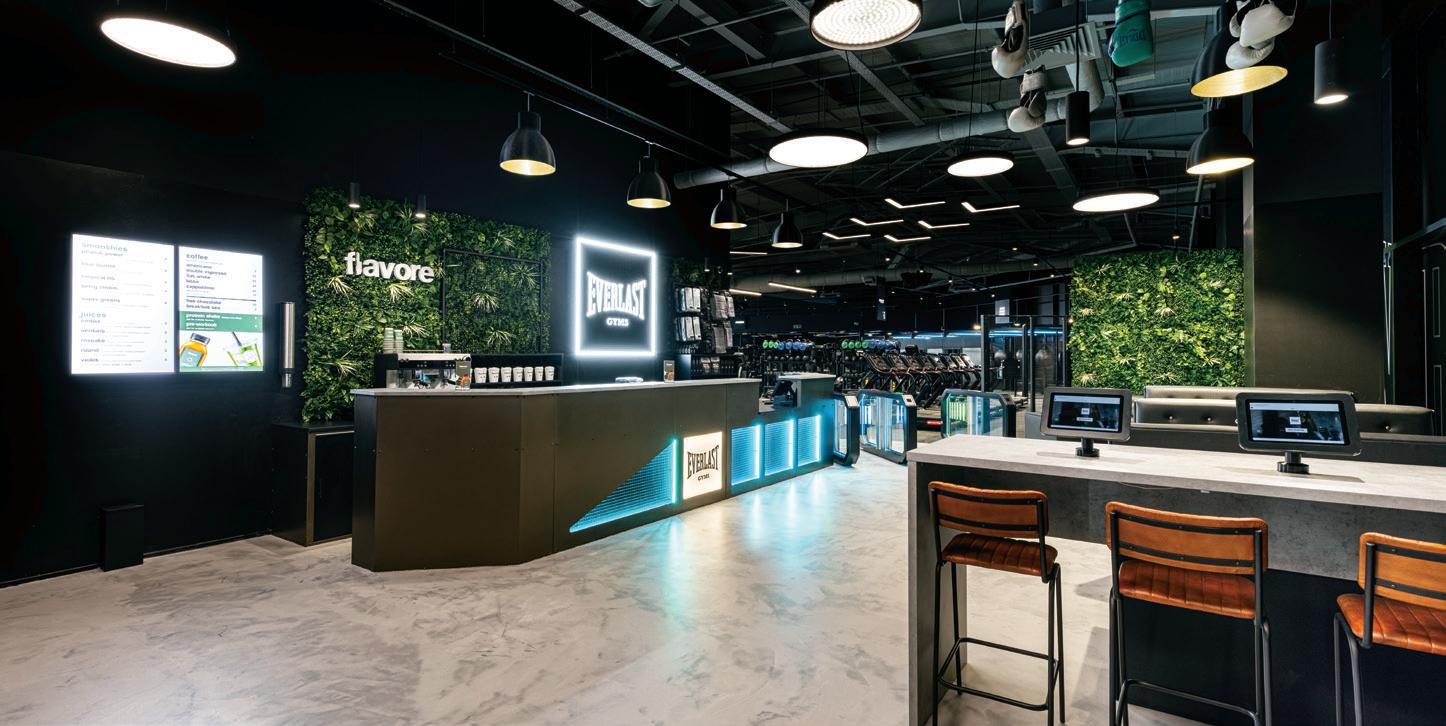
rapid-drying, micro-cement system that combines two separate components: coarse grained Ultratop Lo F and finer grained Ultratop Lo W which are mixed with water to create a trowellable cementitious paste that is applied in layers at 1mm thick. Both components were used at Everlast
micro-cement
Gyms - Shirebrook, creating a surface that was set to foot tra ic within three hours. Mapefloor Finish 58W - which can be applied six to 24 hours a er application of Ultratop Lo – provides additional resistance to wear, abrasion and chemicals, creating an easy care, highly-durable surface.
www.mapei.co.uk info@mapei.co.uk
MONTH IN FM DECEMBER/JANUARY 2023 49 FMJ.CO.UK
SUIT UP FOR WORK WITH SNICKERS WORKWEAR MID-LAYER
CLOTHING
Snickers Workwear’s innovative and sustainable Mid-layer clothing has excellent breathability for e icient body-temperature management when you’re working hard.
The body-mapping designs and sustainable fabrics keep you ventilated as the heat from your body is regulated to give you winter warmth and cooling comfort when you need it.
The new autumn-winter styles include the FlexiWork High-Vis Hoodie which is stretchy, versatile and made from a 2-layer mesh fabric and recycled polyester fibres. This Class 1 Hoodie comes with glow-in-the-dark and flashes and plenty of features to deliver comfort and functionality.
Use FlexiWork Jacket underneath an outer layer on cold days or on its own in milder conditions. It’s made from a functional fabric with a high content of recycled polyester fibres and an ergonomic design for plenty of freedom of movement.
For comfort freedom of movement on chilly workdays, the FlexiWork Fleece Hoodie is ideal. The recycled polyester fleece fabric o ers great insulation while long cu s with thumb grip provide extra protection against cold air.
All Snickers Workwear Mid-layer Jackets, Fleeces, Sweatshirts and Knitwear come in a range of styles and High-visibility options for di erent working environments and weather conditions.
So, to make sure you get the right protection, visibility, flexibility, durability and ventilation, you should check out all the layered Climate Control garments from Snickers Workwear that work together to suit your workday.

www.snickersworkwear.co.uk sales@hultaforsgroup.co.uk 01484 854788
TESSERA INFUSED: CARPET TILES CREATED TO MEET THE NEEDS OF MODERN WORKSPACE DESIGN
Tessera Infused is the latest range to be added to Forbo Flooring Systems’ workspace portfolio. Combining a so organic pattern with natural structures, the new carpet tile range has been designed to encourage a sense of wellbeing within any space.
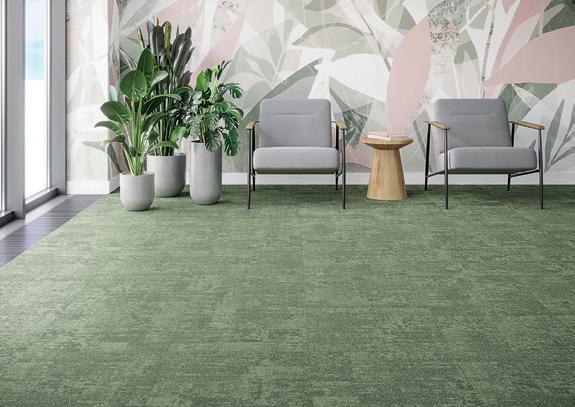
Inspired by the elements and designed to work e ortlessly within commercial interiors, Tessera Infused is a multi-height loop pile carpet tile, which provides a beautiful and organic mottled aesthetic. Available in 12 natural, earthy colourways from the light grey Morning Cloud to the copper-like shade Coral Dream, the colours within the collection have been designed to blend tonally with each other, as well as to closely match other Tessera ranges to create beautifully integrated flooring schemes. Not only this, but Tessera Infused can be combined with Forbo’s Allura Flex Vinyl planks and tiles using the same adhesive, without the need for transition strips, additional profiles or inconvenient build-ups of the sub-floor.
Tessera Infused is the first range to be introduced to Forbo’s new Union Collection. Developed to address the needs of modern workspace design, the Union collection will deliver flexible, practical and adaptable solutions in a series of complementing, usable, commercial ranges.
Within the collection, Tessera Infused will be joined by the so hues of Harmony and the natural intersecting striated design of Accord – all of which will complement Forbo’s Tessera Layout and Chroma ranges.
www.forbo-flooring.co.uk/infused
RICHARD BOULTBEE APPOINTED MD OF WPS PARKING SOLUTIONS
WPS Parking Solutions, a global leading specialist in parking management technologies, has appointed Richard Boultbee as its new Managing Director for WPS UK. He has been recruited to bring new impetus into WPS’ strategy and delivery.
With more than 20 years’ experience, Richard is already a familiar name in the parking industry, notably for his expertise in delivering high quality, solutions-led technologies. He is the current chairman of the British Parking Association in the Yorkshire and Humberside region, and a member of both the Public A airs Board and the Technology, Innovation and Research Board.
Richard says he is excited by the chance to further build WPS’ reputation as one of the UK’s leading parking solutions providers: “Success in the past has come from combining the latest technology with best-in-class a er-sales service and sensible pricing to deliver an exceptional customer experience. I am looking to replicate this strategy at WPS.”
Earlier this year, WPS introduced a new open and adaptive approach to parking that brings together complimentary equipment to its central o ering using both its own, third-party applications and operator services to deliver a seamless parking solution. The WPS Platform is also hardware interoperable, with Prestop, an international manufacturer of premium kiosks, its first third party hardware supplier.
Richard takes over from Simon Jarvis, who has moved into the consultancy sector.
www.wpsparking.com

2N ACHIEVES SECURED BY DESIGN ACCREDITATION FOR ITS IP INTERCOMS AND ACCESS UNIT READERS



2N, the global market leader in internet-enabled intercoms and access control systems, has announced that all of its intercoms and access unit readers have become Secured by Design (SBD) accredited.
SBD is the flagship UK police initiative to help ‘design out’ crime through the use of high-quality, innovative products and processes.
In order to achieve SBD status, 2N’s intercoms and access unit readers (the 2N® Access Unit 2.0 and the 2N® Access Unit M), had to adhere to rigorous test standards required by the police which assessed their resistance to forced entry. When installed along with the 2N Security Relay, all of these products now have the right to carry the SBD logo.

Michael Nicholson, 2N’s Business Development Manager for the UK & Ireland, said: “We are very proud that our intercoms and access unit readers are now SBD accredited. Our products are being incorporated into more and more big projects in the UK – Sópers House, just outside London, and Burlington House in central Manchester are recent examples – and SBD certification is being requested more and more o en, both in commercial and residential buildings. It’s an objective guarantee that our products meet the highest security standards, and it will be a big advantage as we continue to grow our business in the UK.”
https://www.2n.com/en_GB

MONTH IN FM TO ADVERTISE IN MONTH IN FM PLEASE CONTACT DANNY.GRANGE@KPMMEDIA.CO.UK OR CALL 01322 476811 DECEMBER/JANUARY 2023 50
WATERBLADE BRANCHES OUT INTO HOSPITALITY

Up to now we have seen Waterblade as a great way to dramatically reduce your wash hand basin water consumption, and most of our clients are using them in their washrooms. So we are really pleased to be steaming ahead with a client who is fitting Waterblade to over 1,000 hotel room ensuites per month.
Waterblade can reduce the water and energy consumption in your basin, be it in washroom or bathroom. Typically halving the water used in your taps. This can equate to four per cent of the whole building consumption of water and 1.5 per cent of the whole building consumption of energy. This can be achieved quickly, a typical 100 basin rollout happening in a day. You shall achieve a payback period of well under six months, and with the current energy costs we are seeing payback periods dropping as low as one month!
Waterblade can be fitted in minutes to your mixer tap in order to establish compatibility and demonstrate to stakeholders. We are happy to calculate savings for you, based on typical savings data, or entirely on your data should you wish. No Charge. Sample for your premises with more than 20 taps, happy to send you one. No Charge.

Waterblade is WRAS approved and UK manufactured in premises with ISO 9001 and 14001. We believe it o ers the best low flow handwashing performance there is. Typically giving a payback period of under three months. www.thewaterblade.com nigel@thewaterblade.com +44 (0)7956 247392
LEAFIELD BINS SUPPORT THE GOVERNMENT’S NET ZERO TARGET
Leafield Environmental, the leading UK Manufacturer and Designer of recycling and litter bins have been working in partnership with public and private organisations for over 30 years and have introduced a Closed Loop Recycling Scheme and new sustainable bin solutions to support the Government’s target for the UK to be net zero carbon by 2050.
Leafield are fully committed to o ering sustainable solutions to their customers in addition to supplying litter and recycling bins.
Leafield’s Closed Loop Recycling Scheme reclaims old plastic products and reprocesses them into new recycling and litter bins. The unique benefit of this scheme is that the new bins are made from up to 100 per cent recycled plastics, which puts the circular economy at the core of any business. This year, Leafield worked with Bangor University where 900 old recycling bins were collected and reclaimed in the factory into new recycling and litter bins, saving plastic going to landfill.
Leafield’s products are designed and manufactured under one roof by skilled engineers with a strong commitment to improving e iciency


and reducing environmental impact. Leafield’s standard black products are made from up to 100 per cent recycled plastic.
The in-house Leafield design team are dedicated in innovating new bin solutions that are more sustainable for the customer. An example is launching the new Meridian ‘Bagless’ Recycling bin, that features removable liners, to prevent the need for bin bags, saving thousands going to landfill.
 Philip Maddox, Managing Director at Leafield
Philip Maddox, Managing Director at Leafield
Environmental said: “Although we have been supplying recycling and litter bins for many years, it is important for us as a company to o er more sustainable solutions that contribute to our customers net zero targets. As we manufacture and design everything in-house, we can o er a Closed Loop Recycling Service reclaiming old bins that would have gone to landfill into new bins. In addition, we can innovate new products that o er more than just recycling waste, and the ‘Bagless’ Meridian is an example of this, where not only is the unit collecting mixed recycling, but its saving thousands of bin bags also going to landfill.”
He added: “We are fully committed to reducing the environmental impact of our operations with environmental management systems in place to ensure we are compliant with recognised industry standards. Our sustainable practices were recognised at the Inspire Business Awards, where we won ‘Manufacturer of the Year’ in June 2022. We will continue to work in partnership with our customers supplying our bins as well as o ering sustainable solutions to support the Government’s target for the UK to be net zero carbon by 2050.”
MONTH IN FM DECEMBER/JANUARY 2023 51 FMJ.CO.UK
www.leafieldrecycle.com recycle@leafieldenv.com 01225 816541
NHS GP PRACTICE IMPROVES PATIENT ACCESS
As part of a significant redevelopment project, Derwent Practice has improved patient access from the carpark by installing a smart new TORMAX automatic bi-parting entrance system.

Giving clear and easy access to all users, the sliding doors are fully compliant with current legislation.
Powered by the in-house designed Win Drive 2201 operator, a long and reliable working life can be expected thanks to the sophisticated design of the motor which benefits from almost wear-less operation.
As with all TORMAX operators, the Win Drive is tested to significantly more than current industry requirements of one million cycles and can be found installed in busy locations throughout the world.
“With heating bills set to rise even further, an automatic entrance is a sound financial investment,” comments Simon Roberts, MD for TORMAX.
“Not only do our door drives feature low-energy operation but an automatic entrance can itself significantly help reduce heat loss from a building. Sophisticated movement sensors combine with straight-forward, two-key programming to allow the opening and closing speed, hold open time and opening width all to be altered to match how busy the access point is at any time of the day, as well as to reflect the outside weather conditions.
“Used e iciently, the new entrance for the Derwent Practice will significantly improve the ambient temperature in the reception area, as well as helping to cut energy bills.”
www.tormax.co.uk sales@tormax.co.uk 01932 238040
GRAPHENSTONE UK CHOSEN AS PREFERRED PAINT SUPPLIER FOR THE EDEN PROJECT



Graphenstone UK has secured a new supply deal with the Eden Project, a leading educational charity and visitor attraction. The collaboration is a direct result of both companies’ shared visions and ethos over the environmental impact materials can have. Under the terms of the new retail deal, Graphenstone UK will be the Eden Project’s o icial ‘preferred paint supplier’.
With such huge demand in the UK for products that o er tangible and material health benefits, Graphenstone UK will undertake research studies linked to the wider benefits of its paint solutions at forthcoming new Eden Projects.

Patrick Folkes, Founder of Graphenstone UK, says: “We are thrilled to be on this exciting journey with the Eden Project. We have worked hard to become one of the world's most certified sustainable paints companies, and our mission is to ultimately change how people think about and use paint.”
The majority of Graphenstone UK’s formulations comply with Building Standards such as BREEAM, WELL & LEED and hold one of the widest ranges of respected and recognised harm-free certifications on the market, such as Cradle to Cradle Gold, Global Green Tag, and their newest certification, the Eurofins Indoor Air Comfort Gold mark. These independent certifications ensure the complete confidence of their client base thanks to the most rigorous, holistic and independent analysis of their products.
https://info.graphenstone-ecopaints.store/eden-project
JAMES SAUNDERS APPOINTED MANAGING DIRECTOR OF ENFIELD SPECIALITY DOORS
Enfield Speciality Doors has announced the appointment of James Saunders as Managing Director.
James began his career with Enfield Speciality Doors seven years ago in project management, before working across many di erent areas within the company. This has allowed James a complete overview and insight into all aspects of the business.
James says: “I am both delighted and excited to be taking the business into its next phase. We have achieved so much in the past seven years and my insight into the business has allowed me to understand where we need to channel our e orts, so we continue to realise our ambitions.”
Enfield Speciality Doors began life in 1937 and has grown to become one of the most well-established bespoke timber door manufacturers in the UK. With two factories just outside of London, Enfield supplies contractors nationwide, and specialises in the commercial sector - including hospitals and education facilities - for new-build projects and refurbishments.
Enfield Speciality Doors was acquired by Gerda Security, a leading British manufacturer of fire safety and security products, at the end of 2021.

Alastair Thompson, CEO of Gerda Security, says: “Since the departure of Nigel Sill and Richard Ward, James has stepped into the role of General Manager seamlessly, so it was only natural that he was elevated to the position of Managing Director.”

2N ISSUES HOME AUTOMATION GUIDANCE FOLLOWING LATEST SMART HOME MARKET RESEARCH
Research firm Research And Markets recently published a report on the home automation market, which forecast annual growth of 15.2 per cent between now and 2028. Part of this will come from smart homes expanding to incorporate access control.
In response, 2N, the global leader in IP access control systems, has issued guidance to help integrators and installers who are considering including access control into smart homes:
1. Contemplate the full range of security benefits available: There are a wide range of di erent ways in which connecting IP intercoms to home automation systems can deter burglars and make properties safer.

2. Consider all of the convenience upgrades: Integrating answering units into smart solutions can turn them into your central control panel. Connecting IP intercoms can also facilitate package deliveries when the homeowner is out.
3. Choose devices based on their integration potential: Prioritise devices which are based on open standards or with an open API, as they can easily be integrated with third party technology.
4. Remote management equals e iciency: Remote management options like the My2N cloud platform enables integrators to add new smart home features as soon as customers want them.
5. Prioritise cybersecurity: 2N has published best practice when it comes to cybersecurity which integrators and installers should bear in mind when working on smart home projects.
https://www.2n.com/en_GB/ https://bit.ly/3XTxoL6
MONTH IN FM TO ADVERTISE IN MONTH IN FM PLEASE CONTACT DANNY.GRANGE@KPMMEDIA.CO.UK OR CALL 01322 476811 DECEMBER/JANUARY 2023 52
020
www.enfielddoors.co.uk www.gerdasecurity.co.uk sales@enfielddoors.co.uk
8805 6662
ENERGY SAVING PARTITIONING SOLUTIONS FROM


STYLE
Schools, hospitality venues, community centres and other facilities with open plan areas can help reduce energy bills by using a moveable or folding wall.
That’s the advice of Michael Porter, Group Sales Director at leading partitioning experts Style, who says that one option for tackling soaring energy bills is to only use the room space that you need, whilst maximising room hire potential to help pay for rising costs.
“By installing folding or moveable walls, you can divide a large room into two, three, four or even more smaller rooms,” explains Michael.
“As a result, you only need to heat and light the areas you are using and, if you hire out your facilities, you can increase revenue by hosting multiple events at the same time.
“We have many case studies where flexible space has been created in the hospitality sector, at local authority venues and for businesses that provide meeting room hire,” continues Michael. “However, we are now finding that sub-dividing space is also seen as a great way to only heat or light areas required, which is at the forefront of most people’s minds in the current economic climate.”
www.style-partitions.co.uk sales@style-partitions.co.uk
SUIT UP WITH SNICKERS WORKWEAR’S NEW
WINTER JACKETS
If you’re working outside in cold, wet, or windy weather for long periods, work gets tough.
That’s when you’ll need to keep safe from the elements with your own protective shell. A weatherproof outer-layer with one of Snickers Workwear’s Winter Jackets.
This kind of protective shell will deliver e ective wind and water protection to keep you warm, dry and ensure the e ectiveness of the clothing underneath. You’ll want to avoid getting too warm, so insultation combined with ventilation features in your Jackets are absolutely vital.
Check out the new FlexiWork Quilted Jacket, which is windproof, waterrepellent and designed to be durable and weatherproof for great technical functionality.
Like all Snickers Workwear’s Work Jackets, it’s built to be weatherproof enough to keep the elements at bay and durable enough to withstand the wear and tear of hard day’s work but still delivering the level of breathability and ventilation you need for a comfortable and e ective day at work.
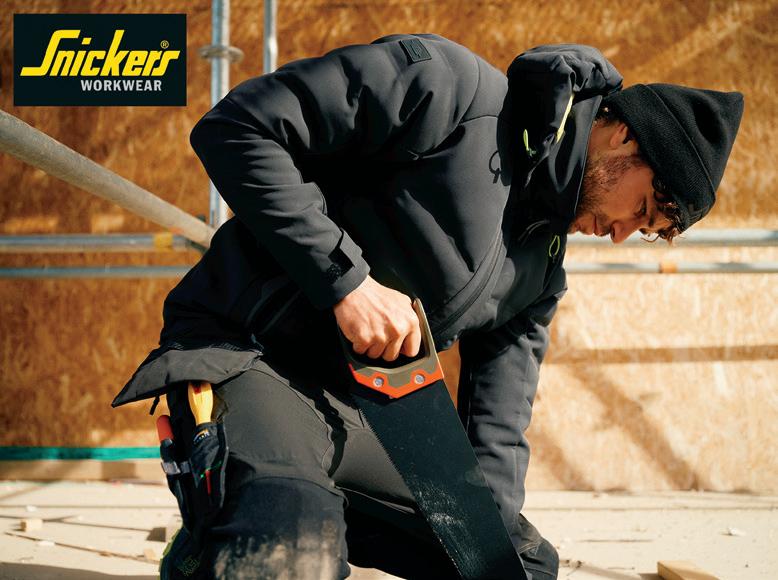
www.snickersworkwear.co.uk sales@hultaforsgroup.co.uk 01484 854788
OVERSEAS EXPANSION: LCM ENVIRONMENTAL ACQUIRES PIS (IRELAND) AND MARKS THE BEGINNING OF THE LCM GROUP IN A


SEVEN-FIGURE DEAL
With their second acquisition in the past month, LCM Environmental expand to Irish soil with the purchase of PIS (Ireland). This acquisition provides the fuel quality and tank infrastructure business with an opportunity to further increase its focus on overseas facility management projects, forecourt services and to serve other public and private organisations that have previously been outside of their scope.
LCM Environmental have exhibited unprecedented growth in the past two years – their turnover has doubled, the service o erings have significantly increased, and their sta numbers have grown accordingly. Following the acquisition of South Midland Installations in October, the company has now proudly taken PIS (Ireland) under their banner as part of the newly formed LCM Group to provide a base in a new location.
Richard Wallace, CEO of LCM Environmental
comments: "It has been a long-term goal of LCM Environmental to acquire an Irish base and expand overseas. We are happy to announce that this is now
a reality, and we look forward to integrating PIS (Ireland) capabilities within the company. The start of the LCM Group marks a new beginning for us, as a business – we are more determined than ever to keep growing within the industry and reach new heights in the coming months!"
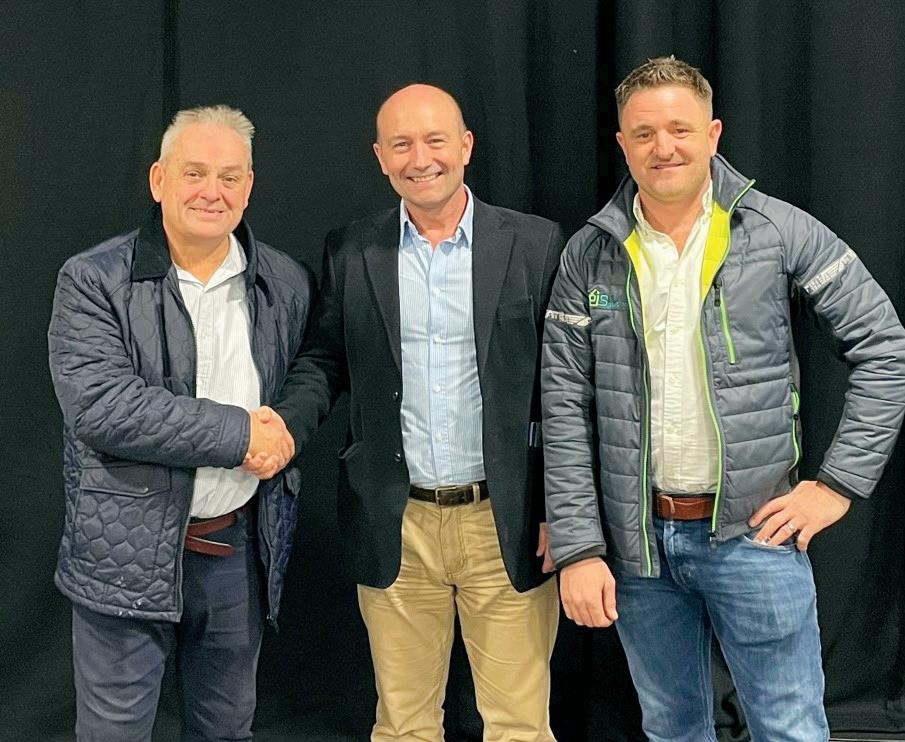
Colin Doyle, General Manager of PIS Ireland, shares: "We are thrilled to become a part of the LCM Group. With our combined in-house capabilities, extensive fleets and trained experts, LCM and PIS complement each other on all levels. Over the years that followed PIS Ireland’s foundation in 2012, the company has established a prominent reputation within its sector and has formed strong relationships with a multitude of clients across the UK."
With over 60 years of combined experience, the two companies can now benefit from each other’s established customer bases and cover a greater footprint across both the UK and Ireland to help drive further e iciencies.
https://lcmenvironmental.co.uk http://www.pisireland.com
MONTH IN FM DECEMBER/JANUARY 2023 53 FMJ.CO.UK
P-WAVE EXPANDS URINAL SCREEN RANGES, INTRODUCING LONGER LASTING AND BUDGETFRIENDLY OPTIONS
Air-freshening specialist P-Wave has added two new urinal screen options to its market-leading ranges.

P-Wave 360 reduces change-outs
The powerful new P-Wave 360 urinal screen delivers the highest degree of splash deflection, and freshens urinals for up to 60 days, with an advanced fragrance formula created specifically to ensure longevity.
P-Wave 360 is designed with both vertical and horizontal protrusions, providing the highest level of urine deflection and di usion available in a 60day screen. The unique two-sided design is ideal for eliminating urine splash, but also prevents incorrect installation, ensuring walls, floors and trousers are always kept dry. P-Wave 360 is available in two popular fragrances: Cotton Blossom, and Mango.
Maintaining washroom hygiene and freshness at any cost with WCBasix The 100 per cent recyclable WCBasix Urinal Screen will feature a good amount of fragrance for the price point (around 50 per cent of a normal P-Wave screen, and double that of a standard budget screen, depending on the brand). Available in two fragrances – Fresh Linen and Mango Mist – it is designed to reduce urinal splash-back and has anti-splash bristles on both sides. The WCBasix Urinal Screen lasts for up to 30 days and is ideal for contract cleaners and FM companies, as they are packed in a resealable bag of 16 screens per box, which reduces single use plastic.
DEMAND FOR JANGRO’S E-LEARNING SYSTEM REACHES RECORD HIGH
Jangro, the largest network of independent janitorial and cleaning distributors in the UK and Ireland, announces its training so ware has 20,000+ users.
As the trend for learning and professional development grows, many commercial cleaning companies are recognising the benefits of training their sta . Indeed, Jangro’s award-winning online training programme, the Jangro Learning Management Solution (LMS), has recently surpassed the 20,000 user-mark.

This achievement demonstrates Jangro’s commitment to learning and development.
Developed eight years ago, the LMS is a fully interactive, award-winning e-learning platform that has grown phenomenally since it launched. Highly accessible, it is optimised for all devices and is o ered free to Jangro customers and their sta .
It has also been accredited by the CPD (Continuing Professional Development) Certification Service.

The Jangro LMS o ers courses with varying lengths, enabling users to train remotely at times that suit them, and to dip in and out of sessions as required. Modules includ Colour Coding and Infection Control, Health and Safety, Washroom Hygiene, COSHH, Floor Care, Kitchen Hygiene, and many more. Jangro also o ers a versatile system to ‘train on the go’ with their Task Cards –brief, highly visual documents containing step-by-step instructions for product usage and safety information.
www.jangrolms.net 01204 795 955
GRAVITY BUSINESS SOLUTIONS UNVEILS NEW CLIENT EXPERIENCE MANAGEMENT SOFTWARE
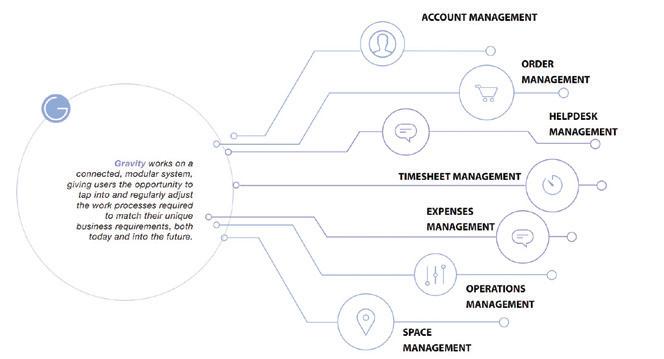

Newly launched; Gravity Workplace optimises Workplace Processes to create a consistently positive Customer Experience, key to creating long term customer loyalty and financial growth.


Gravity Workplace is a CXMS (Customer Experience Management System) uniquely founded upon a combination of CRM (Customer Relationship Management) and IWMS (Integrated Workplace Management Systems) principles. The so ware allows companies to better understand and manage their customer organisations; ensuring all touchpoints are with the right people, at the right time, with the right information. Gravity works
on a connected, modular system, giving users the opportunity to tap into and regularly adjust the work processes required to match their unique business requirements.
Gravity addresses:
• Poor internal communications.
• Missed call backs.
• Di iculty in finding up to date customer information.
• Lost or unfulfilled orders.
• Aged or incomplete support requests.
• Poor resource and project management.
The di erence? Gravity focusses on value rather than functionality. Whatever subscription level is purchased, clients have access to all the functionality Gravity has to o er. Gravity also has a ‘no tie-in policy’ which means you can cancel your subscription at any time.
Gravity Workplace was built from the ground up with the Customer Relationship Experience placed at the very centre of our solution. Finding new partners is a hard and o en painful road, so we
believe in helping organisations to walk the path of nurturing and expanding the customer relationships that they already have. Our Account Management so ware facilitates customer information sharing across organisations. We consider Clients, Suppliers, Contractors and Employees as equally important. Generating positive experiences allows for a much higher chance they will want to build a lasting relationship. https://gravity-workplace.com
MONTH IN FM TO ADVERTISE IN MONTH IN FM PLEASE CONTACT
OR CALL 01322 476811 DECEMBER/JANUARY 2023 54
DANNY.GRANGE@KPMMEDIA.CO.UK
https://p-wave.co.uk
LANCER SCOTT HIRES NEW MD TO HEAD UP FM DIVISION

The construction and facilities management company has appointed Daniel Knight as Managing Director of its FM division.
Knight has a wealth of experience, is an accomplished leader and brings a track record of delivering sustainable business growth.

He has held senior roles at CBRE and previously with Norland Managed Services. Knight was the Business Unit Director at CBRE for Wales and the South of England, and was the driving force behind the rise of Norland in the south-west and oversaw the transition of the regional business following its acquisition by CBRE.
ATALIAN SERVEST APPOINTS DIGITAL SOLUTIONS MANAGER



Atalian Servest has appointed Andy Porter as Digital Solutions Manager to excel the company’s technological approach across its full-service FM o ering. As part of the FM service provider’s e orts to implement, maintain and continually innovate with technology enabled FM, Porter will challenge the status quo and implement new solutions that focus on elevating e iciencies and services to customers.
Porter brings over a decade of experience in project management, data analytics, logistics, innovation and process development from his previous role at City Facilities Management.
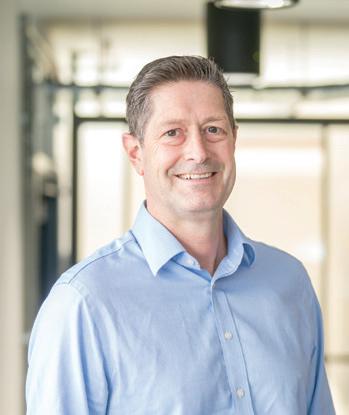
He implemented solutions for City Facilities Management across 600 sites, including retail, distribution and home o ices throughout the UK and Northern Ireland, playing a fundamental role in significant change projects and initiatives designed to optimise performance, improve service quality, and reduce costs.

NEW COMMERCIAL DIRECTOR AT LITMUS

Catering and facilities management consultancy, the Litmus Partnership, has announced Candice Finn is joining the Litmus Board as Commercial Director.

Finn brings with her a wealth of knowledge and experience collectively acquired through working within every corner of facilities and foodservice provision. She has spent the past eight years at Sodexo, most recently working within the Independent School’s sector.
In her role at Litmus, Finn will provide overarching strategic insight, planning and business development support to all areas of the Litmus Business and its partners, in order to deliver targeted growth and profitability.






FACILITIES MANAGEMENT JOURNAL JOBS
w w w b u i l d r e c c o m i n f o @ b u i l d r e c c o m If you are looking to grow your facilities team across soft services, engineering or facilities management, our FM recruitment team have a rapidly expanding network of job seekers available for temporary, permanent or contract vacancies. F o r m o r e i n f o r m a t i o n a b o u t h o w w e c a n h e l p y o u r o r g a n i s a t i o n , p l e a s e v i s i t b u i l d r e c . c o m o r c o n t a c t t h e F a c i l i t i e s M a n a g e m e n t t e a m o n 0 2 0 3 1 7 6 4 7 9 3 Y O U R F A C I L I T I E S S E C T O R R E C R U I T M E N T P A R T N E R T O T A L F A C I L I T I E S M A N A G E M E N T | E N G I N E E R I N G | M A I N T E N A N C E We understand the importance of facilities management and those that work within it. That’s why we place such emphasis on connecting leading FM professionals with top employers. DECEMBER/JANUARY 2023 55 FMJ.CO.UK
CAREERS
PEOPLE
FM
-
My military career began in 1996 when I joined the RAF and when I le in 2006 I remember feeling overwhelmed. I was out of my depth and navigating this new world of work where nothing felt as stable as the military. When I discovered the world of facilities management, things felt like they were falling into place. My first role was something I felt comfortable in as it was familiar from my RAF days. I joined Churchill in 2011, and the rest is history.
As Churchill was developing its diversity and inclusion policy, we discussed how to target people from di erent socio-economic backgrounds. As a veteran, I suggested targeting people like myself as they suit the FM sector well. I started developing my ideas, and fast forward to this year, we are now an ERS gold award winner. It was an honour to be granted the ERS gold award from the armed forces covenant as recognition of the work we do.
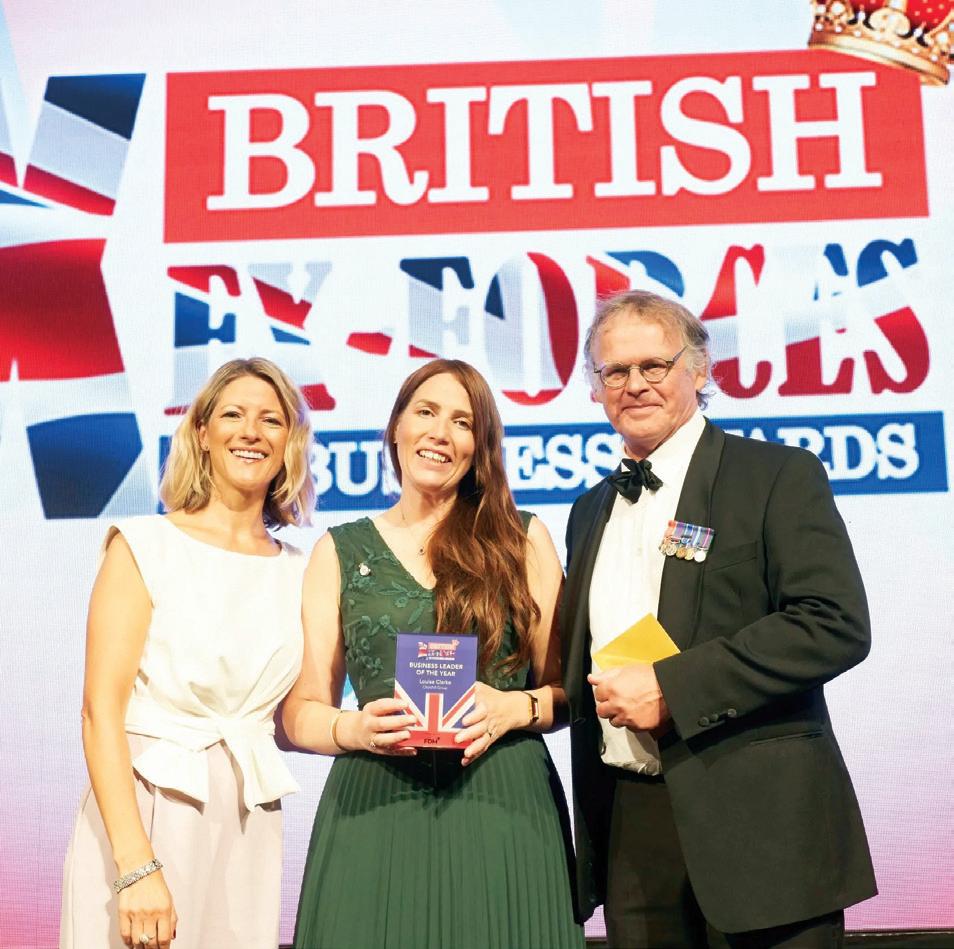
THE VETERANS ADVISORY BOARD
The Veterans Advisory Board (VAB) is a committee that provides advice, challenge, and diversity of thought to the government on veteran’s issues. When opportunity came to sit on the Board I thought that with everything we’d done internally at
Churchill, it would be the right time to apply. When I heard back eight weeks later that I was invited to join the Board, I was delighted at the opportunity to make a real di erence to the veteran community. Its strategy revolves around themes which truly resonated with me and my experience in the UK military. Employment and education skills is
positive change.
Other research projects that the Board is pursuing, such as the LQBTQ+ project, are also extremely important for the world of the UK armed forces. Times have changed dramatically since I first joined the RAF, but the impact of older generational opinions of those in the LGBTQ+ society can still have harmful e ects today. It’s important to the VAB that we investigate the e ects this has had upon veterans as well as their families and the people around them to prevent this from happening again.
Additionally, there is further research taking place regarding women in the armed forces, how they have been treated, and what impact they have made both in the past and the potential for their future. My lived experience as a woman in the RAF demonstrated the lack of support for women in the male-dominated field, and I know that needed to change.

ENHANCING THE VETERAN NETWORK
Transitioning to civilian life is quite daunting, and the thought of beginning a whole new career is enough to give anyone anxiety. It is important for veterans to remember that they have so many great transferrable skills from their time in the armed forces. They have all the ammunition they need to get great jobs; they just need to know how to use it. That’s where the work of the VAB comes in. The strategy and research that is conducted by the Board is there to assist and develop the livelihoods of those adapting to the civilian world.
Meanwhile, we have been busy at Churchill setting up our new partnership with JobOppO; a job platform created by and for use by UK veterans. I am interacting with veterans on their platform, whether they are interested in Churchill or not, to help find the right position for them.
completely my remit considering my work at Churchill, and our recent partnership with veteran employment community JobOppO. Ensuring that those adapting to civilian life and work are given the necessary skills to help them transition to this new way smoothly, and with success, is essential.
HEALTH AND WELLBEING
Mental health services for ex-military need improvement, as the transition to civilian life can be anxiety-inducing. Ensuring service personnel are not le behind is key for mental health services to improve. By providing more mental health and employment help, fewer veterans will end up in custody, or be likely to take part in illegal activity. Civilian housing is also another huge factor. We want to ensure all veterans have a safe and secure place to live, or the facilities to help if this isn’t the case. Preventing more veterans from being homeless is a must. All the elements of the strategy put forward by the VAB are extremely important for the development of a veteran’s life and providing
We have also set up internal mentoring and support networks, with an area of the Churchill website specifically for ex-service personnel, including a mailbox that goes straight to me. These could be any general queries or just people looking for employment, and I can then signpost them to where there is support available.
This network led us to set up several projects, including a blog series around ex-service personnel starting their new career in FM, as well as coaching and CV writing support sessions. The main area we are focussed on is educating other likeminded businesses on joining the covenant, veteran employment, and mentorship for veterans.
I hope that through my work with Churchill and involvement with the VAB, I can help provide support to veterans in FM and throughout the UK.

FACILITIES MANAGEMENT JOURNAL JOBS
PRECISION
Clarke, MD of Operations at Churchill, describes the positive contribution veterans can make to FM and how the Veterans Advisory Board is helping former service people transition to civilian life LATEST JOBS ON FMJ HEAD OF FACILITIES Salary: Circa £40,000 – £46,000 PA Location: Bartestree Hereford https://bit.ly/3YdJwa2 FACILITIES MANAGER
£45k - 50k per year
Guernsey
BUILDING SERVICES ENGINEER
£31k per year
jobs.fmj.co.uk Over 250 jobs live on site FM CAREERS - RECRUITMENT DECEMBER/JANUARY 2023 56
MILITARY
Louisa
Salary:
Location:
https://bit.ly/3uA9G9l
Salary:
Location: Solihull https://bit.ly/3VIftoV
YOUTHFUL PROGRESS
Sarah Hale, Social Value Manager, Amey, on putting essential skills at the heart of young people’s training programmes
relationships
Not all organisations are using their Apprenticeship Levy, or they use it for senior management roles, which was not the intended purpose.
WHAT BUSINESSES CAN DO TO HELP
Provide greater visibility and understanding of all the roles and requirements across their sectors, for infrastructure management organisations, this might be roles in design, construction, and maintenance. Employers should o er visibility on what a working day or week looks like, which will help young people decide on careers and qualifications. The more businesses can share and explain these ‘routes in’, the more likely they will be to encourage young people into their sectors.
As one of the UK’s leading infrastructure services and engineering companies, we provide industry-leading employment opportunities, training and apprenticeships, and recognise the role we can play in opening up such opportunities in wider industry.
We believe that providing meaningful work and investing in people is fundamental to both social and economic stability and recognise that while talent is spread equally across the UK, opportunity is not. Business has a key role in addressing inequalities in education and skills to ensure everyone, no matter their background, has a chance to ‘get-in’ and ‘get-on’.
A key enabler for this is the focus on essential skills, the highly transferable skills needed by almost everyone to do almost any job – such as teamwork, speaking and listening, and problem solving. The skills sit between basic (literacy, numeracy and digital) and technical (operationally specific). These skills are particularly important for those in their early careers.
Higher levels of essential skills pay a dividend as a wage premium of around 15 per cent or £3,400 per year for full-time workers, particularly when combined with the ability to transfer and apply those skills. This supports a robust economic argument for investing in these skills. It is crucial that employers give young people the opportunity to develop essential skills within their employment, to help level the playing field.
Earlier this year, to help tackle this inequality, Amey brought together experts from Investors in People, The Duke of Edinburgh’s Award (DofE), Skills Builder Partnership and Business in the Community. The event was co-located with a meeting of 28 Amey employees completing their DofE Gold Award to enable Amey’s young people to join the debate and inspire
The full report is available to download at: www. amey.co.uk/bolder-steps-together/our-social-valuestories/putting-essential-skills-at-the-heart-of-youngpeople-programmes/ but below are some partner observations from the event and some advice to employers.
CHALLENGES FOR YOUNG PEOPLE
Organisations believe young people are missing the skills of emotional intelligence, risk taking, and being creative on entering the workplace. In turn, many young people believe they are lacking confidence; personal skills and being able to interact with people; communication; teamwork; project management; and basic ‘life skills’ such as financial awareness, tax and pensions, on entering the workplace.
Government priorities continue to remain on core subjects (English, science and maths), but while Arts based subjects tend to be better at enhancing essential skills, they are o en the first to be dropped. Meanwhile, school students have mixed access to, and visibility and understanding of, possible career options but during school and university, the majority really don’t understand the world of work.
There is also a lack of visible role models for school students – and they o en don’t represent the backgrounds and diversity of the students themselves. The preference is for these to be ‘local’ and mix of ages, helping young people to identify and connect with opportunities and career paths.
There is an expectation from young people that, when they enter the world of work, they will physically see people. With the increase in hybrid working, there needs to be a concerted e ort for face-to-face interactions and opportunities to network and develop
Employers should be much more proactive in recruitment – tapping into wider groups to access diverse skills and experience – and being more visible in communities. Young people o en need support and role models to encourage them to apply for opportunities.

The Skills Builder Framework should be used across education so that it provides a familiar language for young people when embedded into job descriptions - thus supporting accessibility. This language could also be used within interview questions or tasks, or by assessors to evaluate candidates’ abilities.
Alongside this, consider providing advice, tips or practice for online interviews but also support and encourage face-to-face interactions and opportunities for young people to network and develop interpersonal relationships. This is particularly important with the increase of hybrid working.
Employers can also help to create a positive image of young people by sharing their successes and the value they bring.
Within the built environment it is important to engage with Tier 1 suppliers, encouraging the principles of essential skills throughout the supply chain by recruiting for potential and training for technical skills.
Finally, the FM sector needs to advocate for change. Incentivise our networks (such as supply chains) to do outreach activities and excite people about their businesses.
The session was incredibly helpful to see what we’re already doing well and what we could add to our young people outreach and programmes. Amey has committed to reporting regularly on these issues raised to stakeholders and the wider industry, as well as continuing to champion robust conversation and action.
For more information visit: https://bit.ly/3B3jwnD
FM CAREERS - TRAINING DECEMBER/JANUARY 2023 57
conversation on what more can be done.
FACILITIES MANAGEMENT JOURNAL JOBS
Levy UK to pay all employees the Real Living Wage
Levy UK, the sports and hospitality division of Compass Group UK and Ireland, has announced it will be paying all its UK employees – including variable hours workers – the Real Living Wage or above from 1 January 2023.

The Real Living Wage Foundation announced in September that the new Living Wages rates would increase by 10.1 per cent rise to the UK rate and an 8.1 per cent rise to reflect current inflation. The new Real Living Wage rate is £10.90, and the London Living Wage rate will rise to £11.95.
Levy employs over a thousand full-time workers and has a 14,500 strong variable hour workforce to support its clients from sports stadia, arenas and conference centres across the country. Levy has worked closely with clients to move to this positive position, many of which are also RLW employers, such as Chelsea Football Club and Edgbaston.
Umbrella Training supporting ex-o enders into hospitality apprenticeships
Nationwide training and apprenticeship provider for hospitality and corporate sectors, Umbrella Training, has joined forces with social business and charity The Forward Trust to launch the hospitality industry’s first formal apprenticeship pathway for ex-o enders. The Forward Trust has developed a new pilot scheme called the Prison Apprentice Pathway (or PAP), supported and funded by charitable trust Porticus UK. The aim is to create an apprenticeship pathway that will introduce more people to the hospitality sector. The project identifies those who are within three months of release and might be suitable for an apprenticeship when they get out.
Older generations are less than satisfied with their workspaces
A study by Unispace – Creating a Multigenerational Workforce – has found that despite the increasing percentage of more mature professionals in the workforce, this demographic does not feel engaged by today’s o ice environments. According to the Unispace study of 3,000 employees working across Europe, older generations are less than satisfied with their workspaces, with threequarters of those over the age of 45 admitting that there was room for improvement in their workplace, citing a desire for more private areas, better amenities and more outdoor spaces.
UK salary rises forecast to hit 5 per cent in 2023 due to inflationary pressures on pay
The overall average salary increase in the UK is forecast to rise to five per cent in 2023, as the majority of organisations (86 per cent) react to inflationary pressures on employee pay. According to WTW’s latest Salary Budget Planning Report, while current pay budgets have risen to 4.2 per cent, more than two-thirds of companies (68 per cent) have spent more than they originally planned on pay adjustments for the last 12 months.




In addition to pay
pressures, two thirds of organisations (65 per cent) also say they are experiencing problems with attracting and retaining talent; a figure that’s more than tripled since 2020. In fact, the tight labour market has been an influencing factor for more than half of companies’ (57 per cent) decision to increase salary budgets.
Paul Richards, Reward Data Intelligence Leader for Europe at WTW said: “As inflation continues to rise and the threat of an economic
downturn looms, companies are using a range of measures to support their sta during this time. Pay rise increases are forecasted to hit five per cent next year, which is a significant jump compared with the 3.2 per cent increase in January of this year.
“But despite inflationary pressures, organisations have grappled with attraction and retention issues, which has also been a driver not only for pay rises, but adjustments to benefits, culture and employee experience.”
Engineering skills shortages intensify
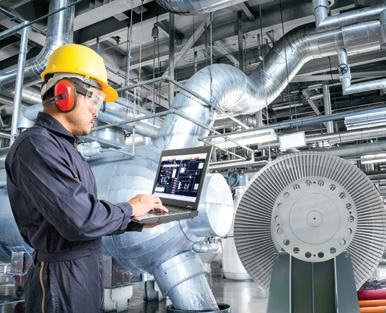
Vacancies across the engineering sector increased 11 per cent between June and August before eventually slowing, dropping two per cent between August and October according to the latest analysis by the Association of Professional Sta ing Companies (APSCo). This slowdown in recruitment activity as economic uncertainty began to impact the UK, saw vacancy levels drop one per cent in October when compared to January.
While the growth in jobs has stalled, the analysis suggests skills are still in short supply, with the number of people applying for engineering roles dropping 44 per cent between January and October. Pay increased steadily between January and July, up 4 per cent during this period while October saw a one per cent increase in remuneration for engineering roles.
Ann Swain, Global CEO of APSCo commented: “We’ve seen demand for engineering professionals increase steadily since June having gone through peaks and troughs in the first half of the year. Pay has also increased consistently as this demand for talent grows. However, the data shows that applications continue to fall, largely driven by engineering skills shortages.”
She continued: “It’s crucial that the government enacts policies that will bring stability for workers, including announcing the long-awaited Employment Bill and revising policies to better recognise and support the unique needs of the highly skilled contractor labour market.”
FM CAREERS - NEWS FACILITIES MANAGEMENT JOURNAL JOBS
DECEMBER/JANUARY 2023 58









































































































www.VEXOint.com INTELLIGENT CONTROLS SHOULD NOT COST THE EARTH Tel: 01767 500 150 S-B S M S -B S M JOIN THE SMART ERA... BUILDING SERVICES CONTROL SYSTEMS WITH WIRELESS FIELD TECHNOLOGY AFFORDABLE . INTERACTIVE DYNAMIC . technical@VEXOint.com N-RG HUB X-POT LIVE Four pre-configured panel sizes streamline pricing, selection and application, to Launch your Smart BMS Control Journey. Unrivalled 4G Connectivity Delivers a Truly Wireless Worldwide Cloud Platform, For Effortless Remote Commissioning, Fault Detection and Dynamic Control. Our All-In-One Closed System Health Monitoring System, Provides you the Information to Optimally Control and Monitor your System Potential. Unlock Energy Savings with the N-RG Hub, with Live Monitoring, Interrogation and Smart Dynamic Control to enable you to Reduce you Carbon Footprint. IOT LoRaWan Technologies Enable the S-BMS Control Panel to Reach Further, with our Innovative Range of Reliable Wireless Sensors, Valves and TRV’s. S-BMS 4G LoRaWan
















































































































































































 PAUL BAGUST, HEAD OF PROPERTY STANDARDS, RICS
PAUL BAGUST, HEAD OF PROPERTY STANDARDS, RICS





































































































































































































































 Philip Maddox, Managing Director at Leafield
Philip Maddox, Managing Director at Leafield





















































































































































